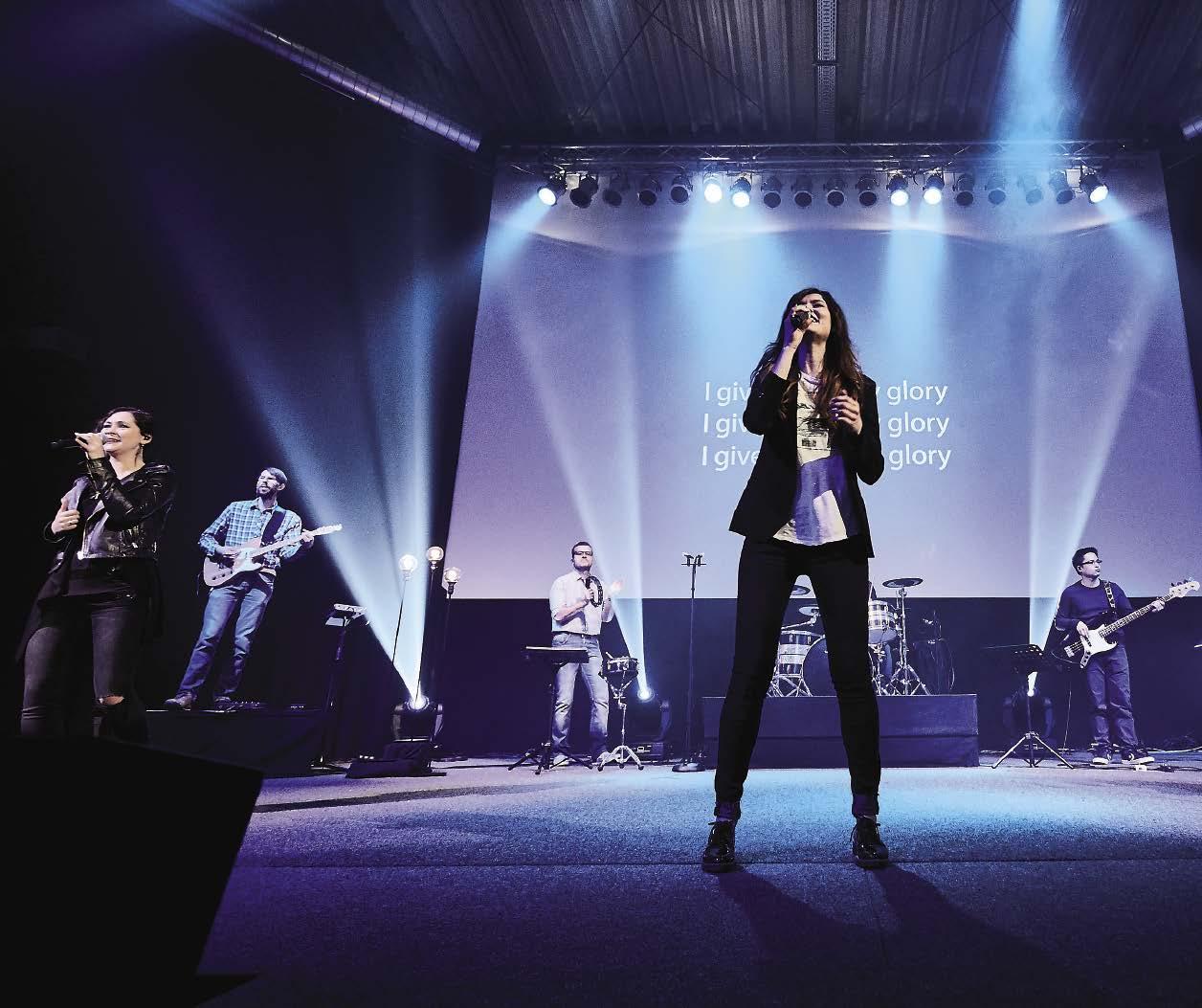






A/V LIGHTING SOUND REINFORCEMENT RECORDING STAGE SOUND BROADCAST March-April 2017 CONFIDENT SWITCHING Getting the best out of video switchers SETTING A LIGHTING GRID How to find the right position MAXIMISING MONITORING FCB Bremen’s monitors enhance the worship experience Singapore: MICA (P) 100/07/2016 PPS 1644/05/2013(022954) NEW SURROUNDINGS Opening Calvary Bible Presbyterian’s sanctuary A/V LIGHTING SOUND REINFORCEMENT RECORDING STAGE SOUND BROADCAST March-April 2017 CONFIDENT SWITCHING Getting the best out of video switchers SETTING A LIGHTING GRID How to find the right position MAXIMISING MONITORING FCB Bremen’s monitors enhance the worship experience Singapore: MICA (P) 100/07/2016 PPS 1644/05/2013(022954) NEW SURROUNDINGS Opening Calvary Bible Presbyterian’s sanctuary WAVL Front Cover.indd 1 27/01/2017 16:59 A/V LIGHTING SOUND REINFORCEMENT RECORDING STAGE SOUND BROADCAST March-April 2017 CONFIDENT SWITCHING Getting the best out of video switchers SETTING A LIGHTING GRID How to find the right position MAXIMISING MONITORING FCB Bremen’s monitors enhance the worship experience Singapore: MICA (P) 100/07/2016 PPS 1644/05/2013(022954) NEW SURROUNDINGS Opening Calvary Bible Presbyterian’s sanctuary A/V LIGHTING SOUND REINFORCEMENT RECORDING STAGE SOUND March-April CONFIDENT SWITCHING Getting the best out video switchers SETTING LIGHTING GRID find the right position MAXIMISING MONITORING FCB enhance the worship Singapore: MICA 100/07/2016 PPS 1644/05/2013(022954) NEW SURROUNDINGS Opening Calvary Presbyterian’s sanctuary
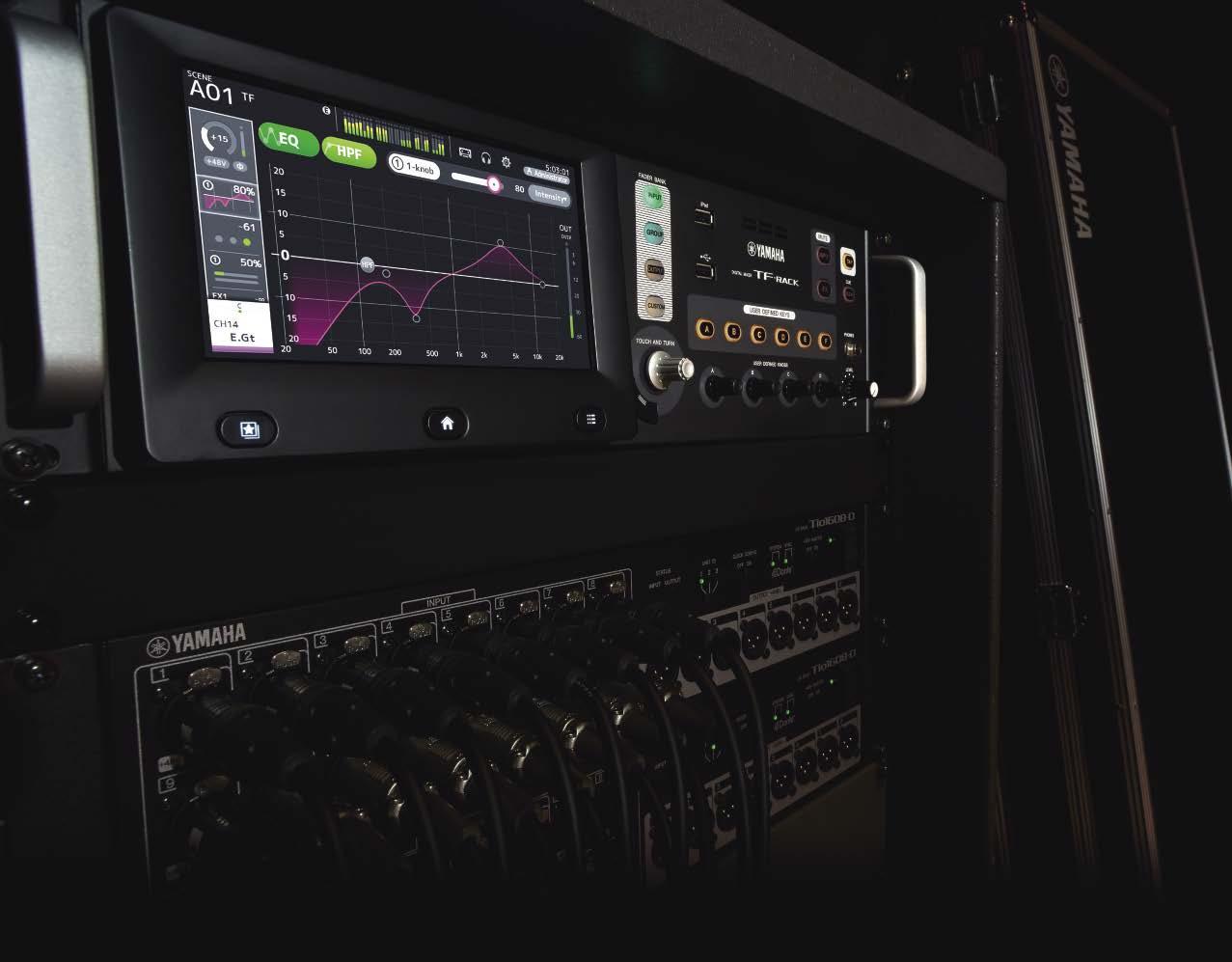


















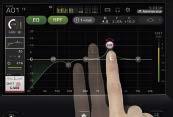
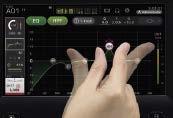


Issue 46 March-April 2017
CONNECT CHURCH MAKES A FRESH START Full AVL setup for rebranded church
LAKEUDEN RISTI GAINS INTELLIGIBILITY Renkus-Heinz solves an old problem







AUDIO FEEDING THE 5,000 Celebrating St Martin of Tours
SHARED STORAGE FOR POWERVISION TerraBlock installed in India
LIGHTING UP EAGLE BROOK Multi-site lighting across Minnesota
MIXING AND MONITORING AT SOUTHVIEW Allen & Heath helps Canadian church

VATICAN CITY IN UHD The new 4K OB van at CTV
ROSS VIDEO OPENS NEW ASIA HQ Inside the Singapore facility
A LIGHTNING UPGRADE Lightning strike leads to new systems in Coral Springs
CLEANING UP THE SOUND Gonkju Central Methodist upgrades with Amate
SPIIDERS SHINE ON EVERY NATION Robe lights for Every Nation Conference


TAKING SOUND TO OVERFLOW CROWDS Chantharam Temple goes with EV
A CUSTOM SOLUTION HOISTED Unique roll-up LED screens for First Baptist
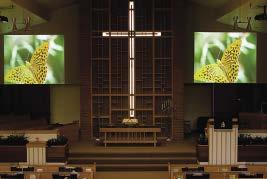
ACHIEVING CLARITY BY-THE-SEA Discrete sound for St Andrews by-the-Sea

PEARL CITY CHURCH CONNECTS Indian church opts for d&b and Avid

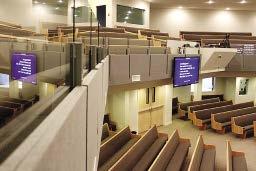

for
As we produce each issue of WAVL, the diversity of worship experiences across the nation-hopping span of our coverage is endlessly fascinating. For some religions, worship is a consistent experience regardless of locale. For others, there are differences evident by country, by creed, by denomination, by individual congregation.
The commonality is the desire to immerse the worshipper in the moment, focusing their attention, heightening their senses, creating a now that is compelling, that opens them to the message.

This immersion can be simple, based on tradition, on familiar rituals and on the unity of fellow worshippers, providing an atmosphere that carries a worshipper’s spirit along with those around them – a bonding through shared experience. Where technology plays a part on this end of the wide spectrum of worship styles, is in a support role that is unobtrusive to the experience.
Alternatively, technology can be used creatively to set the stage for a heightened experience. At this other extreme on the spectrum of worship styles, light, colour, movement and sound become elements in creating a wave of emotion that steers the worshipper’s mind and spirit. But even with all those elements in play, the technology is employed not to be a spectacle in and of itself. The goal is not flash and sparkle, but rather, the same bonding that is the goal of a simple approach. Across the spectrum, technology is but a tool that, regardless of how and to what degree it’s employed, is merely there to aim attention to a higher power that is the true draw of worshippers worldwide.
Telephone: +44 (0)1892 676280 Email: fwells@worshipavl.com

March-April 2017 WORSHIP AVL 3 Simon Luckhurst: +44 1892 676280 +44 1892 676282 SENIOR REPORTER sluckhurst@worshipavl.com Caroline Moss: T: +44 1892 676280 F: +44 1892 676282
EDITOR cmoss@worshipavl.com Nick Smith: T: +44 1892 676280 F: +44 1892 676282 DIGITAL MEDIA MANAGER nsmith@worshipavl.com Carolyn Valliere: T: +1 562 597 1534 SALES ASSOCIATE cvalliere@worshipavl.com Adrian Baker: T: +44 1892 676280 F: +44 1892 676282
MANAGER abaker@worshipavl.com Sue Gould: T: +44 1892 676280 F: +44 1892 676282 ADVERTISING DIRECTOR
James Ling: +44 1892 676280 +44 1892 676282 SENIOR EDITOR
Richard Lawn: T: +44 1892 676280 F: +44 1892 676282 GENERAL MANAGER rlawn@worshipavl.com James Cooke: T: +44 1892 676280 F: +44 1892 676282 REPORTER
CONTENTS
CONTRIBUTING
PRODUCTION
sgould@worshipavl.com
jling@worshipavl.com
jcooke@proaudioasia.com
MEET THE TEAM
COVER FCB Bremen CIRCULATION circulation@proaudioasia.com PUBLISHED BY Blank Canvas (Publishing) Ltd, 17 Upper Grosvenor Road, Tunbridge Wells, Kent TN1 2DU, United Kingdom
MICA (P) 100/07/2016 All rights reserved. No part of this magazine may be reproduced or transmitted in any form or by any means, electronic or mechanical, including photocopying, recording or by any information storage and retrieval system, without prior permission in writing from the copyright owners.
LICENCES Singapore:
Polish castle church 16 MARTIN AUDIO FILLS ABBA PATER Larger premises means larger sound system 17 CLARITY COMES TO THAI TEMPLE L-Acoustics installed at Wat Tha Sung 18 DEPLOYED FOR JOY Upgrading Shekinah Methodist Church 18 EDUCATION NEWS Training from RCF and Sennheiser 34 SEMINAR DIARY Upcoming training for church A/V technicians 34 PROTECTING YOUR HEARING Gordon Moore explains how to protect your ears 36 CONFIDENT SWITCHING Getting the most out of your video switchers 40 LAYING OUT A LIGHTING GRID John Black tells you what you need to know 42 MAINTENANCE How to keep your dimmers in good working order 46 COVER: MAXIMISING MONITORING Reducing stage volumes at FCB Bremen 20 JERICHO IN SINGAPORE Gospel Light is home to Singapore’s first Danley Jericho 22 RACK AND ROLL WORSHIP Touring-style setup for First Baptist Concord 24 PROGRAMMED FOR PROGRESS Dante first for Hong Kong’s Yan Fook Church 28 NEW SURROUNDINGS Equipping Calvary Bible Presbyterian’s new sanctuary 30 A NEW LEASE OF LIFE Giving a lighting system a new home in South Africa 32 BASS TRAPS An acoustic solution to overwhelming bass 48 LED DISPLAYS Trends and innovations in the LED display market 50 LED VS CONVENTIONAL FIXTURES What should you consider for your HOW rig 54 BUYING GUIDE What to know before buying projection screens 56 PRODUCTS Equipment launches and updates 58 THE TECH VIEW ChristChurch London talk logistics 74
LAUDA AND NEXO TAKE THE CASTLE Audio upgrade
LEADER NEWS KNOWHOW PROJECTS TECHNOLOGY 22 48 32 56 IN THIS ISSUE www.proaudio-central.com www.proaudioeducation.com
Frank Wells Editor
Connect Church makes a fresh start
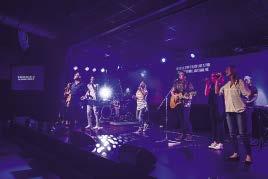
NEW ZEALAND: Following a relaunch under a new name and new look, Connect Church in New Zealand also opted to completely replace its ageing audio, lighting and integrated A/V system, enlisting the help of Elevate Consulting Ltd. Located on New Zealand’s Kapiti coast, the church has now been outfitted with dBTechnologies loudspeakers and Cameo lighting fixtures.
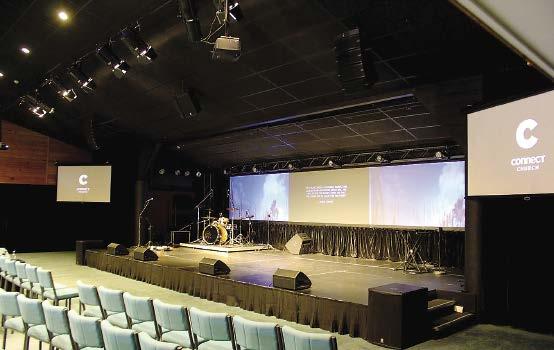
‘Their existing FOH audio system had seen better days,’ offers Kieran McKinlay, director of Elevate Consulting Ltd. ‘We measured the room and researched the market for a suitable system that would deliver an evenly distributed sound throughout the venue.’
Mr McKinlay opted for a dBTechnologies DVA Mini solution. ‘It offered the same user-friendliness and sound quality as its DVA predecessors and saved on cost with its master slave design, which packs a high SPL in incredibly small dimensions and weight. After using the DVA Composer software we were able to determine the characteristics of the room and select the other components to complete the system.’
Four DVA Mini elements were flown above a Sub18H per-side and combined with a pair of Flexys F10s as directional centre-fills.
On stage, Flexys FM12 monitors provide foldback. ‘After some system equalisation through an external DSP the result was outstanding,’ proclaims Mr McKinlay. ‘The clarity and dynamic range was superb and the coverage within the auditorium was even from the front to the back.’
Elevate next paid attention to the lighting setup. ‘Creating an atmosphere on the stage was the next task,’ furthers the systems integrator. ‘We wanted to find a simple solution that allowed an even wash of colour across the stage, as well as some form of movement. One of our main priorities was finding a product that
was silent, so that when the music has finished we could set a mood of colour on stage with no additional fan noise.’
Mr McKinlay selected Cameo’s Flat Pro 12 Par fixture. ‘It was a perfect solution thanks to its convection cooling construction and silent operation,’ he offers. ‘Twelve high-
performance 10W LEDs produce impressive RGBWA colour mixes. We chose to use four lights mounted to flown trusses on each side wing of the stage. Because of the beam angles and power of the LEDs we were able to achieve a highly saturated, even colour wash.’
To add some movement and energy to the stage, Mr McKinley also called upon Cameo Auro Beam 150 moving heads. ‘These offered more diversity than similar products on the market,’ says Mr McKinlay. ‘It has an ultra-fast moving head with unlimited pan and tilt movement and an individual pixel control function allowing us to program individual pixel mapped movement, adding a whole new characteristic to the lighting system. We suspended eight of these units to a flown backline truss and created some impressive and energetic pixel-mapped scenes. ‘Overall the complete system superseded the client’s expectations and came in within their budget,’ concludes Mr McKinlay. ‘The client was extremely happy with the headroom, clarity, coverage and overall cost. Since completion they have been impressed with its reliability and versatility.’
www.cameolight.com
www.dbtechnologies.com
www.elevateconsulting.nz
Lakeuden Risti Church gains intelligibility
FINLAND: Although relatively young when compared to many of Europe’s most recognisable houses of worship, Lakeuden Risti Church in Seinäjoki has already attained status as a nationally significant heritage site at little over half a century old. The building was designed by Alvar Aalto and became one of Finland’s most distinguishable churches due to its 65m tall bell tower shaped like a cross.
The 50m long sanctuary can accommodate 1,200 worshippers and features a high balcony and large pipe organ. While visually striking, the interior had suffered with the acoustic challenge presented by the room’s shape, which produced an echo resulting in poor speech intelligibility.
‘For those worshippers who were seated at the rear of the church, it was hard to understand what was being said,’ recalls Juha Tupeli, property manager for the church.
time, acoustic consultancy Akukon was approached to solve the problem and auditioned several potential systems, logging the STI produced
selection of a Renkus-Heinz beam steering solution, which was installed by Audico Systems Oy, comprising two Iconyx IC24 steerable column arrays mounted at the front of the church in a left-right formation.
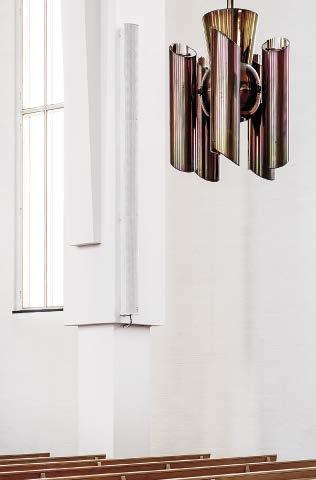
‘These very discreet speakers provide the directivity that the church required and the speech intelligibility it wanted,’ reveals Ilkka Hilden, sales manager at Audico Systems Oy. ‘In a protected building, you can’t solve
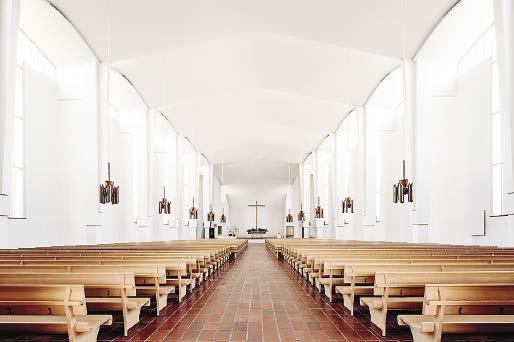
structure – your only option is to find an effective technical solution.’
‘Our worshippers can now understand everything that is said during sermons, no matter where they are seated,’ confirms Mr Tupeli, following the installation.
www.akukon.fi
www.audico.fi
www.renkus-heinz.com
www.seinajoenseurakunta.fi/lakeuden-risti
4 WORSHIP AVL March-April 2017 NEWS
Iconyx IC24 steerable column arrays were installed
DVA Mini and Flexys cabinets provide audio reinforcement
The newly-renamed Connect Church
Audio feeding the 5,000
FRANCE: The city of Tours recently celebrated the 1,700th anniversary of the birth of its patron saint, St Martin of Tours. The festivities included special masses held in the city’s Cathedral, which attracted approximately 3,000 people, and a large, open-air mass, attended by more than 5,000 in Marmoutiers, where St Martin established a small hermitage during the fourth century (the ruins of an old Abbey now mark this site).
The celebrations were organised by the city’s Diocese and local radio and television networks broadcast many of them. Julien Proutière, a sound engineer from Tours-based audio consultancy Multi Sceni, specified the audio equipment across the events.



‘The open air mass in Marmoutiers was particularly tricky to setup because it was held by the river Loire, close to a very busy road,’ recalls Mr Proutière. ‘The mass was conducted by an Archbishop and a number of other celebrants. We also had to amplify an
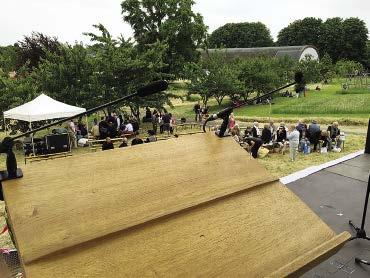
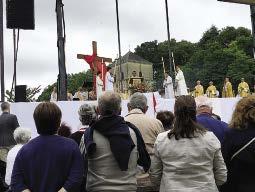
orchestra of 20 people and a chorus of 80 voices – all located below the stage. Avoiding feedback was our main issue because of the proximity of the sound system, but we also had to contend with wind, which got stronger in the two hours leading up to the start of the mass.’
To capture the music of the orchestra and the voices of the choir, MultiSceni put its extensive stock of DPA microphones, acquired from the manufacturer’s French distributor, Audio², to use.
‘Initially, I chose a range of supercardioid microphones including the d:fine 4088 directional headset microphone, which I was planning to use for the Archbishop. But because the wind increased in strength we used d:fine 4066 omnidirectional headset microphones because they are so linear off axis that the risk of feedback was very small and they were
‘The sound from all of the microphones was perfect, despite the wind, and we didn’t have any issues with feedback,’ says Mr Proutière. ‘Our main problem was the lack of damping tarps, as the Abbey ruins around the stage had to be visible. We were also expecting a large number of spectators filling an area with a depth of over 50 meters, so I needed a sound system with real kick.’
Delivering the kick was an Adamson Y10 line array setup of eight speakers per side. Complementing these were Adamson M15 speakers and a pair of Wave speakers for front-fill. Mr Proutière’s colleague, Julien Benezet programmed the loudspeaker solution and used a Yamaha CL5 to control the
www.dpamicrophones.com
www.multi-sceni.com
Powervision TV opens with TerraBlock shared storage
INDIA: A TerraBlock shared storage solution from Facilis Technology has been installed at the Indian international Christian broadcaster, Powervision TV. Facilis worked closely on the project with its primary Indian channel partner, Wecom Global.
‘After careful evaluation of several companies we selected Wecom Global to assist us through this strategically important technology migration,’ explains Bimal Ambrose, senior editor and technical manager at Powervision TV. ‘They advised that we install Facilis TerraBlock and their consultancy has proved valuable. The system was installed this June and the workflow has operated efficiently and reliably since day one.’
Wecom Global was recruited by Powervision TV to consult and assist with the channel’s transition from tape-based to file-based workflows. The key drivers for this infrastructure upgrade were
reportedly a need for increased speed, efficiency and productivity within its post production and producer approval procedures. Working closely with Powervision TV’s in-house engineering team, Wecom designed and integrated a workflow which
sees a Facilis TerraBlock 24/EX12 32TB storage system supporting a network of eight Avid edit suites.
‘In selecting Facilis, key factors for us were the performance and cost effectiveness of TerraBlock and in both respects we are delighted with the results. We operate with limited financial resources, so to be able to afford this standard of shared storage system has been a massive boost for us,’ concludes Mr Ambrose. ‘This would not have been possible without Wecom Global, which has supported us throughout the system design, integration and commissioning stages. And today, Wecom continues to provide technical and operational support 24/7.’
www.facilis.com
www.powervisiontv.com
6 WORSHIP AVL March-April 2017
NEWS
A Facilis TerraBlock 24/EX12 32TB storage system supports eight Avid edit suites at Powervision
More than 5,000 people attended the event in Marmoutiers
Tours Cathedral hosted special masses
d:screet SC4098s were deployed for the outdoor mass
This isn’t about new loudspeakers.




























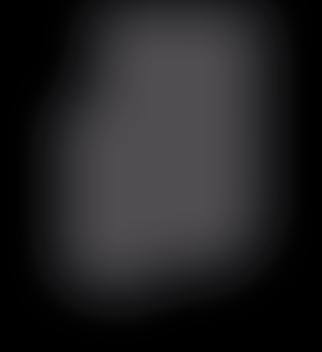
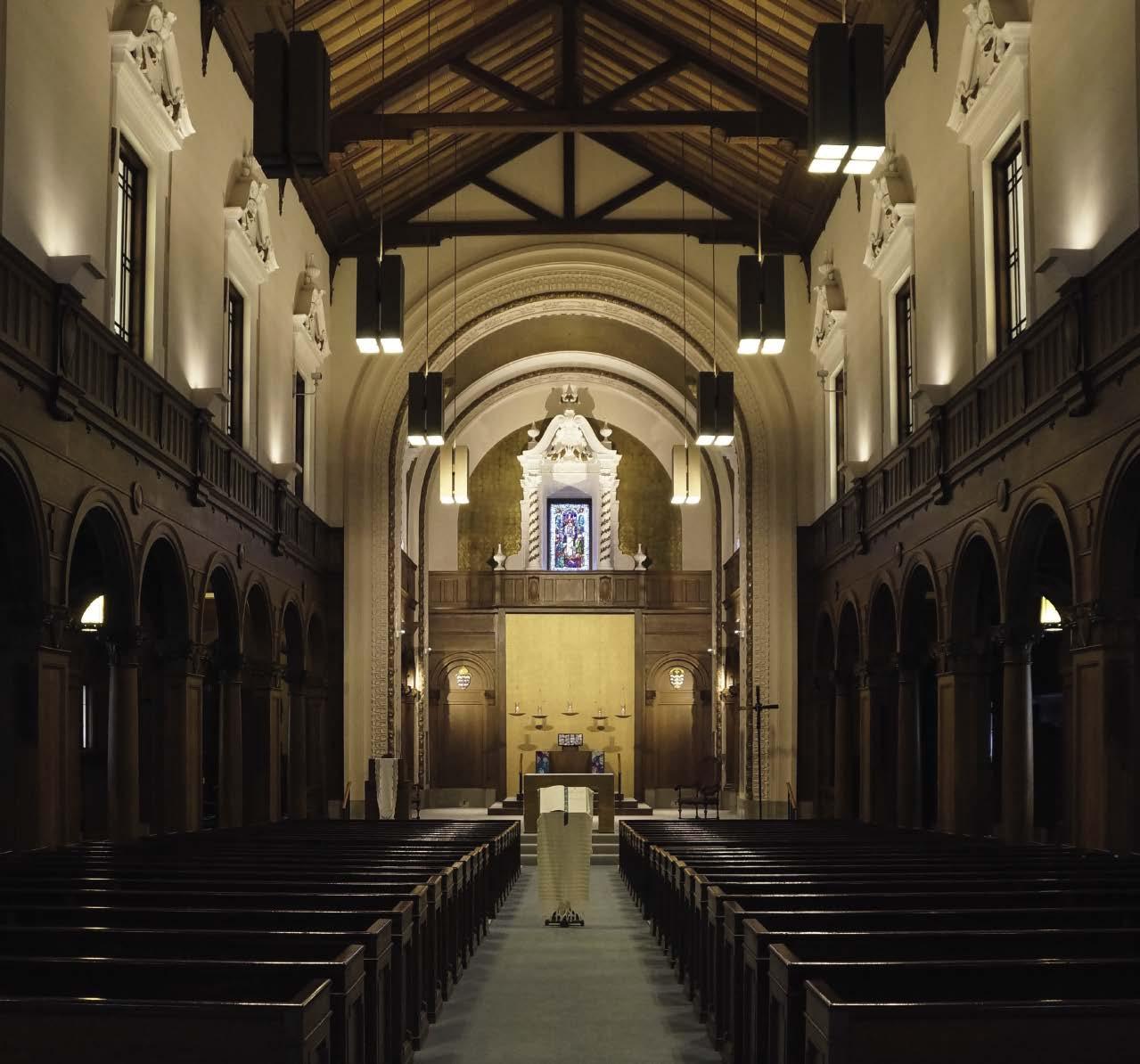
It’s about bass lovers and partygoers, sports supporters, music fans and absolute clarity connecting congregations; it’s about dynamic daily programs and tireless listening for everyone, every time. It‘s not about the new 24S/24S-D point source loudspeakers and 21S-SUB taking the performance of the installation specific d&b xS-Series to empowering new levels, in cabinets designed for easier aesthetic integration. It‘s about solutions tailor made to task: d&b amplifiers, software, and accessories, all perfectly integrated for highly efficient, versatile solutions. www.dbaudio.com










xy Welcome to System reality.
Sisters of Saint Joseph of Carondelet Chapel, US
Lighting up Eagle Brook
‘Seth is one of the most important vendor relationships we have that allows us to do what we do every weekend,’ chimes Mr Nohling. ‘He is someone who understands how budgets and projects work and is always able to help us figure out a solution that fits our needs.
‘The ability to have independent pixel control has been huge for us in terms of flexibility. We are able to go from utilising the full fixture to maximise impact to just a single pixel in our slower songs, which provides a completely different look and feel,’ he continues. ‘These fixtures have held up great. They have been in use now for months and across 156 fixtures I believe we have had only one issue.’
With six campuses, Mr Nohling can’t be everywhere at once. ‘We have an incredible team that works
auditoriums to more traditional church buildings, located throughout Minnesota. The ministry’s lead lighting designer, Nate Nohling, recently decided to create a new lighting set at each of the sites, purchasing 156 Elation Lighting ACL 360 Bar LED battens to form the basis of the design.

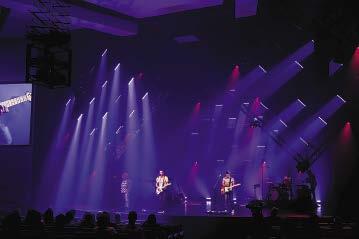

‘The number one thing I was shooting for when designing this set was impact. I wanted to have a large quantity of fixtures that had the ability to create
an impact and a powerful beam from each fixture,’ explains Mr Nohling. ‘We looked at a lot of different fixtures and the ACL 360 Bars were a great solution for what we needed.
‘Our team strives to create a cohesive design that has a similar brand between all of our campuses, and utilising the same fixtures is a key part of that,’ he furthers. ‘The design is scaled to fit each room and therefore the fixture count at each campus varies, but the design was created to have the same experience and feel at each campus.’
Minneapolis-based Elation dealer Monkey Wrench Productions supplied the fixtures and worked with the lighting manufacturer’s rep firm, Five Lakes Marketing, on the project. ‘This project has a lot of interesting aspects to it, not least the fact that it uses an EDM style fixture in a house of worship,’ notes Seth Scott, “head chimp” at Monkey Wrench Productions. ‘With Eagle Brook’s mutliple locations creating a common design to provide flawless continuity between all campuses is a design feat in and of itself.’
together to pull off what we do,’ he concludes. ‘We have some of the best lighting designers in the country in Tom Clark, Travis Leatherman, and Jason Goglio, who also make up our stage design team. Everything that we do is a very collaborative process where each person brings ideas and solutions to the table, and we couldn’t do what we do without each of them. We also have incredible campus production teams across all of our campuses that partner with us to actually do the installations.’
www.eaglebrookchurch.com
www.elationlighting.com
www.monkeywrenchproduction.com
Mixing and monitoring at Southview
CANADA: The Southview Alliance Church in Calgary, Alberta keeps a busy schedule, running multiple services at its campus on Walden Boulevard. The church’s services vary – while some remain traditional, others are contemporary and can include live band performances. Therefore, during a recent audio refit, it was the musical element that dictated the system installed.
The church turned to British Columbia-based Sapphire Sound to design, supply and install the new system. This resulted in the deployment of an Allen & Heath dLive S5000 console with a DM48 MixRack at FOH, while an ME personal monitoring system was employed for the musicians onstage. Operating at 96kHz, the system is fed directly
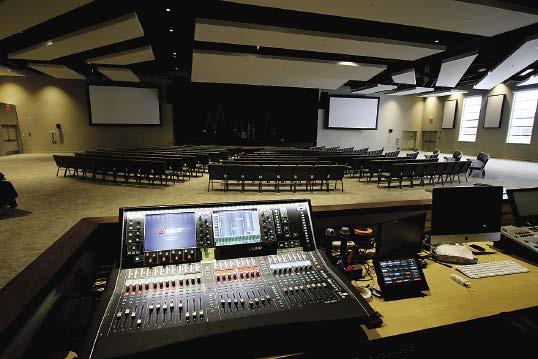
to a series of amplifiers via an AES connection, meaning that the signal remains digital throughout, from preamp to speaker input.
‘dLive has many advantages. The high channel count and number of output busses was a major factor for
this project,’ recalls Ben Burrell at Sapphire Sound. ‘On top of that, the seamless integration with the ME-1 system, plus the dLive OneMix and MixPad apps for remote control, made the system particularly attractive.
‘The ease of use for volunteers was
a big selling feature,’ he continues.
‘Finally, the number of network expansion card slots was also a huge bonus, ensuring that whichever direction technology goes, Southview will be able to stay connected.’
Following the installation, the church’s technical arts director, Dan Delamont, is already noticing the benefits. ‘We really enjoy using the dLive S Class system,’ he says. ‘Its intuitive nature has made it especially easy for me to train my volunteers who only operate once a month. With very limited time on the console they are able to reach all the controls they need to put together a very good mix.’
www.allen-heath.com
www.sapphiresound.ca
www.southviewchurch.com
8 WORSHIP AVL March-April 2017
NEWS
The view from FOH at Southview
ACL 360 Bar LED battens form the basis of the lighting design at Eagle Brook Church’s six campuses
Nate Nohling designed the new lighting rig
Monkey Wrench Productions supplied the Elation fixtures
Vatican City in Ultra High Definition
VATICAN CITY: Working alongside Centro Televisivo Vaticano (CTV –Vatican Television Centre) as well as several other technology partners, Sony recently facilitated the global production and broadcast of the Ceremony of the Closing of the Holy Door by his Holiness Pope Francis in 4K High Dynamic Range (HDR). The ceremony brought to a close the Extraordinary Jubilee of Mercy, which began in December 2015.
CTV made use of 12 Sony HDC-4300 4K HDR cameras to cover the event, in addition to an HDR S-Log3 system for the live production. The broadcaster’s workflow simultaneously delivered a feed in 4K Ultra High Definition (UHD) with High Dynamic Range (HDR) and another in High Definition (HD) with SDR. The manufacturer’s MVS7000X production switcher and the PWS-4400 replay server system also supported the workflow.
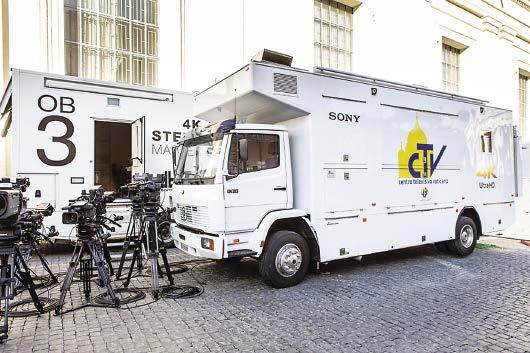
A Hybrid Log-Gamma (HLG) profile was used for broadcast delivery. This is an HDR standard that was approved in July by the International Telecommunication Union (ITU) and
was used in the test broadcast of the Opening of the Holy Door, back in December 2015.
‘For the first time ever in history, we see a live television broadcast of Papal ceremonies in Ultra High Definition with High Dynamic Range, which ensures the highest quality of images available today,’ notes Dario Edoardo Viganò, prefect of the Secretariat for communications for the Holy See. ‘This is a stateof-the-art set up that reflects Pope Francis’ aim to keep up to speed with the rapid developments in global technology, to support the Catholic
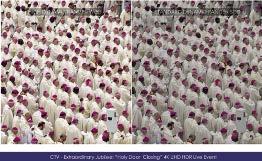
One Transmitter. Multiple Uses.
Armed with patented Digital Hybrid Wireless® technology, the LT belt pack transmitter boasts the standard microphone input along with a user-selectable high impedance instrument input ideal for use with musical instruments, including guitars with passive pickups, o ers frequency exibility (up to 3,072 selectable frequencies), and is compatible with receivers from Lectrosonics and other companies—all in one compact, rugged package.

Church’s communication mission.’
‘A live production workflow called “SR Live for HDR” was used at this historic event,’ adds Peter Sykes, strategic technology development manager at Sony Professional Solutions Europe. ‘The production infrastructure is based on Sony’s S-Log3 transfer function for simultaneous creation of 4K HDR and HD SDR pictures of the highest quality.’
‘We continue to work closely with CTV to develop and provide technology that supports its mission to capture all activities of the Pope and the Holy See, through immersive images that have the highest emotional impact possible,’ concludes Benito Manlio Mari, country sales manager, Sony Europe. ‘This is the first live POC (proof of concept) 4K HDR S-Log3 production by CTV, showing how a single production line can support distribution of multiformat broadcasts.’
www.ctv.va pro.sony-asia.com
NEWS
Sony has established a partnership with CTV
Instruments Headset Mics Lav Mics Tel USA +1 (310) 470-8998 sales@moretec.net Call or email: More Technologies, Inc.
HDR and SDR feeds were delivered simultaneously
Scan for the free white papers and information on the Digital Hybrid Wireless® family. www.lectrosonics.com/US/WAVL317
Ross Video opens new Asia headquarters in Singapore
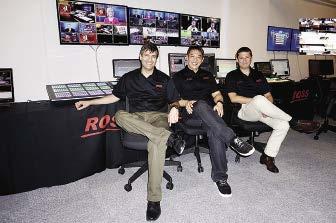
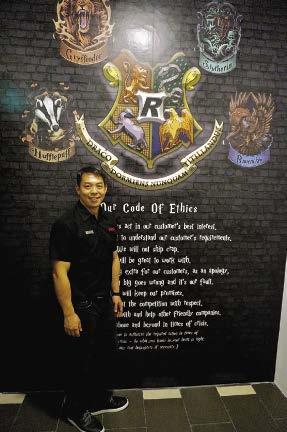
SINGAPORE: On 23 November, 2016, Ross Video celebrated the grand opening of its new headquarters for Asia in Singapore. The new facilities are spread over four floors and serve as the operating base for the near 10-person strong sales and support team around APAC director of sales Andrew Tan. Equally important, the headquarters provide ample space for customers to try and experience the wide range of Ross’ video production equipment and technologies in a real-world setup. ‘This is not only a place for “us here,” but also a place for our business partners in the region and colleagues in the field to bring their customers as well,’ explained Mr Tan. CEO David Ross traveled from Ross Video’s global headquarters in Ottawa, Canada, to deliver the opening speech to around 80 A/V professionals, broadcasters and trade partners gathered from the entire APAC region. ‘We have not had a down year in 25 years. Even through the recession, even through currency changes, we’ve grown on average 17 per cent per year for 25 straight years,’ Mr Ross was happy to report. ‘We’re getting bigger,’ he elaborated, ‘but we’re not slowing down. The reality is we’re speeding up and we’re going faster.’
‘It’s all about passion,’ said David Dowling, Ross Video’s VP of sales for EMEA, APAC and Oceania. ‘We love the industry; we love and believe in what we’re doing. It’s very much about developing new products, to move the
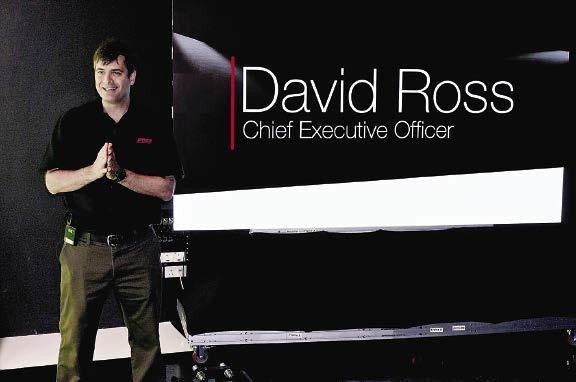
whole industry forward.
‘We are expecting significantly more business in Asia in the years to come,’ Mr Dowling added, ‘and Singapore is an ideal hub for us for a number of reasons, but mainly because we have great staff here.’
The story of Ross Video is one of long-term success. Now in its 43rd year and about 640 employees strong, it has offices in several locations on the American continent as well as in Europe and Asia including China and soon to be followed by Sydney, Australia. With its products found in over 100 countries, Ross Video is a major player, noted Mr Ross. ‘Among the hundreds if not thousands of companies in our industry, including big consumer brand names like Apple, last
term expansion of the company. That growth is credited in part to Ross Video reportedly putting customer satisfaction and support first, as spelled out in the company’s widely publicised ‘Code of Ethics’, including infamous lines such as ‘We will not ship crap’.
Ross has also developed or acquired its fair share of high-end technologies (no less than 12 companies have been acquired by Ross Video during the past seven years – reportedly all internally financed). Having recognised the importance of IP media solutions, Ross Video recently joined AIMS.
have introduced new technologies helping users to work smarter, do things easier.’ Ross has leveraged its video switcher prowess into packages suited for smaller HOWs or smaller budgets (such as the Carbonite Black or Carbonite Black Solo). ‘For HOWs with larger budgets who want to do more complex and higher quality productions,’ Mr Dowling added, ‘we have our flagship Acuity switchers, our robotics systems, and they might even want to add in some augmented reality to enhance their production.’
year we were ranked 25th. This year, in only one year, we jumped seven spots to 18th. I think that’s unprecedented, and shows that the Ross brand is going up like a rocket.’
Mr Ross was recently named ‘Ottawa’s CEO of the Year’ for his achievements, including the long-
Ross Video’s catalogue product ranges from its traditional focus, video production switchers, through just about everything needed in live video production environments, including houses of worship. The full product line includes solutions for processing, routing, asset management and both conventional and robotic cameras.


‘A lot of the production work in HOW is not far off other live event productions like broadcast,’ noted Mr Dowling, ‘and live productions have always been Ross Video’s focus. We
As Mr Tan elaborated, ‘Scalability is key. A volunteer technician in a smaller HOW must not be intimidated by massive switcher surfaces. For example, Dashboard (system control software) allows HOWs to create their own smart and efficient user interface, customised for them, even by themselves, to churn out high quality video without complicated operations.’ Built in capabilities like assignable mix effects, he offers as an example, bring flexible and sophisticated production power to even its Carbonite Black switchers, paired with what the manufacturer describes as easy operation.
Ross’ PivotCam, a PTZ camera introduced at IBC 2016, was ‘designed with typical HOW venue sizes in mind,’ added Mr Ross. ‘A small footprint, 20x optical zoom, high sensitivity and excellent image quality fits HOWs perfectly. Dashboard control makes it part of our ecosystem, and its very attractive price allows the addition of more PivotCams for better coverage.’ www.rossvideo.com
10 WORSHIP AVL March-April 2017
NEWS
David Ross addresses the celebrants gathered for the grand opening
Camera setups in the second floor demo room
Andrew Tan in front of the Ross Video Code of Ethics display
The production area, complete with green screen, on the first floor of Ross Video’s new Singapore regional headquarters
David Ross, Andrew Tan, and David Dowling with Acuity Switchers in the HQ 2nd floor demo room


First Church Coral Springs’ lightning upgrade
USA: The city of Coral Springs is located in southern Florida, and as such, is subject to the extreme weather conditions that are apt to affect that particular corner of America. First Church Coral Springs has been serving the city’s Methodist community for almost 50 years and in that time has grown substantially. The church currently holds its services in a much larger main sanctuary than when it was founded in 1969. This means that the church relies upon video reinforcement to ensure that the entire congregation can clearly see the services.
Trouble struck recently. This was in the form of lightning to be more specific, which caused technical issues for the church. First Church Coral Springs had already been in contact with Cape Coral-based A/V installation company Creative Sound and Lighting Solutions to install new solutions at its original sanctuary, known as Robey Hall. Following the lightning strike to the main sanctuary, the installer was provided with additional work.
‘We were already planning on the install for the Robey Hall, but about two weeks before that scheduled installation, the main sanctuary, which is located in an entirely different building, took a direct lightning hit,’ recalls Rob Robinson, system designer at Creative Sound and Lighting
Solutions. ‘After some extensive late night troubleshooting with the client via Facetime, we uncovered numerous issues in the video system. Lightning is a very complicated thing and it may hit something very hard while leaving others entirely untouched. In this case, the audio system was fine, but every video component was either shot, or somehow stressed and not operating properly. So we decided to order replacement items and simply combine both the Robey Hall and the main sanctuary projects into a single endeavor.’
Creative Sound and Lighting Solutions installed two Eiki EK-600U DLP projectors, serving as front
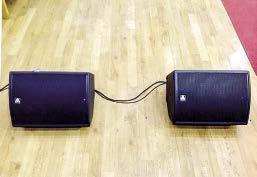
projectors, and an EK-601W for confidence monitoring, helping the pastor or anyone else that speaks to the congregation to stay on point.
‘Luckily for us, Eiki jumped into the details to help determine what would be suitable replacements,’ explains Mr Robinson. ‘Better still, we were able to have three projectors that have the same technology, so the rear facing confidence display now looks like it matches the main displays. Previously, the church had two different brands in use and the inconsistent image quality really bothered me. With these new Eiki projectors, that’s a thing of the past.
‘The EK-600Us hang from the ceiling
using Chief CMA700 adjustable poles in conjunction with a Chief universal mount attached directly to the projector,’ he continues. ‘Both units face the front of the space and project onto 3.6m wide motorised screens. The EK-601W faces the rear of the space behind the congregation and projects directly onto the white painted wall. Even projecting onto the wall, it looks great. For the confidence display, we used a Chief CMA395 angled ceiling plate, dropping a 1.5m long, 4cm steel pipe to another Chief universal mount.’ Meanwhile, an LC-WBS500 projector was installed on one of the old wooden beams that run across the ceiling.
Assisting Mr Robinson on the project was Eiki’s national sales manager, Steve Rubery. ‘Steve helped us with the calculations and made certain that everything would be flawless,’ tells the system designer. ‘Eiki’s customer support services have always been excellent and this is yet another example of that commitment. The new projectors fit the screens far better than the ones we replaced, so the overall result is one of bright, clear, visually appealing images, lyrics, and related content that really helps engage the congregation. Our client couldn’t be happier.’
www.eiki.com
www.firstchurchcoralsprings.org
Cleaning up the sound at Gonkju with Amate
For balcony under-fill/side-delay, four JK26 passive cabinets from the Amate Joker series have been installed, with HD1200 amplifiers and a DSP206 processor. Each JK26 cabinet houses a columnar array of four 6-inch carbon fibre cone woofers, along with a single 1.75-inch compression driver feeding an asymmetrical horn. All the components employ neodymium magnets.
Rounding out the system are Amate Key series Key12A cabinets, used
SOUTH KOREA: Gonkju Central Methodist Church in South Korea has upgraded its sound system with components from Spanish loudspeaker maker, Amate Audio. The self-powered main left/right Amate Excellence



series arrays each consist of three X12CLA cabinets flown beneath a X18T subwoofer, 4m above the ground. The X12CLA systems each provide a 45-degree vertical by 100-degree horizontal dispersion pattern.
for stage monitoring Each two-way Key12A wedge features a 12-inch woofer and a 1-inch Kevlar tweeter, with a 70-degree by 40-degree dispersion pattern. Amplification is on-board, with 450W (LF) plus 150W (HF) of Class-D bi-amplification.
www.amateaudio.com
12 WORSHIP AVL March-April 2017
NEWS
The main sanctuary at First Church Coral Springs
An Amate Audio solution was installed at Gonkju Central Methodist Church
JK26 passive cabinets provide under balcony-fill
Key12A cabinets serve as monitors
4K Mosaic streaming
Spiiders shine on Every Nation
USA: Located along Hollywood Boulevard in Los Angeles, California, Mosaic is a church that welcomes congregants from all walks of life, both locally and from afar. In addition to those that attend its three weekly Sunday services, the church has amassed an international virtual following through its live streams, podcasts and mobile app. With thousands tuning in to watch the sermons on its website as well as using the Andoid and iOS apps, Mosaic recently looked into upgrading its video production environment to include 4K. Sermons are streamed online four times a week, with the Mosaic website also hosting an archive of videos that worshippers can choose to watch on demand. The church’s sanctuary is designed as a ‘low lumen, theatrical type of lighting environment’, which creates a challenging video production environment. This, in addition to the fact that Mosaic’s founder and lead pastor, Erwin Raphael MacManus, wanted to future proof the church’s video content, led to the exploration of 4K streaming.
SOUTH AFRICA: Taking place at Grand West’s 5,000 capacity Grand Arena in Cape Town, the triannual Every Nation Conference organised by Every Nation Church is a four day conference offering speakers, worship sessions, live bands and activities. The event called on a large lighting rig with over 100 fixtures from Robe. This included the first deployment in the country of the manufacturer’s Spiider LED washbeams. The 12 Spiiders, along with the rest of the lights were provided by technical suppliers C&S Audio which was working for event technical producers, Bad Weather Productions. The fixtures were all obtained from Robe’s distributor, DWR.
Lighting designer Alan Muller of FX Unlimited worked closely with technical production manager Andrew Bosman from Bad Weather who produced the original stage designs and the video content with his team and Pierre Smith, production director of Every Nation Church Somerset West.
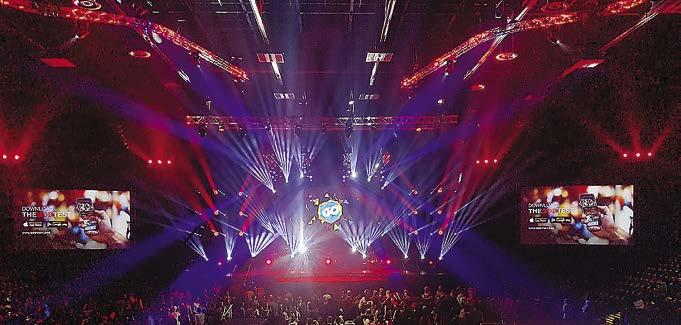
design was to make the space intimate even though it is a large venue. Hanging a series of trusses at 45-degrees accentuated the grandeur
screens. At the front of the stage was a thrust mimicking the screen shape which was a cut-out of the Every Nation logo.
4300L camera, while the two Cabrio lenses are used with a pair of Sony’s PMW-F55 CineAlta camcorders.
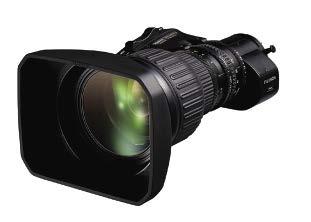
sweet-spot where the pixel is perfectly focused. The power and the beam quality are exceptional.’

‘We strive to be innovative in the ways that we use technology to convey our message and connect with our community,’ says Lawrence Fudge, executive pastor at Mosaic. ‘Our goal in this project was to create 4K productions from start to finish, and our Fujinon lenses have helped us to
evaluated the cameras and lenses available to determine the best solution on the market. ‘We found that Sony cameras equipped with Fujinon lenses produced the sharpest
for Mosaic,’ recalls John Delmont, systems sales and integration consultant at VMI. ‘Our company has forged a strong long-term relationship with Fujifilm Optical Devices, and we find their lenses to be consistently top-ofthe-line.’
The creative brief for the stage
Mosaic turned to Sunnyvale-based systems integrator, VMI Inc, which
The 12 Spiiders were initially intended to be used as side wash fill, but ‘their awesome tight beam’ swayed Mr Muller to use them as effects. ‘They are so bright,’ he declares. ‘Even using them as LED rings – the pixels are mappable – they delivered so many lumens, and I loved the fact you can find the zoom
The solution resulted in the purchase of four lenses from Fujifilm’s Optical Devices Division, consisting of two UA22x8 4K, ²/³-inch portable zooms, a ZK4.7x19 Cabrio 19-90mm lens and a ZK12x25 Cabrio 25-300mm lens. The UA22x8 portable lenses have been paired with Sony’s HDC-
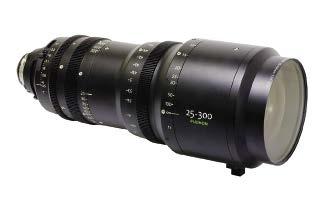
be one of the first worship centres to achieve that.’
Since the church’s investment, the cameras and lenses have been put to use for concerts as well as Mosaic’s weekly services.
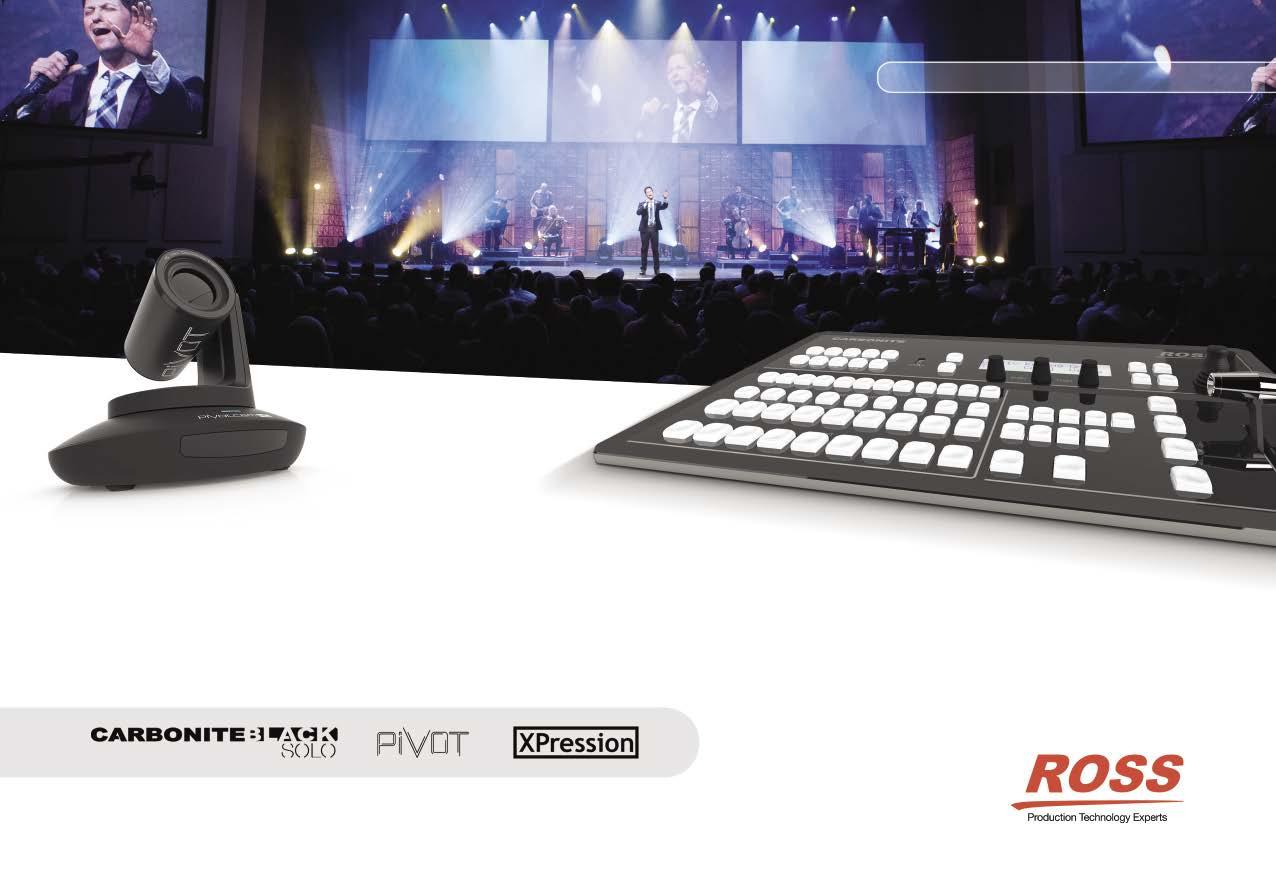

In addition to these, the conference called on 12 BMFL Blades for top and back light, stage texturing and specials for strategic cues, keyed in over 16 LEDWash 300s. The six BMFL WashBeams were primary key lights, while six LEDWash 600s toned the set elements. A total of 18 ColorSpot 700E ATs were arranged oval LED screen and used for side texturing, with five ColorWash 700E ATs providing low back light behind the band risers. Six totem trusses upstage were loaded with bars of PAR 64s and strobes for tungsten glows, chases and blinding moments, and 20 Pointes were used for multiple beam work and effects all over the stage. Over the audience were another 20 ColorSpot and ColorWash 700E ATs, profiles and LED blinders.
www.en2016.org

www.fujifilmusa.com
www.dwrdistribution.co.za
www.mosaic.org
www.robe.cz
pro.sony.com
www.vmivideo.com
NEWS
Robe spiiders in use at the Every Nation Conference
NEWS
Fujinon’s ZK12x25 Cabrio 25-300mm lens
Mosaic streams its sermons in 4K
The UA22x8 4K lens
Sales Enquiry: ROSS-APAC Sales@rossvideo com
Taking sound to overflow crowds
THAILAND: Wat Tha Sung, also known as Chantharam Temple, is an historic edifice situated in the northern province of Uthai Thani, 200km from Bangkok. This golden temple was built during the Ayutthaya period (1351 to 1767). Every year, the temple attracts many visitors who
travel to admire its beauty, pray, and listen to sermons.
To cope with the increasing number of visitors, the temple developed an outdoor gathering area in front of the Golden Castle to host the thousands of believers that attend the sermons. A loudspeaker system upgrade was needed to provide highly intelligible sound to these outdoor crowds. With product quality and reliability factored in, along with pre- and post-sales support, the project was entrusted to Bosch-certified partner, Vision One, to supply and install the entire project with products from Electro-Voice (EV).
At the design stage, Electro-Voice
simulation test. EV’s smallformat, high-output, powered ZX1 loudspeaker, designed for weather resistance, was selected as the centrepiece of the system. Compact Evid models from EV cater to crowds
an EVF horn-loaded loudspeaker was installed in front of the Golden Castle. All speakers were powered and processed by EV technology: two CPS amplifiers, a Dx46 FIRdrive processor, and a NetMax N8000 system controller. After the installation, the team conducted the final sound check to reaffirm that the actual sound production matched the

Visitors to the temple are claimed to have commented that the sound is now crystal clear.
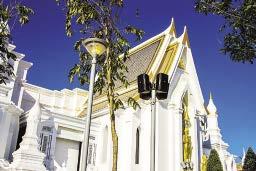
www.boschsecurity.asia
www.tourismthailand.org/Attraction/ Wat-Tha-Sung--4535
A custom solution hoisted at First Baptist
lighting and LED video solution as part of the upgrade.
In addition to identifying the need for updates to all of the church’s technical systems, the project specification stated that all of the sanctuary’s traditional aesthetics were to remain unaffected. Also posing a challenge was the requirement for ‘a dynamic LED video system’ for use during contemporary services that could be hidden away during traditional services. This led to the team at S&L partnering with New York-based stage rigging equipment and installation services provider JR Clancy to develop a custom roll-up LED video system, making use of Pixelflex’ FlexCurtain HD technology.
‘We’ve developed a wonderful
director at S&L. ‘Operating under a mandate to keep the aesthetics of the traditional sanctuary intact, they asked us to create an engaging “rock’n’roll” atmosphere for the contemporary services, but the necessity for tucking away the technology during the traditional service was a challenge. We developed the idea of a roll-up system so the products didn’t have to be manually taken down during worship service changeovers. We contacted the team at JR Clancy to discuss the possibility of collaborating on the rollermechanisms, and the church loved the idea.’
‘This was definitely a first for our company,’ adds Michael Braico, project manager at JR Clancy. ‘We have rolled,
the success of the video system,’ Mr Byars continues. ‘Since Pixelflex LED technologies have been road-tested in high-energy touring productions, we were confident the FlexCurtain HD could handle the challenges associated with a rolling system and give the church a multitude of design possibilities for any worship service.’
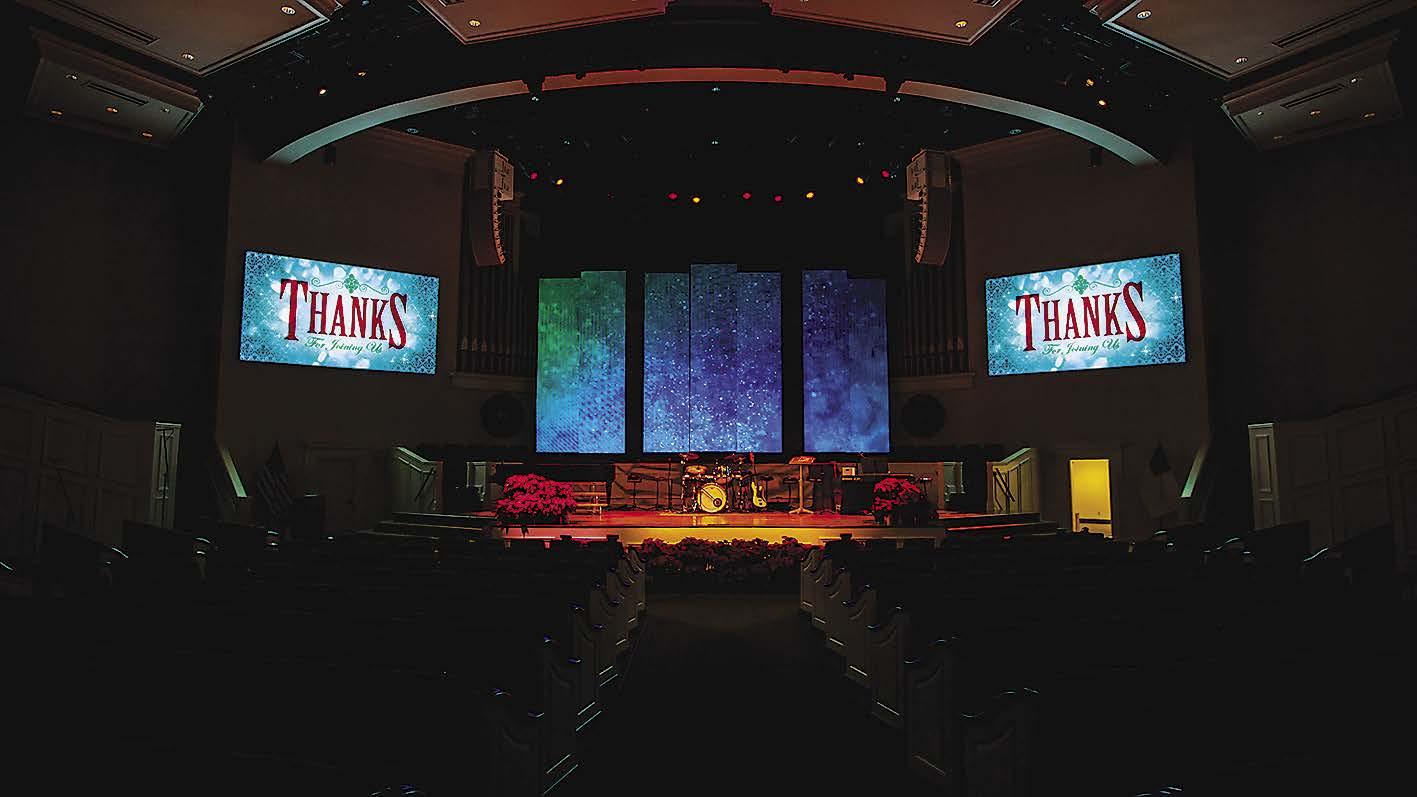
‘The strength of the Pixelflex LED video screens lies in their flexible, modular and easily expandable design,’ furthers Mr Braico. ‘One of the challenges was that each section had its own power supply, which increased the space needed inside the hoist housing. On the other hand, this allowed for each screen to stand-alone or daisy chain with the adjacent panels,
together, the FlexCurtain HD was the perfect solution for a rollinghoist system,’ explains JR Clancy systems integrator, Eric Huss. ‘We are constantly asked to develop custom solutions to fulfil customer requests, and it was very exciting to work with both S&L Integrated and Pixelflex to make the idea at First Baptist Church in Thomasville a design reality.’
‘We were thankful for the assistance of JR Clancy and the FlexCurtain HD LED video technology from Pixelflex,’ concludes Mr Byars. www.fbcthomasville.com
14 WORSHIP AVL March-April 2017
www.jrclancy.com www.pixelflexled.com www.slintegratedsystems.com
NEWS
A custom Pixelflex FlexCurtain HD solution was installed at First Baptist Church, Thomasville
Vision One supplied and installed an Electro-Voice solution at Wat Tha Sung
Weather-resistant ZX1 loudspeakers were installed
Achieving clarity by-the-Sea
USA: St Andrews by-the-Sea United Methodist in San Clemente, California is a multi-generational church with a wide range of ministries designed to appeal to its varied congregation. The church welcomes people from all walks of life. To better serve its diverse membership, PS Audio Video of San Diego, an A/V integration firm with a focus on the worship market, was contracted to handle the installation of a new loudspeaker system for the church. After meeting with church officials to determine their objectives, PS Audio Video owner, designer and installation coordinator, Paul Svenson, ultimately elected to install two WorxAudio TrueLine X3i-P powered all-in-one compact line arrays, custom finished to match the church’s interior, and a TrueLine X118i-P/D subwoofer.
‘St Andrews by-the-Sea United

and contemporary services, so music reproduction capabilities were every bit as important as clear speech intelligibility.’
















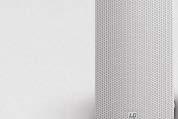





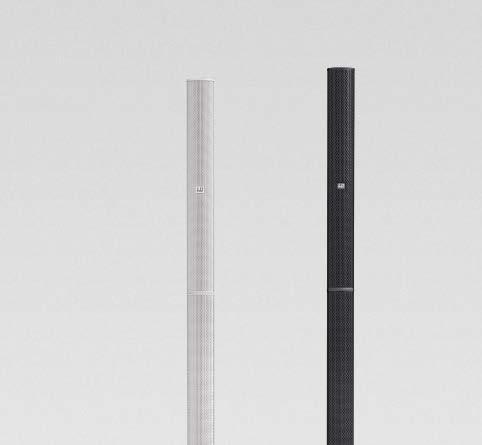



‘The X3’s wide horizontal dispersion and well defined vertical throw enabled us to cover this space with just the two enclosures,’ Mr Svenson shares. ‘I’ve also been very impressed by the sound quality and construction of the equipment. Equally important, the WorxAudio Minibeam and pipeoriented rigging hardware made installing these loudspeakers very smooth and easy. I’m also a big fan of PreSonus — WorxAudio’s parent company. We used a PreSonus StudioLive AVB48AI mixing console on this job and being able to coordinate all this through a single company was yet another benefit. The WorxAudio people were very helpful assisting us with EASE drawings based on the room as well as making the necessary adjustments until we arrived at an optimal installation plan.’

Methodist’s sanctuary is a wide, somewhat fan-shaped space,’ Mr Svenson explains. ‘With a (9.1m) stage that faces into the width of the room, there is a distance of 19.8m to the rear wall, which spans an area of 28m. The space incorporates a balcony and there remain two to three rows of pews under the balcony overhang. Seating is fixed pews, with carpeted aisles and a front floor area. They have both traditional

St Andrews by-the-Sea United Methodist’s new loudspeaker system was installed in early August. ‘Since the installation’s completion, the congregation has been very pleased and impressed with the sound and appearance of the system,’ Mr Svenson says. ‘The band leader and other musicians were also extremely happy with the way the system performed. When I asked if they wanted to run the service as loud as the rehearsal, the band leader said, “We’ve never been able to run it loud before without distortion, feedback, and problems.” The bottom line is that the new loudspeaker system is meeting – and exceeding – everyone’s expectations.’


www.psaudiovideo.com






www.sabts.org
www.worxaudio.com




































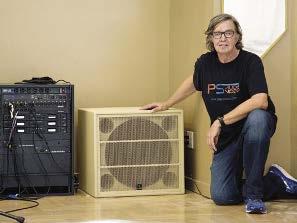 The sanctuary inside St Andrews by-the-Sea United Methodist
PS Audio Video owner Paul Svenson with a WorxAudio TrueLine X118iP/D subwoofer
The sanctuary inside St Andrews by-the-Sea United Methodist
PS Audio Video owner Paul Svenson with a WorxAudio TrueLine X118iP/D subwoofer
Pearl City Church connects with d&b’s Y-Series and Avid

INDIA: Music is a critical element in worship at Pearl City Church, located in Film Nagar in the capital of the southern India state of Telangana, Hyderabad. ‘Pearl City Church works to highlight the teachings of God by sharing the message and good news that’s mentioned in the Holy Book, through various forms of praise and worship services in which music is a vital component,’ explains Sukesh
of a total of eight Y8, 2-way passive line array elements along with four larger format Y12, 2-way passive array cabinets, all powered by three D20 power amplifiers. Six actively driven Y-Sub cabinets round out the system.
‘We devised this system keeping in mind the various points that Sukesh and the church leadership had discussed with us,’ says Mr Lean. ‘With all the details in place, we figured that
Lauda and Nexo take the castle
POLAND: The Christian population in Malbork attend services in what is arguably one of the most awe-inspiring settings for any congregation. This is because the Church of the Blessed Virgin Mary is situated within the largest castle in the world, the Castle of the Teutonic Order.
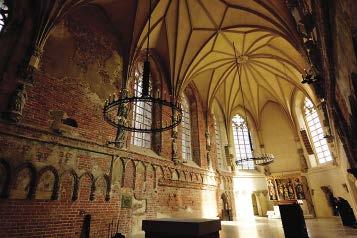

A medieval fortress, the castle’s construction was completed in 1406. In 1997 it was declared a World Heritage Site by UNESCO and in 2016 a reconstruction programme got underway. As part of this programme, Lauda Audio was approached
Hickson – a veteran pro audio professional who is also a technical director at the Pearl City Church. ‘We’re a church with a strength of over 1,800 active members, with our very own full-scale band, who are pretty much the life of the Church. That the entire congregation unanimously participates throughout the service is a testimony to how important music actually is to the church and its congregation.’
When the church leadership determined that a new sound system was needed, Mr Hickson explains, the criteria developed included high quality audio performance, faithful coverage for the entire congregation, with efficiency and ease of operation. Along the course of their search the church delegation met with Ansata – distribution partners for pro audio brands including Avid and d&b audiotechnik, with Mr Hickson acting as the technical advisor on behalf of the church. After a quick site survey, team Ansata led by Neil Lean, drew up a comprehensive pro audio system plan for the Pearl City Church leadership, keeping in mind Pearl City Church’s requirements for the space in terms of performance and upkeep, ease of use, aesthetic appeal, economic viability and total value for money. The audio architecture devised by Ansata involved the use of a Y-series loudspeaker system from manufacturers d&b audiotechnik, along with an S3L mixing console solution from Avid.
The loudspeaker solution consists
the d&b Y-Series would be the best fit for the project, owing to its compact structure, aesthetically pleasing appearance and of course its massive performance, all of which comes in an easy to use and maintain package. And progressing on the fundamental of “easy to use,” the Avid S3L console system proved to be the perfect icing on the cake, as it completes this most effective, powerful and high-quality audio system that the community members at Pearl City Church needed and deserved. The congregation, much like the leadership, are extremely dynamic and very welcoming in matters of advanced technology. We’re grateful for all the help and support that our team received from Sukesh and all the members of Pearl City Church, which is why the end result is such a magnificent sounding church room.’
Mr Hickson says that the church leadership and congregation are pleased with the work of the Ansata team, and the performance of the upgrades. ‘The new system is absolutely fantastic. It is so easy to use, and the best part is that it delivers crystal clear sound all across the room. Our pastors have mentioned that there’s a distinct vibe of increased quality, creating a better environment to worship.’
www.ansata.net
www.avid.com
www.dbaudio.com
www.pearlcitychurch.org
to design and install a sound reinforcement system to cater for the various historic exhibitions that are presented inside the church. The main hall of the church can accommodate 300 congregants and plays host to myriad events, such as meetings, presentations and concerts. The main challenge faced by the team from Lauda was posed
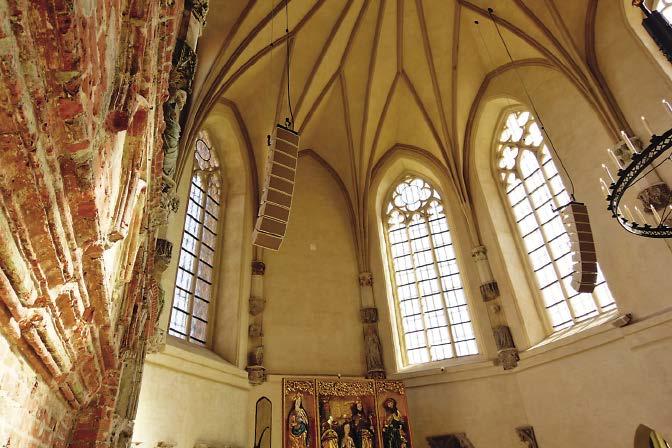

‘Our most important design objective was to achieve uncompromised sound quality and multi-functionality for the system,’ recalls Marcin Popek of Lauda Audio.
For the main PA system, Lauda installed a Nexo solution comprising the Geo M6 compact line array elements. The systems integrator, which also serves as Nexo’s official Polish distributor, also deployed two arrays of nine M620 line array cabinets (in a white finish), which were hung at a height of 6m so as to provide coverage throughout the narrow 9m x 3m sanctuary. A pair of LS600 subs handle the lows.
Additionally, 10 Nexo ID24 cabinets have been installed on the walls down the sides of the hall, configured to serve as surrounds. Lauda has set these up so that the church can use them for providing surround sound to complement the main PA, or to be used separately, for use during exhibitions.
16 WORSHIP AVL March-April 2017
NEWS
Pearl City Church
Malbork Castle
10 Nexo ID24 have been installed
Lauda Audio installed a Nexo solution
The sanctuary is long and narrow
Martin Audio fills Abba
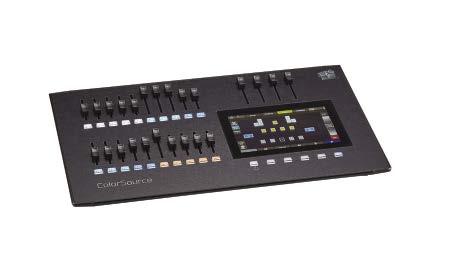







PUERTO RICO: The Abba Pater Church recently relocated to larger premises along the coast of Arecibo in Puerto Rico. The church places much emphasis on its music ministry and with that in mind, the church director, Pastor Jose Montijo Soler, contacted local consultant Jose David Irizarry to help select a sound system for the new building.

‘We looked at several proposals from top-tier manufacturers and eventually chose Martin Audio because it enabled us to obtain a high quality system at a price that made sense,’ recalls Pastor Montijo Soler. ‘Due to the ceiling heights in the new space, Martin Audio CDD speakers worked perfectly based on their compact dimensions. They met


the lows by four CSX212 subwoofers, integrated in niches either side of the proscenium. MA3.0 and MA2.0 amplifiers power the setup and control is via a Midas Pro2 console.
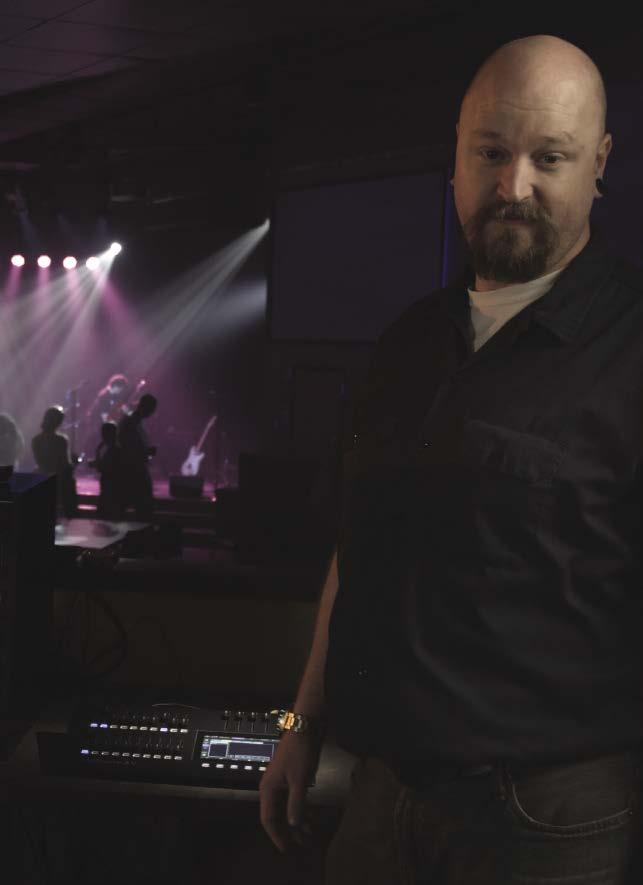
The installation wasn’t without its challenges, as due to a customs hold on the system’s arrival, it wasn’t released into the country until 11am on the day of the church’s opening. With a tight deadline, the solution was installed in three and a half hours and finished just one hour before that evening’s service.
‘The service during the installation was excellent, from the support of our consultant to CBS and Martin Audio sales agent Alex Rojas from Pro AVLS, it was second to none,’ Pastor Montijo Soler says. ‘Once the system was installed and configured, the sound in our church was spectacular – the instruments and vocals have a unique definition and the coverage is exceptional throughout the space.’
‘The pastor pointed out very clearly that he wanted the best equipment for the church. Being a chemical engineer with a Masters and PhD degree, I was sure he really had a clear understanding of what makes certain equipment brand names stand out,’ notes Mr Irizarry. ‘We were all impressed with the clarity, power and musicality of the CDD and moreover, the price was excellent for what they were getting.’
San Juan-based Caribbean Broadcast Suppliers, Inc (CBS) supplied the system, which comprises five CDD12 compact, passive two-way speakers installed above the altar and four CDD6 ultra-compact units that serve as delays, mounted half way down the sanctuary where the ceiling gets lower. These are supplemented on

‘During the inauguration night, comments started pouring in immediately from musicians and church members. I was astonished by the sound from the FOH position, it sounded like you were mixing in front of two studio monitors and I had to constantly remind myself that it was live,’ explains Mr Irizarry. ‘Some people said it sounded like a CD, others, in addition to praising the Lord, praised the punch and low-end clarity provided by the CSX212 subs.
‘That night there were many pastors from nearby churches assisting this event. The senior pastor told me that many of them were asking him for information about the sound system and were interested in acquiring Martin Audio for their churches,’ he concludes. ‘This system is world-class quality at an absolutely affordable price.’ www.cbspr.com www.martin-audio.com www.proavls.com
March-April 2017 WORSHIP AVL 17
Abba Pater Church required the best possible audio for its Music Ministry
“I refuse to become a victim of bad LED lighting” ETC ColorSource Family ETC ColorSource ^ ^ + ETC’s ColorSource® family of products fights the epidemic of bad LED lighting – one small venue at a time. With a range of affordable RGB-L luminaires that provide high-quality light and color, a wireless relay system that makes distribution easy, and control consoles that mix colors and run multimedia effects with the flick of a fader, a ColorSource system gives you everything you need to light your venue – with style. Join the fight today at www.etcconnect.com/ColorSource
Four CDD6 serve as delays where the ceiling lowers
Clarity comes to Thai temple
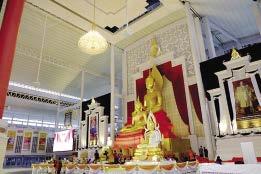
THAILAND: Originally built in the Ayutthaya period, which dates from 1351 to 1767, Wat Tha Sung or The Glass Temple takes its name from the spectacular roof made from mirrors and crystals. By the mid-1700s the temple was derelict, but in 1789 monk Luang Pho Yai restored it, with more buildings later added to the complex. It now has many pavilions with accommodation for meditation. One of the newer main halls, Sala 12 Rai, has recently undergone extensive renovation in preparation for being renamed 100th Birthday of Pra Rachapromyan Cathedral. The 30 year-old hall needed a system to be primarily used for chanting, sermons and meditation teaching. It required even SPL coverage across
its entire area, a challenge made more complicated due to a large number of pillars located relatively close together. Bangkok-based Vision One was called in for the project. It decided on an L-Acoustics loudspeaker system which combined Kara line arrays, Arcs Focus line sources and coaxial X-Series cabinets.
‘Mr Alvin Koh, L-Acoustics applications engineer for Asia, was involved in the project from day one,’ says Vision One’s Tanapat ‘Tony’ Mongkolkosol. ‘He visited the site and discussed the requirements with the temple’s committee, including the project manager monk Mongkolwate, the senior advisor/architect Chumnumporn Chavananont and the interior designer. The support from L-Acoustics helped us to convince the committee that our solution would be the best one to solve the many challenges that the hall presented.’
These challenges included the central part of the hall being around 100m wide by 120m long, with a ceiling height of 23m. The speaker system also needed to be as discreet as possible, in order not to intrude
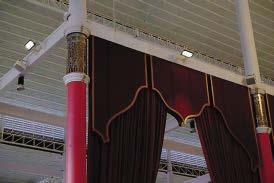
upon the atmosphere of the temple. Using Soundvision software, the Vision One team produced over 20 system designs to ensure that all of the potential solutions had been covered. The final design comprised 48 Kara, eight SB18i, 50 X12, four Arcs Focus and six X8, all powered by 30 LA4X amplifiers.
‘Most of the loudspeakers were flown from the main beams, so we specified the white version of the cabinets to match them,’ explains Mr Mongkolkosol. ‘For the main system we split the Kara into six clusters of eight in three zones, with each zone comprising two clusters, and coupled four SB18i with eight Kara (for both left and right hangs) in zone one at
the front of the hall.
‘Avoiding reflections is the key to achieving a low-level, dispersed sound that still provides an “in the face” sensation,’ he continues.

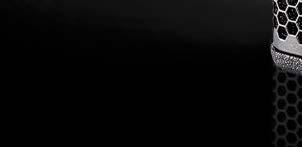

‘With 48 pillars, curtains and side walls to take into account, a lot of attention was paid to determine the best locations for the speakers. We installed 34 X12 as aisle-fills and 16 X12 as stage monitors. Four X8 provide front-fills and two X8 are control room monitors. Finally, four Arcs Focus have been deployed as front stage-fills.’
The result is one that Mr Mongkolkosol is proud of. ‘The Abbot, the project manager, architect, interior designer and all responsible are very happy with the sound quality. They all agree that the hall now enjoys the best sound quality of its 30-year history.’
‘We are very grateful to everyone at Vision One and the L-Acoustics team for all of their hard work,’ adds monk Monkolwate. ‘We now have the ideal solution for delivering the best ever sound in this incredible hall.’
www.l-acoustics.com













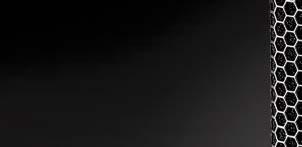






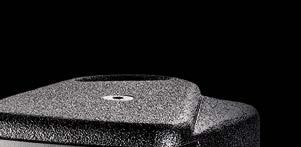



March-April 2017
NEWS
Inside Wat Tha Sung temple
1/2PAGE HORIZONTAL
Loudspeakers were flown from the main beams
Deployed for joy: Upgrading Shekinah Methodist, Perak
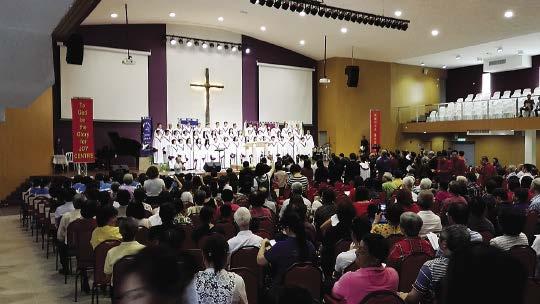
MALAYSIA: Malaysian systems integration firm, Designer Music, has installed a full main sanctuary audio system at Shekinah Methodist Church (Joy Centre), Sri Manjung, Perak, Malaysia. The system utilises loudspeakers and processors from Italian manufacturer, FBT. The front of house system is controlled by an FBT DLM26 digital loudspeaker manager. The main array use stereo hangs of FBT Mitus 2016la active line array cabinets (four per side) and Mitus 212FSA active subwoofer
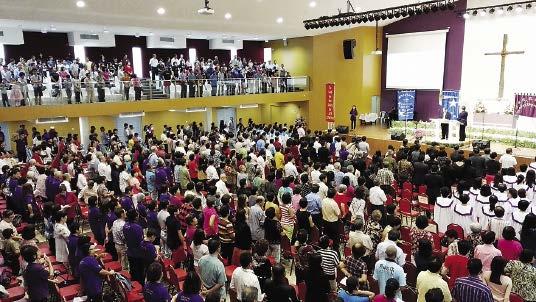

cabinets (one per side). The main FOH array is supplemented by 10 Mitus 640WT wall mount 100V line speaks and a pair of Mitus 118SA active subwoofers.
Four channels of wireless microphones were also installed – a pair of Mipro ACT 53/ACT 50H dual channel systems. Designer Music sourced the equipment from FBT and Mipro distributor Meditec Trader Pte of Singapore.

www.designermusic.com.my
www.audio.com.sg
IMMACULATE VIDEO QUALITY FOR MULTI-SITE STREAMING OVER STANDARD INTERNET CONNECTIONS
NEWS
FBT monitors are deployed in the main FOH array and as fills at Shekinah Methodist Church
The Shekinah Methodist Church main stage
VITEC.COM
Maximising monitoring
THE GERMAN CONGREGATION
Freie Christengemeinde Bremen (FCB), which translates as Free Christian Community of Bremen, professes a goal of positively influencing society through a commitment to people and to ‘bringing the good news of a living and caring God into their city’.
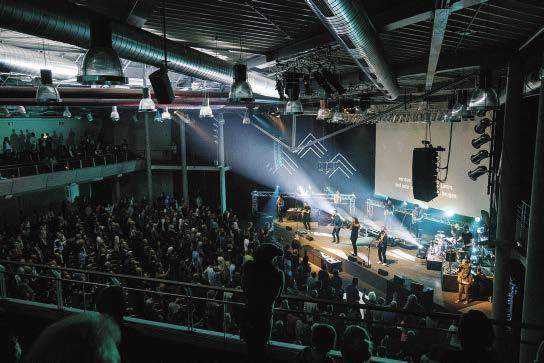
‘Live music plays a key role in our praise and worship times,’ Dirk Meier, FCB sound engineer, says of the church’s contemporary worship. Each Sunday’s line-up of eight musicians is currently built from a pool of 23. The FCB hosts a more traditional service weekly, as well as its contemporary service. There is a small youth worship team as well, and there is support for additional programmes, women’s conferences and weddings.
The church has been at its current main campus location since December of 2004; there are two smaller campuses in neighbouring cities. The sanctuary at the main campus has a maximum capacity of 1,200 seats, though 2,000 worshippers can be accommodated in a standing service. The main campus is also home to a
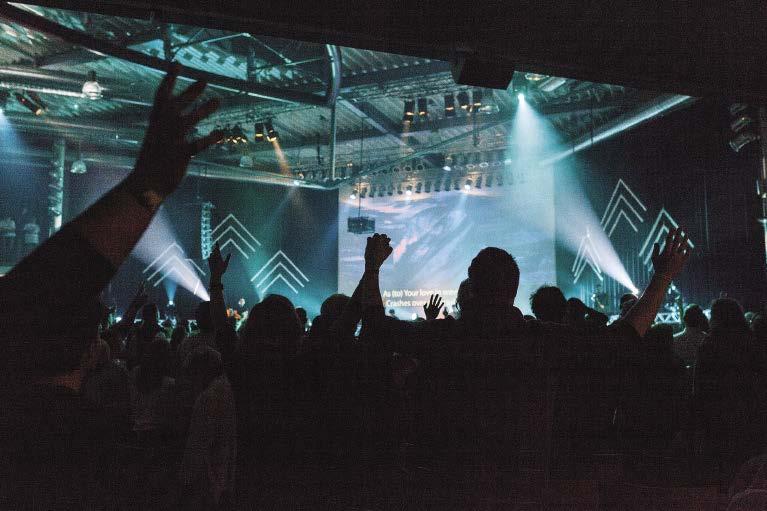
second smaller hall and a dedicated youth hall.
The FCB has a membership of around 700. With visitors counted, some 130 individuals attend each Sunday morning’s traditional service, on average, with 400 worshippers commonly attending the contemporary service that follows. There are also Sunday services at the additional campuses.

The main hall Sunday service production team at FCB consists of two audio operators, one lighting operator and one video operator. The audio team manages 10 channels of wireless signals for microphones, headset mics and instrument transmitters. While the total instrument channel count is 20-24 sources between drums, percussion, bass guitar, keyboards, electric and acoustic guitars, violins, loops and more. Four audio channels are assigned for music and video audio track playback.
The audio is all controlled by a new Soundcraft Vi600 digital console with a 44-fader control surface. There are four channels of talkback, used by the
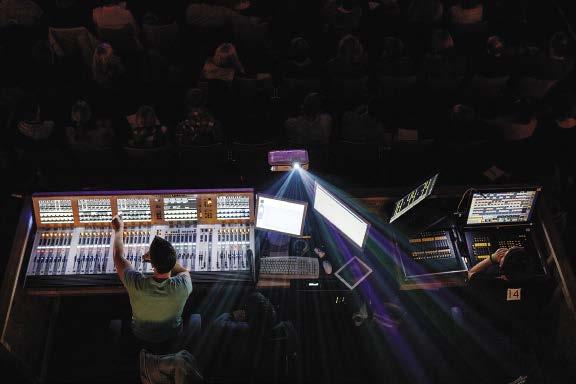
the FOH engineer and the programme director.
The hall’s loudspeaker system is the next area slated for upgrade. ‘At the moment,’ says Mr. Meier, ‘we are still using a conventional speaker setup, with a right-left-right-left main speaker configuration, augmented by sub, near-fill and delay cabinets.’ The all Fohhn system has four 12-inch woofer loaded two-way cabinets as mains, four subs with 18-inch woofers, 16 two-way cabinets with 6-inch woofers as delays, and, for near-fills, two groups of four two-ways with 8-inch woofers. The system is controlled by a Fohhn FC-8 DSP-based loudspeaker controller, with additional processing from a Peavey Digitool DSP unit. Lab.gruppen amps power the system.
‘Our main campus has a small audio studio used to source audioonly live streams and podcasts, and for recording,’ Mr Meier continues.
‘At the moment we are working on the realisation of a multitrack recording solution which will be used by our musicians to improve their
Eight wireless stereo transmitters and body-pack receivers are used for in-ear monitoring by the vocalists, keyboard players, guitarists and translators (the latter when the church hosts non-German speakers). There are four wired IEM feeds for musicians including the percussionist, drummer, and bass guitar player. Along with the recent audio console upgrade, the FCB installed a Klang:technologies IEM mixing system.
The heart of the monitor system is the Klang:fabrik router and mixer/ processor. The Klang:fabrik is fed individual channels from the Soundcraft mixer— the fabrik handling up to 56 audio input channels while serving as a 64 x 64 Dante/Madi (or 32 x 32 ADAT) router. Up to 16 musicians and production team members can create custom mixes from smart phones, laptops/computers or from a mixing desk.
The Klang system allows the musicians to not only create a conventional mix, but through DSP, to place sources in a three-dimensional
PROJECTS
20 WORSHIP AVL March-April 2017
Sometimes it’s what the congregation doesn’t hear that counts –a monitoring system upgrade and a new console are enhancing worship at Freie Christengemeinde Bremen. Frank Wells reports
(Clockwise): Praise band vocalist using a Shure wireless mic; The worshipper’s view during praise; FOH, lighting and video control; Lighting and loudspeakers grace the ceiling at FCB
space, allowing the musicians to stage sources in their mix as they exist on stage (and with head tracking, even allow the 3D source placement to move in correlation to where the musician is looking). The Klang system is completed by the incorporation of a Klang:vier mixer for the wired feeds, with 24-channel ADAT input, 24 x 10 Dante I/O and four individual stereo headphone outputs (mirrored to four line-level outputs).
‘I heard and read about the Klang system long before we considered buying it,’ recalls Mr Meier. ‘Musicianmixed in-ear monitoring is important to us. We need a silent stage because the rear of our stage and the roof cause a lot of reflection when using wedge loudspeakers for monitoring. We are always looking for solutions to minimise stage noise for a better control of our FOH mix.’
Several advantages of the Klang system stood out immediately, for Mr
We still use the Powerplay gear in one of our smaller campuses and in the hall we use for our youth services.’ Video use is simple at FCB. ‘We only use video for promotion of our events and song lyrics,’ Mr Meier details. The 16:9 aspect ratio stage rear screen is 8.5m x 4.8m. In addition, forward projection is used to provide lyrics for
the vocalists on stage, and for speakers, for preview and a countdown timer. For lighting, ‘we use three pointlighting in the center stage, mostly with a convenient profile spot from Altman,’ says Mr Meier. ‘Our standard system uses Robe ColorSpot 575 AT and SGM Giotto Wash 400 fixtures along with eight good old six-light PAR bars. These
all work pretty well with an MDG ATMe haze generator.
‘Depending on the occasion,’ he continues, ‘we add some stuff like the YPOC 700 spot or some nice little Expolite TourWash Compact 76 CM+W, strobes and audience blinder. At the moment we are back to using the standard three-truss approach, parallel to the stage edge (front, mid and back trusses).’ The church uses an MA Lighting grandMA2 desk for lighting control.
While he has praise for the Soundcraft Vi600 console, and the new Klang system, Mr Meier wouldn’t let himself be pinned down when asked to name the single most critical aspect of the FCB tech chain. ‘All parts of our production are important to achieve the best possible overall experience for our visitors.’
www.fcbremen.de
www.klang.com
www.soundcraft.com
the lack of which being what Mr Meier calls ‘the main disadvantage’ of other systems. ‘It enables us to realise 13 mixes with 24 input channels. Plus, it is easy for the musicians to handle and offers them a good stereo or 3D image.’ The band members benefit from better mixes, he says, while ‘the silent stage allows us to have services with different volume levels without affecting the feel of what the musicians hear. At the same time, the Klang system is helpful in keeping our audio operators focused on the audience mix.’
To feed the system, ‘we use a separate layer of our FOH console where we are mirroring all signals from the band – microphones, pickups and direct-ins,’ Mr Meier elaborates. ‘With these mirrored signals, we feed the inputs of the Klang devices through console direct-outs via Dante. After getting used to Dante it was quite easy to install. The system runs very stable.’ Behringer’s Powerplay system was the FCB’s previous monitor solution. ‘The main problem was the limitation of the channel count,’ says Mr Meier. ‘Sixteen input channels are not enough if you need channels for ambience mics, MD/ FOH talk, programme director, click, pre-recorded music tracks, etcetera.
1/2 ISLAND
ENGAGE YOUR CONGREGATION SOUND SOLUTION FOR HOUSES OF WORSHIP

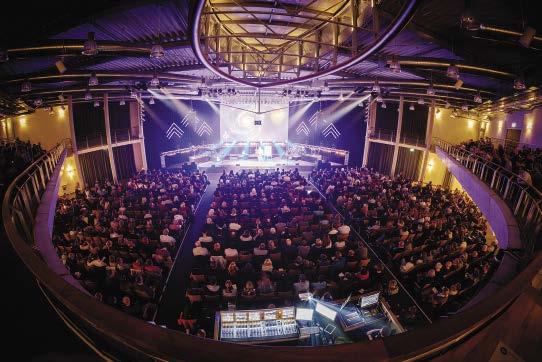
L-Acoustics systems are renowned for their uniform, full-range, natural sound. Our flexible, lightweight systems project crystal clear sound to your congregation, avoiding reverberant architecture. From the front row to the very back, your worshippers will never miss the message. Generous power ensures each congregant has the feeling of being in the heart of your music. Let our sound systems help you achieve maximum engagement for your house of worship. www.l-acoustics.com

PROJECTS
March-April 2017 WORSHIP AVL 21
The view from the balcony
FCB praise band members with Shure wireless mics
Advertising Houses of Worship_139x160_worshipAVL.indd 1 08/03/2016 09:45:10
St Joseph co-Cathedral - Thibodaux, LA
Jericho in Singapore
Gospel Light Church is home to South East Asia’s first Danley Sound Labs Jericho speaker system. Richard Lawn
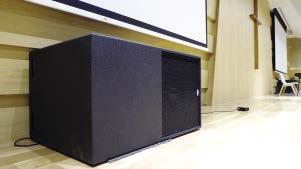
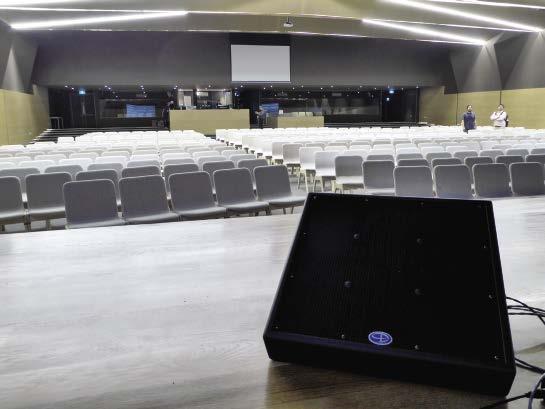
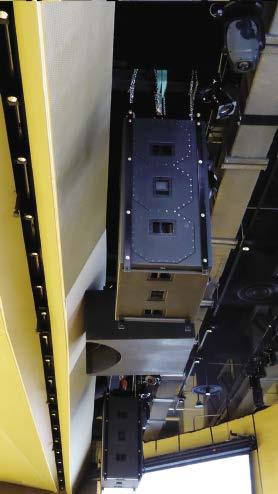
LIKE MANY MODERN CHURCHES IN land scarce Singapore, Gospel Light Christian Church led a nomadic existence, conducting its services in hotel ballrooms as its previous building was too small for its congregation.
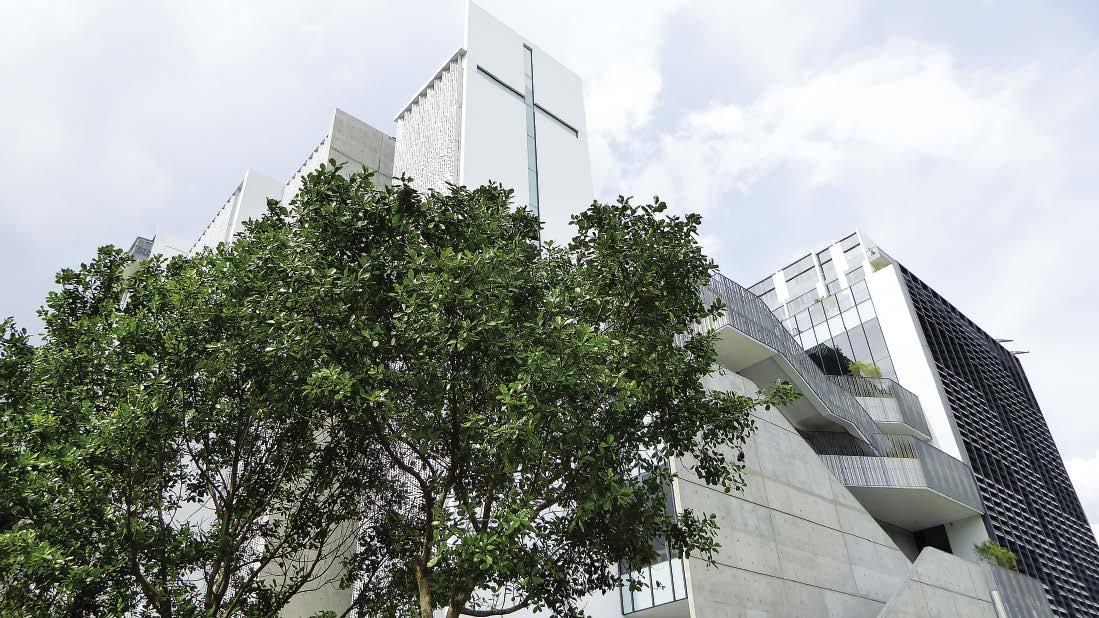
Ten years passed before it had the opportunity to acquire the land on which to build its five-storey, 3,000 sq-m house of worship. Designed by Laud Architects, its Punggol home in the north east of the island has made an impact on the neighbourhood. The addition of South East Asia’s first Jericho loudspeaker system also calls out to its residents.
Systems integrator and audio distributor, Soundsmith Solutions Pte Ltd, was contracted to design and install the audio and visual systems into the 1,100 seat sanctuary, Mandarin Hall, Children’s Hall, ground level foyer and other smaller rooms. In the sanctuary, a Jericho J1-94 loudspeaker system has
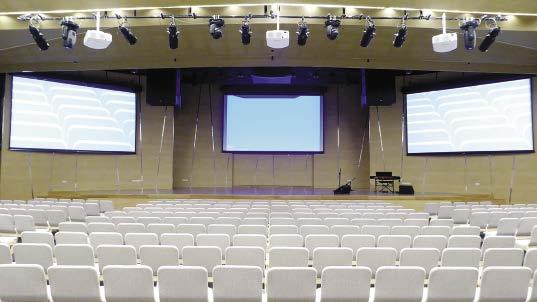
been affixed to the ceiling in an L-R stereo configuration. Low frequency extension down to 25Hz is provided with the addition of a Danley Sound Labs BC218 subwoofer fixed centrally between the two J1-94 modules.
‘The original loudspeaker design specified a line array solution, but the ceiling architectural acoustics and restricted 6m height would not allow this,’ explains Soundsmith Solutions MD Nicholas Loe. ‘Modelled in EASE, our design was approved as our demonstration proved that it could provide powerful audio evenly throughout the Sanctuary. Just as
importantly, it minimally restricted the view of the stage and screens for the congregation.’ With a height of just 1,500mm, the J1-94 packs six 18-inch LF woofers together with six 6-inch mid-range and three 1.4-inch coaxial high frequency drivers within its 24mm Baltic Birch frame. These 15 drivers combine to produce a maximum SPL of 151dB within a 48Hz to 18kHz frequency range.
Weighing 370kg and 232kg respectively, the J1-94 modules and the BC218 dual 18-inch subwoofer demanded heavy-duty hoists to raise them into their desired placements. ‘We didn’t need to tilt the speakers as the internal drivers are already pointing 20-degrees downwards and we further configured and fine-tuned the coverage using Danley Direct software,’ furthers Mr Loe. With the subwoofer virtually resting against a ceiling diffuser, the enclosure has been finished with fabric to reduce the vibration and rattling of nearby fixtures.
PROJECTS
22 WORSHIP AVL March-April 2017
The J1-94 modules and the BC218 dual 18-inch subwoofer demanded heavy-duty hoists to raise them
The pastor and members of the choir are monitored by low profile Danley SM-100M stage monitors
Two on-stage Danley Sound Labs TH118 subs in Mandarin Hall
Three motorised Remaco screens located to the left, right and rear of the stage receive their content from ceiling suspended Epson EB-Z10000U WUXGA projectors
The powerful Danley loudspeaker system is powered by three Linea Research 44M20 four-channel amplifiers. Integrated DSP of these Class-D models can be managed and controlled over the Ethernet network via the Dante input port or from the front panel interfaces. The Dante signal to the amplifiers is output from an Allen & Heath GLD112 digital console located at FOH whose 48 mic input channel count has been increased courtesy of its link to an AR2412 audio rack and two AR84 I/O expanders.
Connected to the digital console over Cat-6e cable running dSNAKE protocol, the AR2412 provides 24 XLR inputs and 12 XLR outputs, providing control to the remote preamp, for which all mic preamps are scene recallable. A single GLD-AR84 expander is connected to the AR2412, whilst another GLD-AR84 links directly to the GLD-112 surface to add a further 16 XLR inputs and eight XLR outputs between them. The Dante signal chain is further enabled by virtue of a rack-mounted Xilica A-1616 Neutrino processor, where system calibrations have been locked for recalling DSP parameters and pre-sets. In addition to some playback sources, the rack at the backstage receives audio signal from a combination of Audio-Technica wired mics and 3000 series UHF wireless systems. The frequency-scan True Diversity function automatically assigns clear, open channels from two independent receiver sections, thus reducing dropouts.
On stage, the musicians are further
equipped with Digital Audio Labs Live Mix CS-Duo personal mixers. Each unit caters to two musicians receiving its feed from a Live Mix-32 distributor over the same Dante digital network. The pastor and members of the choir are themselves monitored by low profile Danley SM-100M stage monitors, which are powered by Work Zenith 2400 amplifiers.
The technological vista is dominated by three motorised Remaco screens located to the left, right and rear of the stage receiving their content from ceiling suspended Epson EB-Z10000U WUXGA projectors. Video inputs to the

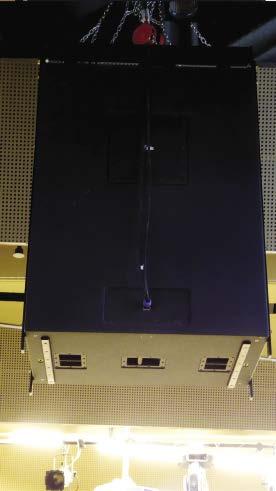

Datavideo SE-2200 six-input switcher include a tripod mounted Panasonic P2HD camera, PC and a Datavideo PTC-150 HD PTZ fixed camera with 30x optical zoom operated by RMC-180 PTZ controllers over Cat-6e cable. A 1U Blackmagic Design Smart 20x20 Videohub assists with monitoring control, visually routing the video. The monitor simultaneously depicts live video, crosspoint connection labels and TV formats. A fourth Epson projector and a rear wall Remaco motorised screen combine to create the role of a confidence monitor. An AJA KiPro Ultra recorder and a Datavideo ITC-100 eight-way intercom completes the video set-up in the sanctuary.

Cabling commenced in March 2016, whilst equipment installation and
dimensions, the A/V systems have been scaled down accordingly in the Mandarin Hall. Powered by a Linea Research 44M20 amplifier, stereo pairs of ceiling suspended Danley Sound Labs SM60F two-way speakers are enhanced in the lower frequencies by two on-stage TH118 subwoofers. Mixing is conducted on an Allen & Heath Qu-32 console, whilst a Xilica A-0816 Neutrino processor is connected to the 16-input model three storeys above. Two channels of AudioTechnica 3100 series UHF wireless have been added, whilst Danley SM100M monitors assist the musicians and pastor on stage.
A fully glazed cry room to the rear left of the Mandarin Hall is equipped with Work Neo 8A speakers, receiving
terminations was carried out eight months later by project manager Adwin Lin and his team. ‘There was no air conditioning and no carpet laid during this time. We would return the next day and find everything covered in dust, so we had to ensure all the equipment was properly covered.’
The SDI video and Dante audio
cabling infrastructure extends to the three floors below, including the 300 seat 4m high Mandarin Hall. Capable of providing bi-directional signal transport, video feeds from the sanctuary can be output onto the Remaco screens on Epson projectors below, in addition to the digital signage throughout the church. A 4K Blackmagic Atem 1M/E production studio includes outputs for recording the service to a video master for broadcasting and streaming.

Mirroring the more petite room
its audio feed from the Xilica DSP via a Xilica Mini K1 with volume control panel on the wall. To the right of this is the video, lighting and audio console area, which itself was almost glazed as part of the interior design. ‘When we saw the plans, we had to make a strong case to the architect to keep it open-plan,’ insists Mr Loe. ‘Naturally, this would have made the work of the technicians a lot harder. Architects and general contractors don’t understand such technical aspects.’
Having taken two years to construct, the worshippers of Gospel Light Christian Church now have a home to call their own. The modular A/V systems integrated into the building’s infrastructure can be easily expanded and configured within the five-storey facility for years to come. The calling to the local Punggol residents by the Jericho loudspeaker system may be subdued by a variety of diffusers, baffles and insulators, but its debut in South East Asia has hardly been muted.
www.gospellight.sg
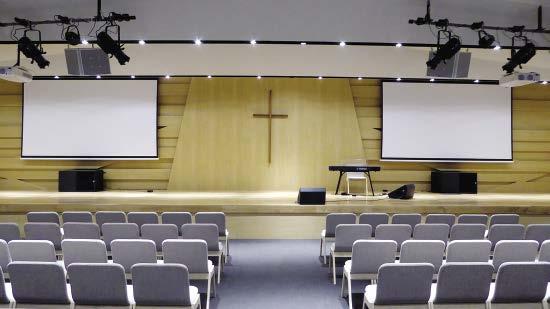
PROJECTS
March-April 2017 WORSHIP AVL 23
One of the inputs to the SE-2200 switcher is a P2HD camera
The Mandarin Hall is equipped with Remaco screens and Epson projectors
The video production area to the rear of the sanctuary
The Jericho BC218 extends the low frequency range down to 26Hz
A rear view of one of the 185kg Jericho J1-94 modules
The outdoor basement level serves as an overspill area and can display services from the sanctuary from Epson EB-Z10000U WUXGA projectors
Rack and roll worship tech
For satellite services that require set-up and tear-down each week, First Baptist Concord opted for a self-contained AVL system packaged touring-style.
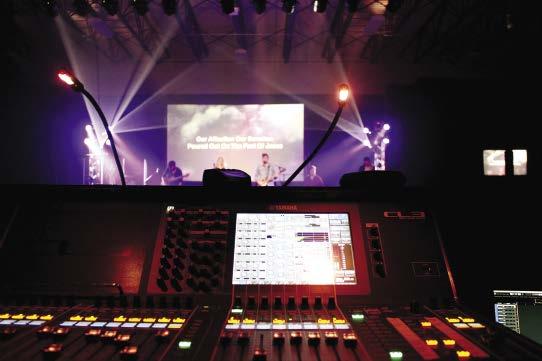 Frank Wells reports
Frank Wells reports
WHEN KNOXVILLE,
TENNESSEE-
based First Baptist Concord (FBC) secured the gymnasium of Knoxville’s West Hills Elementary school for satellite services, producing a dynamic, contemporary worship experience posed some atypical challenges.
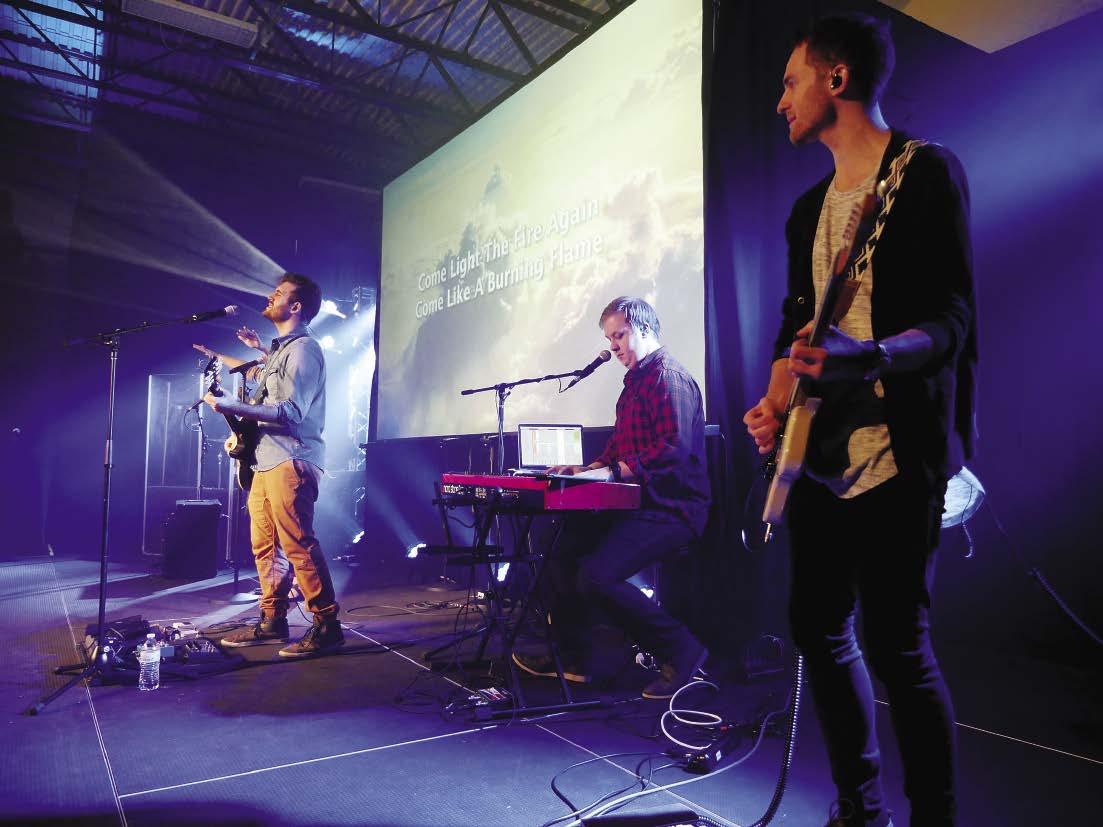
‘With the decision to launch a second campus,’ shares Jeff Lawrence, FBC pastor of worship, ‘we knew it was critical that we create just the right atmosphere for our worship venue. Once we knew this would be a public school gym with weekly set-up and strike, it became clear we must engage a qualified team to help us. We chose JSS (J Sound Services of Nashville), and specifically, Luke Lasater, to design a system which would transform this most unlikely of spaces into a creative and inviting sanctuary of worship.’
FBC was the home church of Mr Lasater, a JSS engineer. Jason Spence, JSS president and CEO, notes that Mr Lasater ‘designed and specified the audio, video, and lighting systems, staging, seating, and pipe and drape per the church’s vision.’
The gymnasium’s challenges include cinder block walls and a corrugated metal ceiling with open metal joists. ‘We draped the entire room for aesthetics, which also helped to knock down the HF,’ says Mr Spence. Black fabric drapes are hung on a pipe and
base system to frame a room-withina-room each week. A 9.8m-wide x 3.7m-deep by 0.6m-high stage is set at one of the 23.5m-wide x 21.3m-deep x 6m-high gym’s long ends; FOH is at the centre of the opposite end of the space. In between, 250 chairs are placed. Lighting and video are controlled from one side. Trusses, lifts, chairs, stages and pipe and drape are stored on-site at the school.
‘The approach to design was that the system would be a blueprint for other upcoming locations, as well as for retrofitting existing spaces as necessary to unify the sound, look and operation of equipment across all the campuses,’ Mr Spence informs. ‘It was important to choose equipment brands with deep catalogues that could handle
just about any audio, video or lighting need – and any budget. The system also needed to be road worthy since it would be loaded in and out each week, living in the back of a truck during the week.’
The system design grew out of the seating layout, says Mr Spence. ‘We had to provide even coverage throughout the listening areas. The church wanted a clear articulate system for speech, but wanted to feel the band too.’ End-firing sub arrays focus the LF ‘feel’ energy where it is needed, minimising LF build-up in the gym.
Concord West Hills draws 200 worshipers each Sunday for a single 10:30am service. The worship band each Sunday includes drums, bass,
two guitars, keyboards and two to four vocalists. The microphone package is dominated by Shure wired models. Shure ULX-D digital wireless systems are used for lead vocals (with SM86 capsules) and for spoken word (with MX153 headset mics). A Royer SF-12 ribbon mic in the overhead position ‘makes the drums smooth and coherent,’ says Mr Lasater, adding that sometimes the overheads and a kick mic are all that’s needed in the mix. That kick mic is an AKG D12-VR. Royer’s R-122 MkII ribbon mic is in use on the lead guitarist’s amp, playing a consistent role getting the sound ‘he wants and expects.’ Bass and acoustic guitars use Rupert Neve Designs’ RNDI for direct feed to FOH. ‘The warmth and precision, on the bass, is unreal – the RNDI handles the intentional dynamics of the player with excellence. Radial Engineering’s JDI Duplex DI is used for keyboards.
Yamaha’s CL3 digital desk controls the audio. ‘We needed a brand that sounded excellent, was flexible, could be easily learned by volunteers and had consoles to fit a wide range of uses,’ shares Mr Lasater.
‘Yamaha was the obvious choice.’
The 64-channel console, configured with 24 faders, also features Dante networking. The Shure ULXD4Q quad wireless receiver is also Dante enabled. ‘Having Dante built into the
24 WORSHIP AVL March-April 2017
PROJECTS
The praise band on stage
Looking at the stage across the Yamaha CL-3 digital audio console
SMALL VERSATILE LOUD




Active Line Array Series*



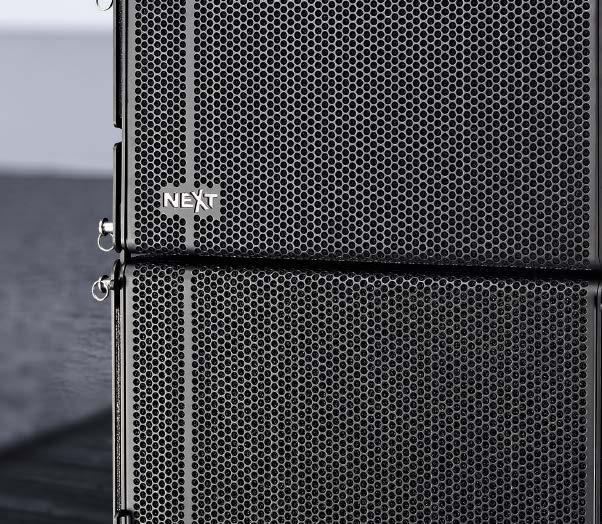

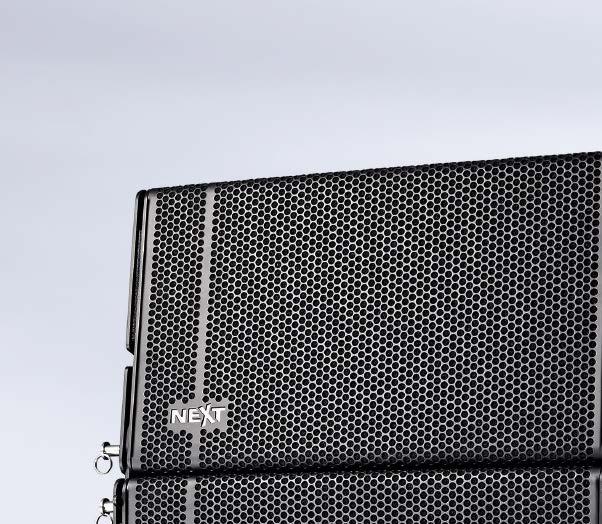
LA122A - Active Line Array Element


2220Wprg 2-Way amplification 135dB max SPL (Full-space)
LAs118A - Active Arrayable Subwoofer

2960Wprg amplification 138.5dB max SPL (Half-space)
* Networkable DSP, control software included


www.next-proaudio.com Designed and Manufactured in Portugal
Shure units makes mic performance monitoring a breeze,’ says Mr Lasater. ‘On the CL3, we can see if a mic is on, check battery or RF levels right before someone goes live.’ A 16-channel MY ADAT I/O card is fitted to one of the CL3’s MY card slots for connection to a myMix personal monitor system.
The eight myMix mixers are fed a combination of direct outs and sub-mixes from the FOH console. ‘We have been specifying myMix for a
CONCORD WEST HILLS BY THE NUMBERS:
Setup team members:
Audio – 3
Video – 2
Lighting – 5
Stage/Pipe and Drape/Chairs - 6
Service call staff:
FOH Audio - 1

Lyrics/Video PB - 1
Lighting - 1
Stage Manager - 1
Producer – 1
while,’ Mr Spence confides, ‘because of its superior sound quality, simple operation, and ease of integration with other systems. We have heard comments from everyone on stage about how detailed their IEMs are. You can hear the benefits in the house too.’ Accurate monitoring, says Mr Spence, means that vocalists aren’t straining their voices and the band can balance with each other. The band plugs their custom or universal personal IEMs directly into their myMix, while the worship leader and vocalist plug into Shure PSM300 wireless receivers that are fed from their myMix mixer.
On each side of the stage, on crankup lifts, are a Nexo S1210 and an S1230 cabinet for FOH, while four Nexo LS18s subs are spaced on 0.14m centres under the front of the stage. ‘The sound and build quality of Nexo were the first factors in the loudspeaker brand’s selection,’ says Mr Lasater. ‘While they work as a Nexo yoke-flown pair per side in this small environment, the array could be flown and expanded with more boxes as needed for other spaces.’ A single Nexo NXAMP4X4 DSP-equipped amp provides power and processing.
Video content – messaging, song lyrics, and virtual pastor videos – are rear projected through a Draper 16 x 9 aspect, 4.5m x 2.6m screen, located upstage, centre, via a Digital Projection E-Vision 8500 laser

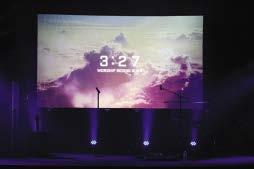
projector. A Kramer CSM-4x4HFS switcher can freely matrix the video sources feeding each of three destinations – the projector and two side-of-room televisions. Two Apple computers run ProPresenter software, feeding HDMI into the Kramer. The Thunderbolt output of one of the Macs feeds a Crestron HD-EXT3-C HDBaseT transmitter which connects to a Crestron receiver at a back-of-room confidence monitor. Crestron EXT3-C pairs also connect the Kramer to the TV and projector inputs. When virtual sermons are used, the early service from the main campus is delivered via Dropbox to one of the Macs for playback.
A downstage lighting truss is flown on Applied Electronics crank-up lifts, upstage trusses on bases, and there’s a small floor package. ‘The rig is stored and transported in road cases,’ Mr Spence explains. ‘All fixtures stay prepped with clamps. All power and data is loomed as you would expect in a touring package. It goes up and down quick.’

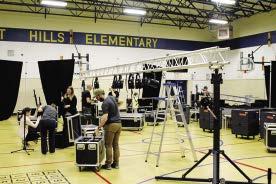
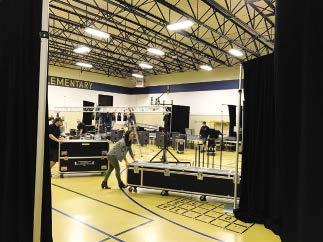
Lighting fixtures are all LED, Martin Rush Par1s for backlight and accents, Rush Par2s for FOH wash, with Rush MH8 mini profile moving lights on stage. ‘I think we raised the bar a lot on the lighting system from what the church expected, especially on their budget,’ shares Mr Spence. ‘The Martin Rush series gives us the most bang
for the buck.’ Completing the lighting system are ElektraLite eyeBall RGBW fixtures for drape warming, and eyeBall warm-white Architectural fixtures as house lights. A Chavuet Amhaze II hazer is used for lighting effects.
Lighting control is via Martin’s M2GO console providing four DMX control universes.
Concord West Hills rolls their own power, the tech systems sharing a three-phase, 225A/208VAC generator, with power distribution from Motion Labs.
JSS had a short timeline from materials order to delivery, Mr Spence recalls. ‘It was important,’ that JSS had the entire system tour-ready prepped – labelled, loomed, colour-coded, racked and cased, because we only had one day to set up the entire system with their staff and train them.’ The
system was ready on time, and so were Concord West Hill’s volunteers, most of whom had very little experience. ‘They are now loading in and are ready for service in two to three hours,’ says Mr Spence, ‘and their loadouts are down to one hour. I have a couple of decades of touring experience and those load-in and -out times are impressive.’ The volunteers were self-sufficient even for their first service, he reports.
The FBC leadership enthuses about the results at West Hills. ‘It sounds and looks great every week,’ says technical coordinator Doug Mentzer, ‘and the load-in and -out times are quick, thanks to how well everything is organised. Additionally, once everyone was trained the load-in and -out times dropped significantly – even with smaller crews.’
At project’s end, JSS learned that the church expected only ‘okay, or pretty good’ performance from their mobile system. ‘Our expectation of ourselves,’ says Mr Spence, ‘was that we would deliver exactly what the church asked for; an impactful concert-style sound system, suitable lighting system for modern worship, and a life-size pastor projected on the screen. It’s extremely gratifying to deliver well beyond their expectations. And there is no higher compliment than to be asked to help improve the worship experience across their other campuses.’
Mr Lasater shares that, ‘Growing up in this church gave me opportunities to develop my technical skills, and it was very rewarding to deliver a quality system that fits their unique needs.’
David Henderson, associate pastor of worship and multi-site at FBC, concludes that the design has ‘blown way past our expectations of what a portable setup could look and sound like.’ Mr Lawrence agrees. ‘Not only did JSS accomplish and exceed our expectations, they did it in record time! We couldn’t be more grateful of how JSS has helped us venture into the unknown of a second campus to create something we think is pretty special.’
PROJECTS
26 WORSHIP AVL March-April 2017
set-up timeline: Saturday: 17:00 Setup 19:00 Programming 20:00 Out Sunday: 07:00 Call 08:00 Rehearsal 09:00 Volunteer service 10:30 Main service 11:45 Loadout 13:15 Lunch time!
Weekly
Countdown to worship
Rolling in the cased gear
Preparing loudspeakers for mounting
The amp, RF and stage box rack
Prepping for worship
HELO: Stream, Record and Deliver Open Up a New World of H.264 Streaming Workflows


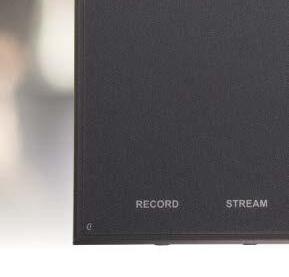

HELO is AJA’s new H.264 streaming and recording stand-alone appliance bringing both SDI and HDMI I/O into a single device. Simultaneously stream out to a content delivery network (CDN) as well as encode and record high quality H.264 files to SD cards, USB drives or network based storage.

HELO offers a range of professional workflow options with both 3G-SDI and HDMI inputs and outputs, and the power to handle up to 1080p 60 recording formats. Small and portable, HELO offers dedicated record and stream buttons, and a web-based user interface for easy configuration.
Stream
Streaming made simple.
A USB connection and robust web browser based UI allows easy, advance setup of a CDN connection. When you’re ready to stream, press one button and deliver media with flexible support options.
Record

Live means now. Live means pressure. HELO offers a dedicated record button right on the front of the device for immediate recording.

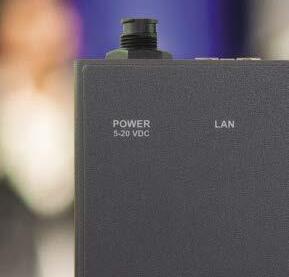
Plug in an NTFS 3.1 or FAT32 formatted USB drive, SD card or connected network storage, and you’re good to go.
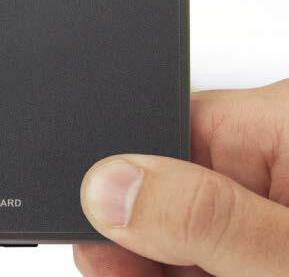
Encode



Top performance. Top results.
HELO encodes to H.264/MPEG-4 ensuring bandwidth efficiencies with support for a wide range of file types.



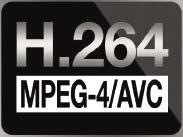


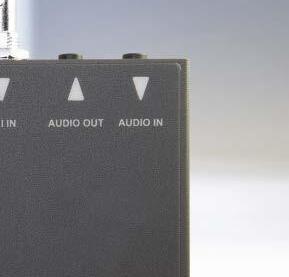


Wide ranging compatibility: from tablets to smartphones or desktops, no translation necessary.

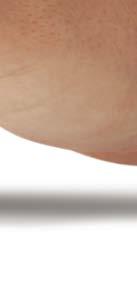





Find out more at | www.aja.com
Programmed for progress
The technical ministry at Yan Fook Church serves its congregation through a regular programme of upgrades and extensions of technology, reports Caroline
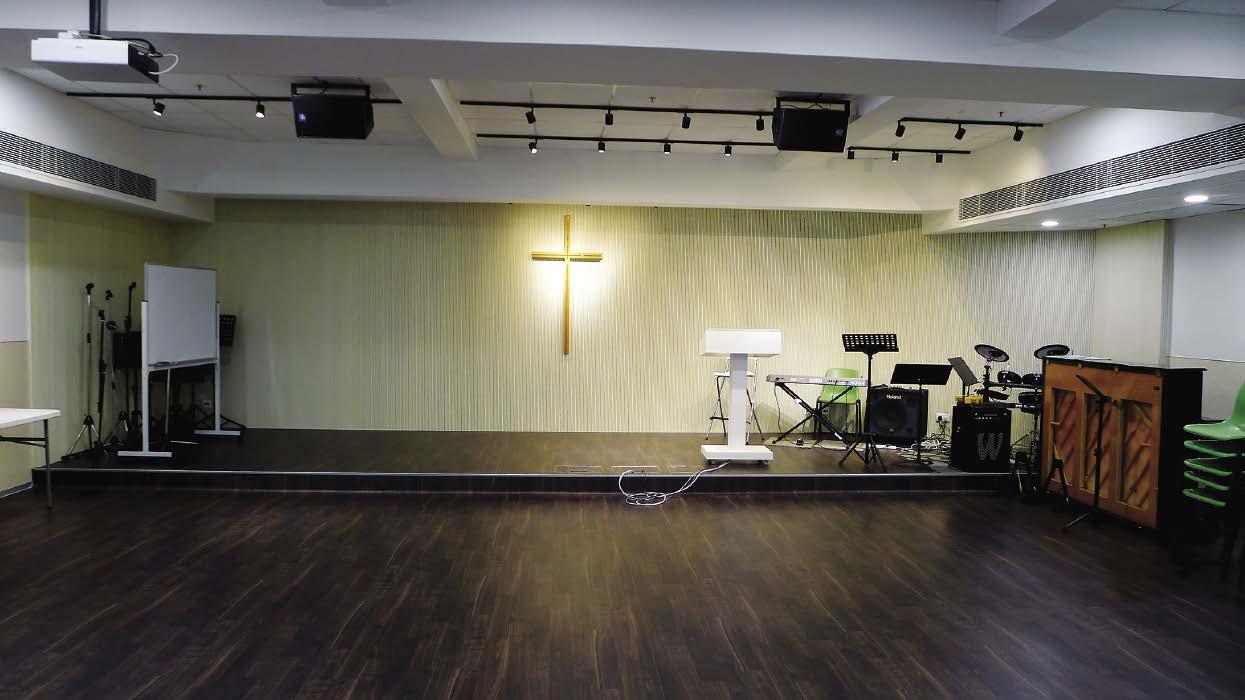
 Moss
Moss
from the mainland, and the church simultaneously moved its headquarters to Hong Kong.
Today, the EFCC has a total of 52 churches across Hong Kong Island, Kowloon, the New Territories and Island District. The largest of these, Yan Fook Church, occupies a modern steel and glass tower in Kowloon, a brand-new building which the church moved into in 2004. The building, which includes an 1,800-capacity main sanctuary on the second floor, is a hive of activity, offering services and worship groups in Cantonese, Mandarin and English for a congregation of around 10,000 and growing.
The requirements of modern worship styles to keep up with the latest advances in A/V technology mean that the church undergoes a regular programme of upgrades. For the past decade, this process has been overseen by A/V engineer Lo Koon Shing, an industry professional who used to work for Hong Kong broadcaster TVB before joining the church on a full-time basis. The latest refurbishment has just been carried out on the 17th floor of the building on Cheung Sha Wan Road. Sound
The 17th floor is predominantly used for fellowship groups, training, talks and study. The main room can accommodate 200 people, with a total of eight breakout rooms for smaller groups, six of which can be subdivided by partitions which have been treated with new acoustic panelling to cut down the noise spillage between areas.
‘The floor is being used for exactly the same purpose as it was before the refurbishment, but the previous sound system was old, so it’s been improved and the acoustics have been done properly,’ says Mr Lo. The new installation includes an Allen & Heath Qu-16 rackmountable digital mixer along with a Qu-Pac ultra-compact digital mixer with touchscreen control and an AB168 portable I/O audio interface rack, and a dBTechnologies system for the main area. Two dBTechnologies Flexsys F10 powered speakers have been installed for the main space, which can also be subdivided. When the room is opened to its full capacity of around 200 people, a delay system of two Flexsys F8s is switched on to run with the main system, and stage monitoring is via two dBTechnologies Flexsys FM12 powered
PROJECTS
28 WORSHIP AVL March-April 2017
(L to R): Lo Koon Shing and Howard Chan
Yan Fook’s main room on the 17th floor
Ottocanali 1204 8-channel amplifier has also been provided by Tones Tailor to drive the Focal Custom IC 106-T ceiling speakers installed throughout the other rooms.
‘A/V technology is changing very fast, and the digital console has brought big changes with it,’ says Mr Lo. ‘We have a DiGiCo SD8 in the main worship hall, but we needed one in this space too, so we decided on the Allen & Heath. EFCC’s worship style is very musical, with lots of bands and musicians involved in the services. These days there are a growing number of instruments and musicians, so bands now need more of the functions of digital consoles.’ Mr Lo points to the Allen & Heath’s auto mic mixing (AMM) function as being particularly suitable for this room. This reduces background noise and reduces the risk of feedback in situations where a number of microphones are open at the same time. ‘Lots of volunteers are using the desk, and during the evenings we don’t have any technical staff here,’ he says. ‘So we leave them with a few presets and mic inputs, turn on AMM and set a maximum volume level, and they can easily operate the console.’
As well as the operational benefits the new system brings, Mr Lo is keen to point out that the sound on the 17th floor is greatly improved.
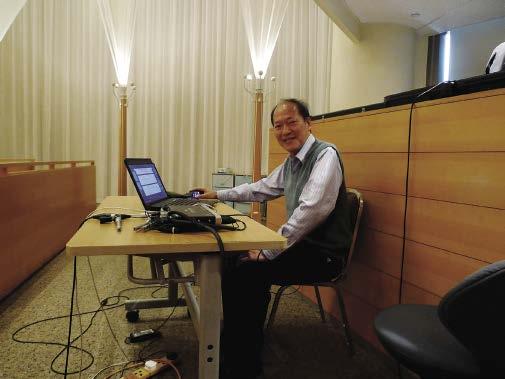
‘The dBTechnologies system provides a very good audio quality, and the new acoustic panels absorb the low frequencies, so the spillage between the rooms is greatly reduced and everything sounds clearer,’ he says. Mr Lo is now engaged in training the church’s team of volunteers to use the new system. ‘Previously, we just had individual PA systems for each room,’ he says. ‘Now, all the control and audio sources go through the Symetrix Prism 8x8 DSP unit, which is equipped with 64x64 Dante channels. In fact,
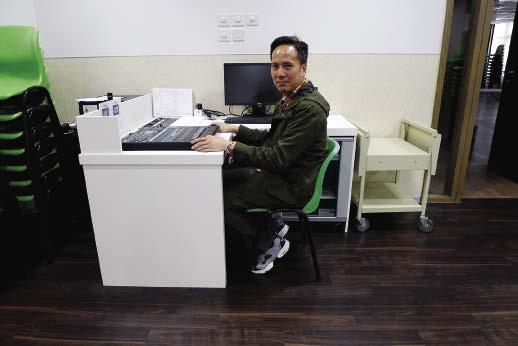
the main difference with this new installation is the Dante connectivity. This means that we don’t just have control of one individual PA system, we can play back and distribute audio from any audio sources to any of the rooms, and if the room is full and we need to expand the system to include other areas on the floor, we can easily do this. The system is expandable and flexible, and we can also use it for other purposes such as emergency paging.’ The new flexibility will certainly help with programming the busy floor. During weekdays, the rooms are full of different fellowship group meetings, bible study groups, training sessions and talks. Additionally, the spaces are often used by outside organisations for meetings. During weekends the floor becomes busier, with around 300 people congregating on Sundays for worship groups.
Down on the 10th floor, Tones Tailor has also provided equipment packages for the newly-refurbished band rehearsal areas. This includes another Allen & Heath digital console – this time a Qu-24 with AB168 I/O rack. ‘They needed a bigger digital console here, capable of handling more inputs,’ says Tones Tailor’s project engineer, Howard Chan. This has been installed into one of two large rehearsal spaces that have been created by subdividing the original area.
Each of the two new rooms has been installed with a pair of dBTechnologies Flexsys F10 powered speakers and a pair of FM12 powered stage monitors.
In this area, the services of Patrick Shek, a congregation member who is trained as an acoustician, came into play. ‘Patrick helped us choose absorption material for use in these rooms, and to provide separation so the other parts of the building aren’t disturbed,’ continues Mr Chan. ‘As the musicians all practice here, it gets noisy so the rooms needed to be well isolated.’

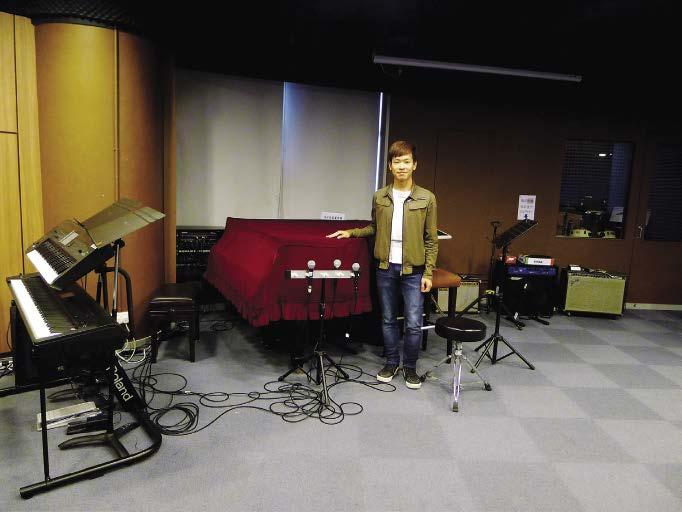
Tones Tailor has also supplied this floor, which includes four smaller practice rooms, with four Allen & Heath ZED-12FX audio mixers, 10 Sennheiser e845 microphones, a Sennheiser e60211 kick drum mic, a beyerdynamic TG D57c drum mic and two beyerdynamic TG 153c overhead drum mics, with 15 Avenson Audio IsoDI direct input boxes. A new video package supplied by the company includes a Kramer VP-734 presentation switcher, Panasonic PT-VW530 LCD projector and a Grandview 100-inch projection screen.

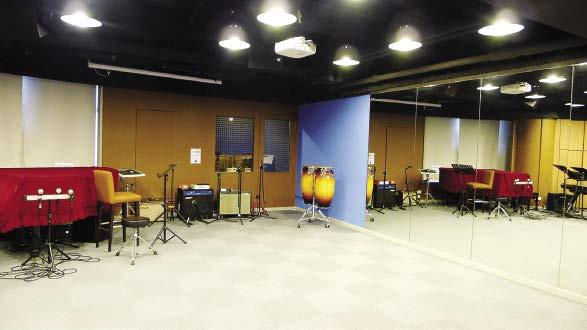

The recent upgrades at Yan Fook have not only improved the individual areas where the installations have taken place, they have shown Mr Lo the way forward when it comes to connectivity. ‘I hope that Dante will extend through the whole building eventually,’ he says. ‘The new installation on the 17th floor is a great demonstration of the technology, to show how it’s capable of making our lives easier.’
www.yanfook.org.hk
www.tonestailor.com
PROJECTS March-April 2017 WORSHIP AVL 29
Tones Tailor’s project engineer Howard Chan
Congregation member and acoustician Patrick Shek assisted on the 10th floor
A/V engineer Lo Koon Shing oversaw the project
The rehearsal rooms have been acoustically treated
A dBTechnologies system covers the main area
The space can be subdivided into different teaching areas
The needs of the band have been met with an Allen & Heath digital console
New surroundings
The run up to Christmas saw Calvary Bible Presbyterian welcome worshippers into its new sanctuary for the first time. Richard Lawn
FOR MANY SYSTEMS INTEGRATORS
who count on houses of worship as their main clientele, the Christmas holiday may be merited but it comes at a price, as Singapore-based Soundsmith Solutions Pte Ltd will testify. In the run up to Christmas, the company worked extra shifts to complete several large A/V contracts including Calvary Bible Presbyterian in Jurong. Working alongside other contractors to complete its projects within deadline, attention to detail and careful preparations ensured its success.

The sanctuary within the five-storey Calvary Bible Presbyterian can accommodate up to 800 worshippers. The services are characterised by spoken word sermons and prayers accompanied by a piano and organ, whilst a choir adds an extra dimension during special occasions. However, a relatively extensive A/V system has been integrated into the 12m high room where a large motorised screen together with 55-inch column fixed screens have been added for the rear seats to assist the visually impaired. Furthermore, the services are also transmitted live onto motorised screens and TVs on the lower levels of the facility during large gatherings. The sanctuary was equipped with extensive acoustic panels and diffusers prior to the audio installation in late
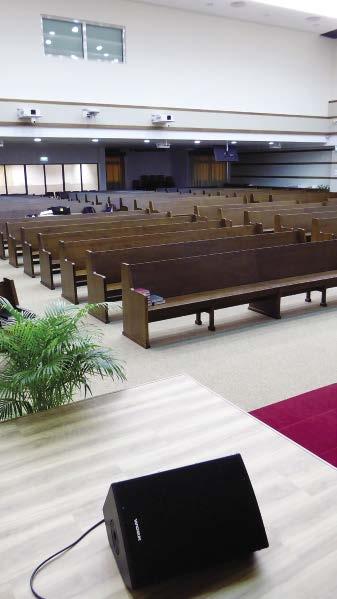

2016. ‘Following our initial meetings with the church and audio consultants CCW Acoustics, we thought the room would be a lot more reverberant for the organ and choir,’ expresses Soundsmith Solutions MD Nicholas Loe. ‘The main consideration was to direct the energy of the FOH system away from the rear and lateral walls. The goal was to provide even coverage across the sanctuary without the need for front- or side-fills.’
This has been achieved by installing an L-R ceiling suspended Danley Sound Labs SH50 three-way system, finished in white. The SH50 incorporates a synergy/tapped horn enclosure that creates a 50-degrees horizontal x 50-degrees vertical coverage pattern within a 50Hz to 18kHz frequency range (±3dB). ‘With the SH50 serving as the main FOH system, we could keep the coverage pattern tight within the venue,’ further explains Mr Loe.
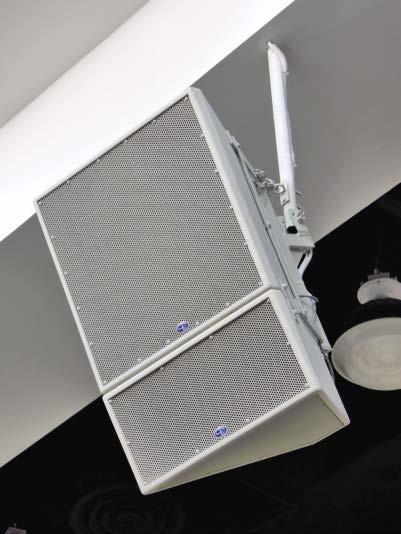
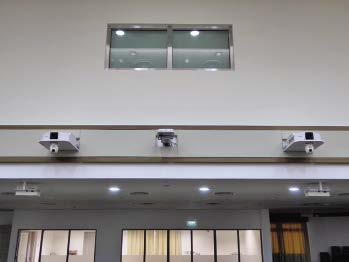
‘Being a three-way system providing lows down to 50Hz also meant the requirement for subwoofers was bypassed, which kept the costs down whilst improving the aesthetics.’
Down-fills for the SH50s have been added in the form of SH-DFA 10-inch co-axials. Four under balcony SH Micro models serve those seats towards the rear, whilst SM-100M models serve as monitors on stage for the pianist, organist and pastor. Linea Research
44M20 (FOH) and 4M06 (rear-fills) and Work Zenith 1800 amplifiers supply the main loudspeaker and Work Mimo10 stage monitor systems respectively. A Xilica A-1616 Neutrino processor with customised pre-sets provides DSP management for the main system.
An Allen & Heath Qu-32 Chrome Edition digital console is used for mixing the services, whose features include a touchscreen interface, automatic mic mixing, a spectrogram and additional monitor mixes. ‘This is our first digital console,’ discloses volunteer and aeronautic engineer Elijah Lin. ‘There’s a lot of built-in complexities, but we’re finding it straightforward so far as it’s analogue friendly.’
The Furman CN3600SE sequencer
PROJECTS
30 WORSHIP AVL March-April 2017
The L-R Danley Sound Labs SH50 three-way speakers and SH-DPA down-fills are finished in white
The newly built Calvary Bible Presbyterian Church boasts A/V connectivity on all five levels
Rear wall fixed Epson EB-Z10000U WUXGA projectors and Datavideo PTC-150 HD PTZ cameras
Work Mimo10 stage monitor systems serve the pastor and musicians
Four SH Micro models serve the seats furthest from the FOH SH50 system
also protects the new investment.
‘We experienced a lightning strike six years ago during a service and it hit the console, completely destroying it,’ recalls Mr Lin. ‘Not only that, we used to numerically label all the audio equipment so that the volunteers would know which amplifiers and equipment to power up and power down in sequence. That’s just a one touch operation now.’
With a change in the wireless frequency spectrum, the previous microphone system was made redundant. As such, a new one was required. Following market research six channels of Audio-Technica AT3100R UHF were acquired for use with handheld transmitters and lapel worn models. Twin A-T 8668 goosenecks adorn the pulpit for sermons conducted by Pastor Isaac Ong, whilst dual AT2031 mics are placed on stands for the monthly choir. Finally, a DPA Microphones 4099 model was specified for the piano. ‘In terms of price performance, Audio-Technica are hard to beat,’ furthers Mr Lin. ‘The wireless models don’t suffer from interference and I like the rugged metal construction of the handhelds together with the lack of handling noise.’
Cat-6e audio and SDI video cabling enable the signals to travel bidirectionally throughout the building.
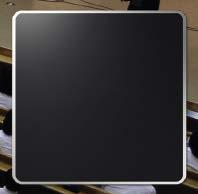
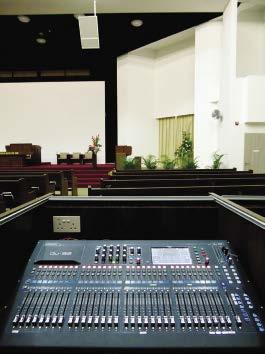
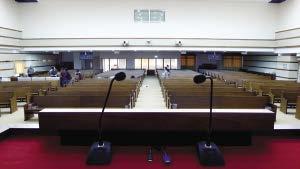
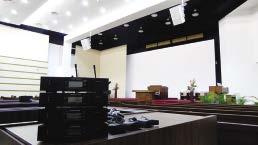
To enable the broadcasting of services, a Datavideo SE-2200 video switcher receives feeds from two Datavideo PTC150 HD PTZ fixed cameras controlled by RMC-180 PTZ over infrared in addition to a PC. A Blackmagic Design Smart 20x20 Videohub assists with monitoring control, visually routing the
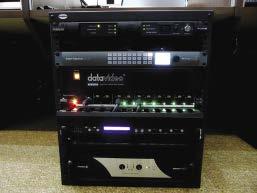
video. L-R Remaco motorised screens receive their outputs from Epson EBZ10000U WUXGA projectors, whilst a third Epson projector performs the role of a confidence monitor.
As Mr Loe and his colleagues combined tuning the system with some final soldering, the church staff entered
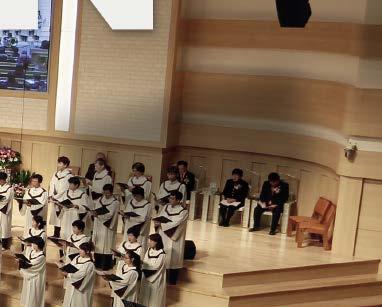
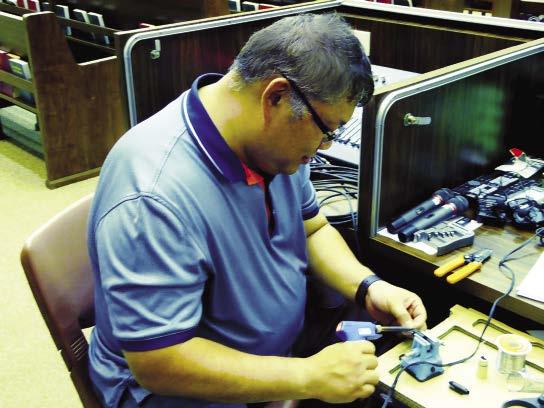
to adorn the church with Christmas decorations. The congregation at Calvary Bible Presbyterian experienced an early start to the season of giving as they settled in to their new surroundings.
www.calvaryjurong.com
Kling & Freitag balances passion with precision for uncompromising audio quality and 'German engineering'.
We are driven by a desire to provide and technically guarantee music and sound as a genuine sound experience. This is what each product by Kling & Freitag stands for - or, as we say, 'Passion built in'

PROJECTS
One of the audio and video equipment racks located at FOH
Project manager Edwin Ng soldering on site
An Allen & Heath Qu-32 console provides all the church’s FOH and monitoring needs
The pulpit has been fitted with twin A-T 8668 goosenecks
An Audio-Technica AT-3100R UHF system was used
Hall 3.1 Booth B11
A new lease of life
Maranatha Community Church decided the best plan for its old lighting system was to donate it to a church in need. Kroonstad Cell Church was the beneficiary as James Ling discovers
WHAT CAN A HOUSE OF WORSHIP do with its old equipment when it’s time to upgrade? Many HOWs choose to get rid of what they no longer need. If the systems are unusable then disposing of them responsibly with a company that will be able to recycle the core components is often a good solution. A second option is to repurpose the system for use in a different area of the campus and extending its life this way. However, there is also a third option. If the equipment is still in a good condition and there is nowhere else on site that would benefit from the solution then why not consider donating it to a facility in need? This approach could both benefit another community and provide a longer lifespan for the gear paid for from your congregation’s generosity. This was the option taken by Maranatha Community Church in Johannesburg when it decided to install a new lighting system.
Maranatha Community Church opted to upgrade the lighting in its auditorium by installing Longman Phoenix Bars. This left it with the conundrum of what to do with its existing Robe LEDForce 18s and the associated lighting control software system with PC. Not wanting to throw away equipment that was still in a good condition the team at Maranatha Community Church looked to find the lighting system a new home. This came in the form of Kroonstad Cell Church in Free State.
The last four years has seen the greatest drought in 50 years in Free State and Lesotho. During this time, Kroonstad Cell Church was embarking on an ambitious project to create a new home for its congregation. With funds understandably short due to this situation, the church’s new auditorium was the ideal place for Maranatha Community Church’s Robe system.
Founded in 1997 with a congregation of around 20 people, Kroonstad Cell Church moved location several times in its early years. This came to an end when the church purchased an old factory eight years ago. Since then, a multi-phase project has seen the church go through the process of changing its new home into a campus that was suitable for its congregation.
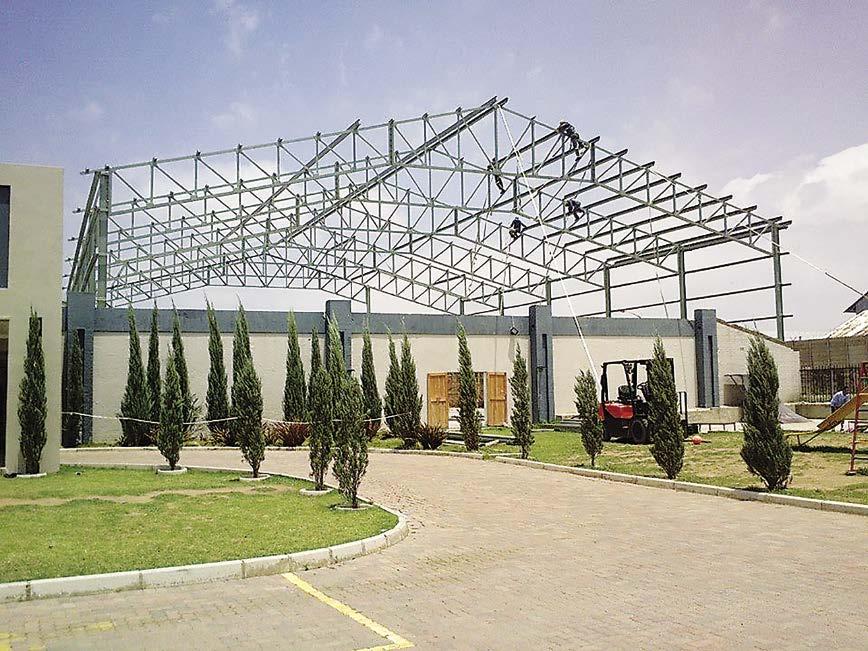
The final stage was creating an auditorium capable of seating 800 worshippers. This was designed to be a space that the church could use for its Sunday services, but would also be available to hire for local community organisations and schools. This was completed in mid-2016 and the church officially moved into the space in June of that year.
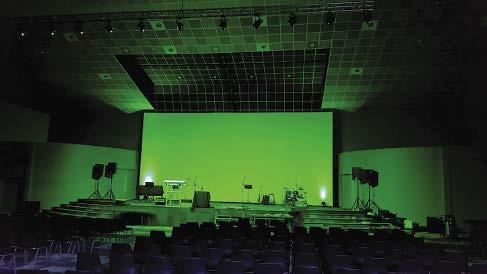
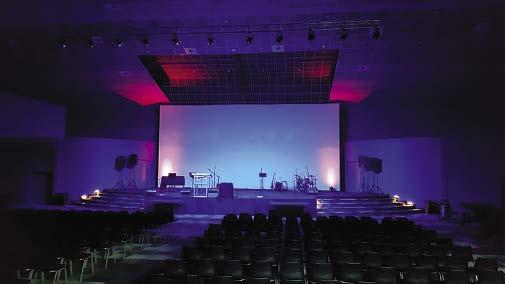
The relationship between the two churches came about as they are both part of TCN (The Christian Network).
‘Our road with Maranatha Church in Johannesburg started through TCN, our local network,’ explains Alan Ogilvie, senior pastor at Kroonstad Cell Church and part of the core leadership of the TCN, overseeing around 14 churches in Free State and Lesotho. ‘Maranatha
Church’s senior pastor, Pastor Leonard Stone, is the senior leader of the TCN. He has an amazing heart and is dedicated to helping smaller and growing churches. Thus they felt as a leadership the need to assist and bless our local church.’
‘Kroonstad Cell Church is a dynamic local church with sound leadership,’ adds Pastor Kobus from Maranatha Community Church. ‘We believe that if you touch a church you touch a community and so we wanted to give them a kick-start in getting on their feet in the new building.’
The level of support offered by Maranatha immediately became apparent. ‘Donations have varied from finances, to some of their people visiting our congregation and
asking what our needs were,’ recalls Pastor Ogilvie.
From a technical point of view the main need was a trussing system to hang the lights from. ‘We chatted to Robert Izzett from DWR Distribution to get advice on a system,’ says Maranatha’s Pastor Kobus. ‘Rob also did a great job visiting the Kroonstad Cell Church and did a weight and design analysis for their needs.’
The result of this was a Prolyte rigging system that was installed by a team led by Keith Pugin from DWR. ‘They had to rip the entire roof off and engineer a new roof and ceiling with wall finishes and carpets, but because of a shortage of funds, the building had used up most of their budget,’ explains Mr Pugin. ‘The Prolyte trussing was all
PROJECTS
32 WORSHIP AVL March-April 2017
Kroonstad Cell Church converted an old factory into a new worship venue
The solution was installed by a team from DWR Distribution led by Keith Pugin
The old audio system was carried over into the new facility
it was a necessity since we had a sold out show with over 20,000 people in the audience.’
dead hung from the new roof structure and all the lighting fixtures which came from Maranatha were installed onto it. We did lighting points and DMX points on the stage for up lighting, and to have the infrastructure for future use.’
While the system is second hand, it still more than meets the needs of Kroonstad Cell Church. ‘The LED stage lighting system is very basic, but for us it is new,’ smiles Pastor Ogilvie. Away from the stage lighting, all the

Moving on to Durban, the system was notably smaller for the 3,600 capacity City Hill Church. Here 16 V-series cabinets made up the L-R main arrays the same number of V12s for frontshows took place at the city’s Hillsong campus. This was the smallest venue the band played at 1,000 people and made use of the church’s in-house d&b system. This comprised 12 V-series cabinets running ArrayProcessing via the manufacturer’s 30D installation handle low frequencies. Control was again via the R1 remote network.
other technical systems at the church including its stand-mounted audio solution have been transferred directly across from the old venue. But there are also plans to upgrade these in the future. ‘We still have more to be done in the auditorium, but as we are today, we are debt free,’ says Pastor Ogilvie. ‘We are trusting for the necessary upgrades in the future.’
‘The tour went down very smoothly with no real issues worth noting,’ says Array. ‘The biggest challenge was the turnaround time between shows, but
eye,’ he continues. ‘No other PA system works this quickly, reliably and easily and gives you such a consistent level of audio quality, scalability and control.’

Rensburg is clearly happy with the performance of his team and the equipment. ‘This wasn’t a loud rock/ dance show, but a more intimate and detailed audio production and we were translated to the audience, from the front row, all the way to the last seat in the back row. The highs were crisp, the mids were full and warm, the lows were deep and punchy throughout the whole venue and we were very pleased with the coverage.’
While not all equipment can be donated in this way, the results seen by both Maranatha Community Church and particularly Kroonstad Cell Church highlight the benefits giving systems a
how quickly the d&b PA systems can be designed and deployed. Rigging d&b very little and the control network just ‘What a pleasure to simply open up our ArrayCalc design in the R1 control software and to have all the settings of other settings) “dumped” into the
second life can provide.
www.dwrdistribution.co.za
This high-level of planning ensured a hitch and showed the advantage that houses of worship can get from calling in professionals for major events.
www.kroonstadcellchurch.co.za
www.maranatha.org.za
www.bluearray.co.za
d&b audiotechnik systems were used for three of the concerts
the in-house system, but this time Grand West Casino Arena was covered line array elements with four stacks of
Of course the other side to this story is the new Longman Phoenix Bars installed at Maranatha Community Church. These have proven to be a popular addition. ‘The technical team, most of whom are volunteers with full time jobs who assist over weekends, now have the ability to add their own flavour to the lighting for each service,’ says the church’s lighting designer, Nereen Bradshaw. ‘They choose their colour sets and decide on positioning, movement and beam effects. They are really enjoying the creative aspect of this and it has given me more free time. I keep adding new positions and new colour sets and the likes, so we just keep going from strength to strength.’
However, back at Kroonstad Cell Church the lights have proven to be extremely beneficial in the new auditorium. ‘The new auditorium has allowed our local congregation to grow greatly. We have many new visitors attend,’ reflects Pastor Ogilvie. ‘This has also given us a wonderful exposure to our community through the use of the venue by schools and other community groups. The stage lights and sound system are fundamental for us to be able to house basic concerts and similar activities in the community.’
While the PA changed to meet the needs of each venue, the way they were driven remained the same for Gigacore 16XT managed switches processors and three Atterotech for delay signal and control. Live Capture tuning software was used for the alignment and voicing of the PA
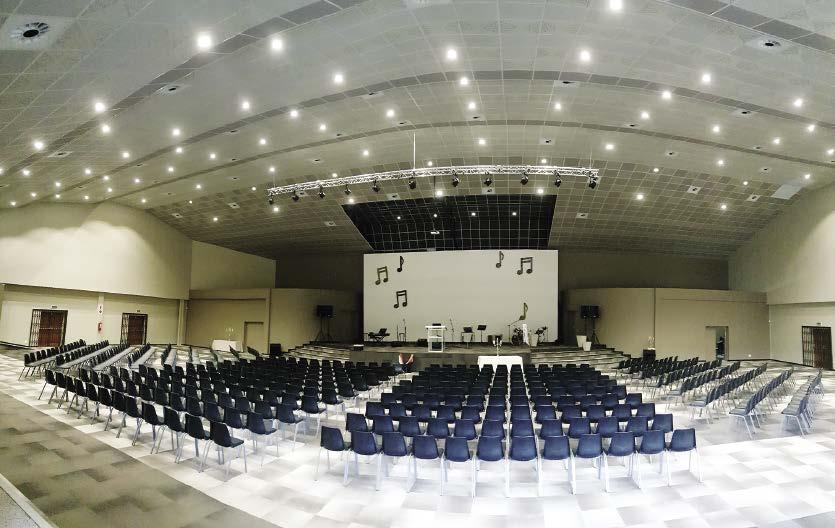
March-April 2017 WORSHIP AVL 33
The 800 seat auditorium is used for Sunday services and community events
The Robe lights were donated by Maranatha Community Church
graphs and API collaboration with Lake Controller software. A Lectrosonics
January-February 2017 L
Bethel Music played four concerts in their recent tour of South Africa
SOUNDBITES
14-17 MARCH
Prolyte Campus at DWR Distribution Johannesburg, South Africa
Providing the tools and training to use the Prolyte Group products safely and in compliance with applicable standards and regulations. Offers a complete program of learning activities to create awareness on the safe use of Prolyte products.
www.dwrdistribution.co.za
17 MARCH
DTP Systems Workshop Adelaide, Australia
A free of charge 4-hour workshop that focuses on the practical implementation of Extron’s new generation Digital Twisted Pair products, the training is suited to those tasked with designing and installing, operating and troubleshooting A/V systems. Presentations will be complemented with product demonstrations.
www.extron.com
21-23 MARCH
The CABSAT Knowledge Hub Dubai, United Arab Emirates
Delivering whitepapers, industry reports, articles, surveys, opinion polls, features, research and insight from across various sectors, Knowledge Hub delivers a range of content providing insight and industry information as well as an extensive library of information to keep you up-to-date.
RCF and Italian university to provide sound engineering university course
WORLD: The Department of Science and Methods for Engineering of the University of Modena and Reggio Emilia is working in conjunction with Italian pro audio manufacturer RCF for the sixth consecutive year to provide a university course in sound engineering. The course begins on 20th March 2017 and will be conducted mostly as an online programme, with one week onsite in Italy.
The course has been developed as part of RCF’s Audio Academy and will require participants to spend one week at the academy in Reggio Emilia, Italy, from 15th – 19th May 2017. The final day on campus will mark the end
date of the course, in which the final examination will be conducted. Those that participate in the course will gain knowledge of the latest sound technologies, including transducers and speaker systems, and how these can be applied in the professional audio market. The course is split into four modules and RCF will provide a global reference project carried out by its engineers as a case study to be explored during the programme.
The four modules are: Environmental Acoustics in open air and inner spaces including design and simulation methods; Transducers and speaker systems including clusters, arrays and
point source configurations; Electronics including circuit analysis, filters, amps and DSP; Sound system design including practical experiences in measurements, listening tests and tuning.
Professor Luca Larcher from the Department of Science and Methods for Engineering, University of Modena and Reggio Emilia will serve as the course director. The course will be delivered in English.
For further details and the course brochure, please visit www. soundengineering.unimore.it.
www.dismi.unimore.it www.rcf.it
Sennheiser comes to Raipur
INDIA: Sennheiser’s Sound Impression Series roadshow recently stopped in Raipur for the first time, showcasing a variety of the German manufacturer’s products, in addition to studio monitors from Neumann and a range of solutions from Apart Audio. Local sound engineers, representatives from A/V rental companies and dealers, musicians and artists, as well as sound enthusiasts, attended the event.
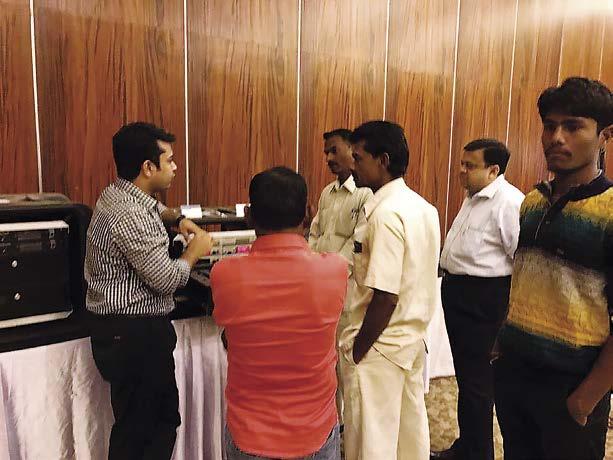
The Sound Impression Series is part of the Sennheiser Sound Academy and tours India to provide the country’s sound professionals with understanding of the latest technologies and techniques.
‘With our focus on pursuit of perfect sound, Sennheiser launched the Sound Impression Series in 2013 to share the experience of perfect sound with professionals and audio enthusiasts,’ explained Vipin Pungalia, director, professional

segment at Sennheiser Electronics India Pvt Ltd. ‘The love and enthusiasm from people all around has encouraged us to make this successful series bigger and better with every edition. With every edition,
we want to reach out to more people and thus taking the series to Tier 2 cities like Raipur which gave us an overwhelming response.’
www.sennheiser.com
34 WORSHIP AVL March-April 2017
EDUCATION
SEMINAR DIARY
RCF and the University of Modena and Reggio Emilia are collaborating in the course
Sennheiser’s Sound Impression Series debuted in Raipur
NO COMPROMISE. DIGITAL 6000.
From the Sennheiser Professional Wireless Range.
No compromise in performance.
Whatever you’ve experienced before expect more, even under the toughest RF conditions. The outstanding audio quality, rock solid RF wireless transmission and proprietary audio codec from Sennheiser’s wireless masterpiece, the Digital 9000, are now available for the most demanding live productions with the Digital 6000.

No compromise for your business.
Digital 6000 is ready to be used with a wide range of Sennheiser and Neumann capsules and antenna solutions, increasing the return on your existing investments. Made in Germany, the two-channel digital wireless receiver features an ultra-wide 244 MHz switching bandwidth and a wide range of connection options, making Digital 6000 a smart, reliable choice for years of professional use.
No compromise in your workflow.
Digital 6000 integrates seamlessly into digital or analogue system infrastructures via Dante, AES-3 or transformer-balanced analogue outputs. Security is ensured by AES 256 encryption. An automatic frequency setup function and dedicated management software (WSM) make for simple, reliable operation.
2000 5000 Digital 9000 Digital 6000 Sennheiser Professional Wireless Range Discover the entire Sennheiser Professional Wireless Range at sennheiser.com/professionalwireless
Selecting a vocal mic
What goes into choosing the best vocal mic for a given application? Gordon Moore demystifies the process

Protecting you and your congregation’s hearing

A great mix isn’t great if it damages worshippers’ hearing and exposes a HOW to liability, shares Gordon Moore
THE MODERN CONTEMPORARY service has evolved, especially in the evangelical house of worship, into a full-on production complete with advanced lighting, sophisticated staging and production values and livelier music. This trend has moved
Wireless
MICROPHONES HAVE A WIDE range of applications and purposes as well as a wide range of sonic characteristics from one model to the next. What works for one application doesn’t work well for another. So how do you select a microphone when choosing it for vocal purposes?
Vocal mic choice begins with the selection of the element, the


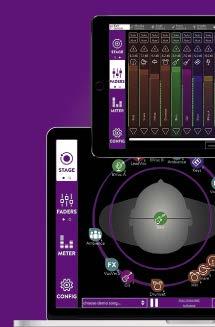


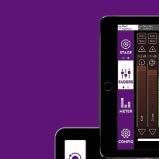





Inexpensive, disposable foam ear-plugs Earthworks M23

transducer component in the head of the microphone – many elements are available in both hard-wired and wireless versions. The ‘best’ microphone sound is highly subjective and in many cases based on the ear of the performer or the sound engineer. A microphone that may sound great for a crooner such as Sun Nan or Rain Bi will be a terrible choice for a
The Audio-Technica AE4100 is a dynamic handheld vocal mic

1/2PAGE HORIZONTAL
1/2PAGE HORIZONTAL


KnowHOW
36 WORSHIP AVL March-April 2017
KnowHOW
38 WORSHIP AVL January-February 2017
mics, like the Shure model being used here by Hillsong artist, Taya Smith, typically have interchangable capsules
the maximum SPL level as becoming a goal of sorts – proudly showing their newest achievement in level online because they just set a record.
Stop and consider, however, the purpose of worship and the responsibility that we have to the health and safety of the congregation in attendance. Consider also, the health of the worship team, the musicians, the lighting techs, lay leaders and others who might attend multiple services.
In short, there is such a thing as too loud. In most countries, exposure to excessive sound in the workplace can lead to legal problems both criminal and civil. Beside the legal obligations, the church sound operator has moral obligations, obligations clearly defined in scripture to provide safety and sanctuary to those who come to worship. Failing both obligations should not be a choice when setting sound levels.
What are the signs of problems?
First, complaints. If the congregation is complaining that services are too loud, they probably are. In any group, there will always be a complainer or two. But if you are getting regular comments from normally happy people, sound
levels are probably too loud. During the service, look at the congregation – if a few have their hands over their ears, the volume is too loud.
Second, your own experience. At the end of the service, do your own ears need recovery time before your hearing returns to normal? If so, the services are too loud. You should be able to shut the mixing board down
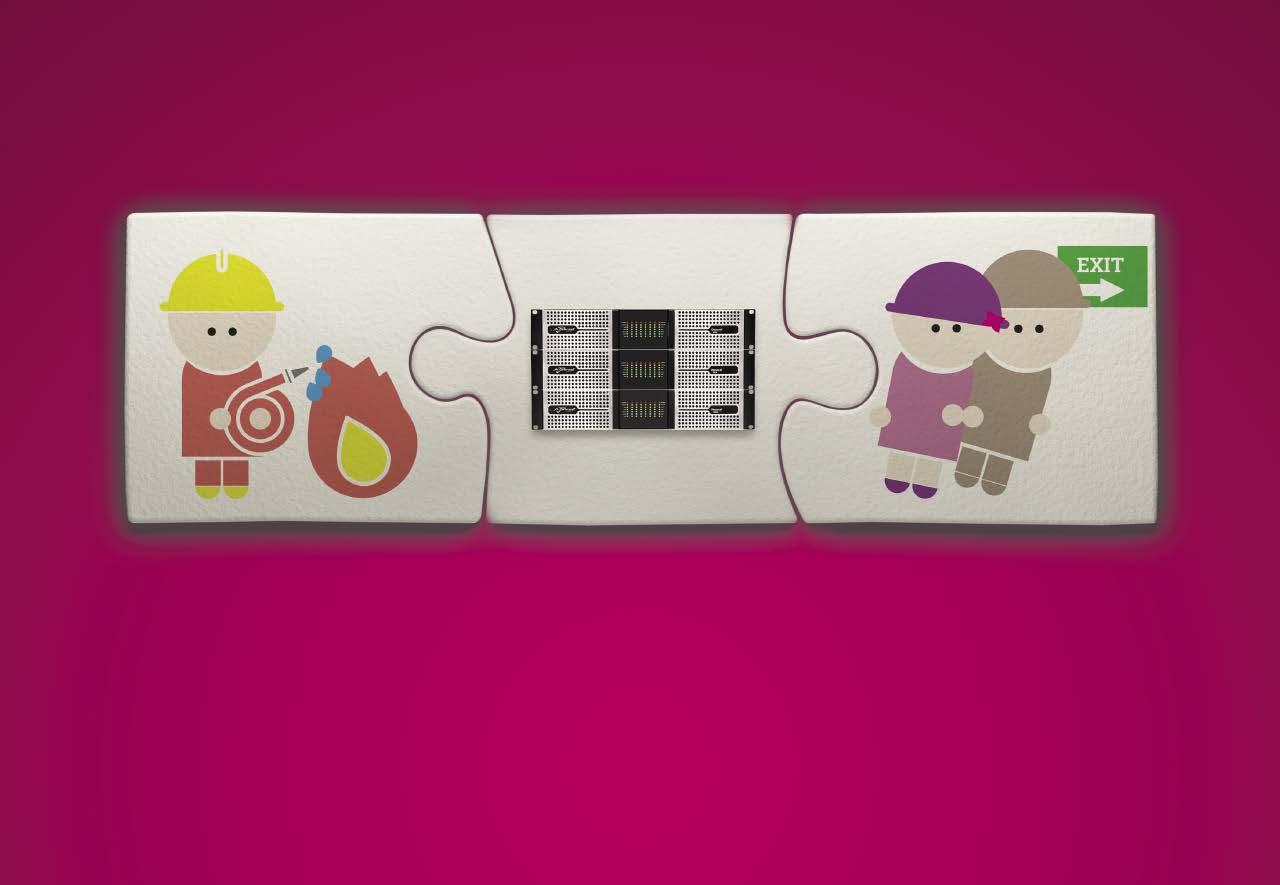
lingering effects (numbness, ringing, muddiness, a ‘plugged-ear sensation’) to excessive sound levels.
What are the legal limits?
In the United States, occupational exposure is governed by the Occupational Health and Safety Agency (OSHA). OSHA’s permissible exposure
and have a whispered conversation immediately. Any muddiness, or ringing or other impairments to hearing directly after a service are strong signs that the service was too loud. Your hearing is being damaged every time you have any
limit for an eight-hour day is 90dBA –(90dB SPL A-Weighted). They also use what is called an exchange rate of 5dB. This means that for every 5dB increase in SPL, the limit must be cut in half. So, if the level is 95dBA, then the limit drops to four hours; if it is 100dBA, the
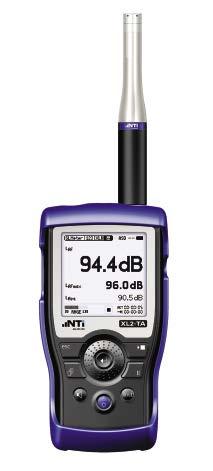
limit is two hours; if the level rises to 105dBA, the limit is one hour. These limits were established for workplace environments where the exposure can be steady such as factories.
Another health organisation, the National Institute for Occupational Safety and Health is even more stringent recommending exposures be limited to 85dBA for eight hours, and the halving of time (the exchange rate) at every 3dB increase. This makes even better sense given that every 3dB increase means a doubling of amplifier power. See the accompanying chart showing both standards. The NIOSH research has shown that even under OSHA standards, hearing loss is common and pervasive in
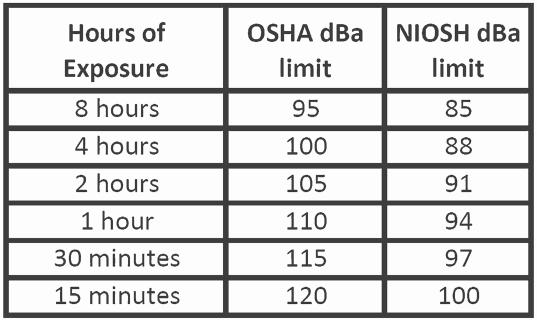 Safe SPL exposure guidelines
Safe SPL exposure guidelines
powersoft-audio.com 8-CHANNEL AMPLIFIER PLATFORM SIMPLIFY YOUR MISSION CRITICAL AUDIO SYSTEM Redundant Dante™ and output routing GPO, remote on/off swithc and MAIN/AUX input select In-depth network and remote control Redundant power supply 8x8 Input / Output matrix Highest level DSP with multi-stage signal processing Suitable for mixed lo-Z and 70/100 V loads Up to 1500W per channel @ 4Ω
NTI’s XL2-TA Sound-Level Meter
the workplace even when exposure meets OSHA standards. Under NIOSH standards, that means exposure to 100dB should be restricted to 15 minutes per day. Australia follows the same limits as NIOSH with a maximum exposure of 140dB peak.
I have attended services where the levels exceed 103dB (and more!) for much longer periods than 15 minutes. When asked, the sound mixer usually says, ‘Oh, we often get much louder than this,’ as if it is a point of pride. I then ask, ‘So, you don’t mind damaging the hearing of the congregation or yourself?’ Unfortunately, the answer to that is usually denial that a problem exists or that it is their responsibility.
How do we measure ‘too loud’?
Every sound booth should have a basic SPL (Sound Pressure Level) meter. That meter needs to be able to register, accurately, from very low levels (less than 40dB SPL) to very high levels (over 105dB SPL). It should have switchable fast/slow response for the display. It should have a switch allowing the choice
Correcting Room Response
FLATTENING room response can help reduce overall volumes. While the corrected vs uncorrected response shown is
between A-weighted and C-weighted. The A-weighted option is the standard by which safety measurements must be made. Before measurement, A-weighting rolls off low frequencies, and less dramatically high frequencies, modelling the sensitivity of human ears at low levels. Remember, though, that the low frequencies can cause damage every bit as much as high frequencies (ask any former artillery officer – just remember to ask him in a loud voice). For a more sophisticated approach, using a spectrum analyser (properly calibrated) will permit better monitoring. The spectrum analyser will let you see better where the loudness is and adjust your system accordingly without an overall take away from all frequencies. For example, you may see that there is far too much bass in the system and it is skewing your mix into the ‘too loud’ range. Turning down the bass player suddenly makes your measurements fall into a more reasonable level and within the recommended limits.
Where do we place the measurement microphone?
of the church members and reduce the liability of the church by avoiding harm to the congregation. Sometimes this can be a very tough political battle. The sound mixer must base all arguments in science, regulations, and in spiritual stewardship for the health and wellbeing of the congregation. Demands by worship leaders for louder unsafe levels are based on pride and ego and have no place in establishing such a policy. Take a copy of this article to that meeting and defend the health of your congregation.
exposed to high SPL levels for extended times that offer safe, almost invisible protection. Good safety plugs can drop levels 20dB without adversely affecting perceived frequency response.
Can we make a difference at the sound board?
Absolutely. First - Make certain your sound system is properly equalised and set up. If you have a smooth flat response, you will be offering a more balanced spectral content without ‘hot’ frequencies that may be more prone to
Second - Pay closer attention to your mix – is the bass player too loud? Pull him down – it will give a cleaner musical experience and keep your system within limits. Too much lead guitar with screaming highs? Try a little EQ on that channel to smooth it out.
Corrected vs uncorrected room response (Image courtesy of JBL Professional)
for a studio set-up using JBL’s Room Mode Correction (RMC), the same principle applies to a worship sanctuary. With the uncorrected response, the room modes artificially boosting the low-end would cause a mixer to push the mids and highs louder to compensate. With a corrected response, the mix can be balanced at lower sound levels.
The measurement microphone needs to be placed in the loudest spot in the congregation seating for complete accuracy. This, however, may not be feasible because of seating arrangements. In that case, take sample readings to locate the loudest spot in the facility – pink noise played rather loudly is a good source. Make a note of that reading. Then, move your microphone to the sound booth and take another reading with the same source. Note the difference. If the reading in the sound booth is 6dB lower than the reading from the loudest spot, you will know that you must add 6dB to every reading you see from the booth. If you are using a computer based program, you can usually calibrate the meter or analyser to accurately reflect the difference. This eliminates the need to add 6dB every time you look at your levels.
Okay, so we know how loud we are – now what?
Your next step is to establish, by policy and training, the maximum SPL level the sound operator should be allowed to have in the church. This should be done in consultation with the worship leader, the band leader and the church leader. The sound persons’ responsibility is to protect the hearing
levels should be no more than 88dBA SPL. This is fairly loud and we get occasional complaints of ‘too loud.’ On average, we operate at about 85dBA.
How can we get louder for services?
The congregation is there for only an hour and the NIOSH limit jumps to 94dBA for one hour. If we are only playing loudly for 25 percent of that time, the level can jump to 100dBA. That makes it ‘safe’ for the congregation but not for the worship team.
The answer to that is mandatory hearing protection for the worship team. The worship leader (lead singer) and band can play with sound isolating in-ear monitors. The technicians and worship assistants (lay leaders, and so on) who stay for the whole morning must wear protective ear plugs. Luckily, there are now several options for unobtrusive ear plugs for those

Third – Get a hearing test! Find out your own personal spectral response. If you have upper frequency hearing loss, your mix may end with too much high-end- making it sound brittle and harsh. Learn how you hear and then compensate. I attended a church where the operator had combat hearing loss. His mix was harsh, thin and tinny. I showed him how skewed the spectral content on his system was towards the top end and then showed him how to balance it using a spectrum analyser app on his phone as a visual guide. His mixing is now a combination of what he hears and what he sees.
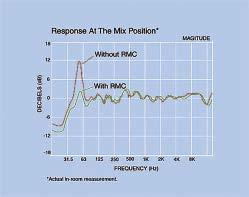
What else can I do?
Protect your congregation – ask for a budget for foam ear plugs for those who wish to add another level of protection for their hearing and make it clearly known you have them. Low cost ear plugs are readily available and can be provided for those who ask. I was at a concert where the levels were horribly excessive. A few rows down from me I saw a family with very young children in attendance. The parents had foam earplugs in their ears and their kids had shooters’ ear protection earphones – just like you see at a gun range). Smart parents protect their children’s hearing.
Smart church sound system operators protect their congregations hearing. Remember the children – they are the most vulnerable to hearing damage and if you won’t protect their hearing, then who will? Remember, you have the knowledge, education and capability to do so. Turn it down.
Mix well and be blessed.
KnowHOW
38 WORSHIP AVL March-April 2017
Universal in-ear monitors can provide a snug fit for noise isolation
performer using a personal IEM system. You can choose either closed back designs which block out the room very effectively (isolation) or open back designs which allow the room levels to be heard easily. The choice will be dependent on the performer’s personal preference. Make sure the impedance works within the range of the IEM output so you can get good volume range. Advantages include a reasonable cost for high quality, a comfortable fit and a wide audio spectrum. Plus, headphones are easily shared between musicians from one service to the next. The disadvantages are high visibility (everyone can see you are wearing ‘cans’), weight and bulk, and they can mess costuming and hair.
Option 2 – low cost ear buds, like those often provided with cell phones. These are inexpensive options that actually deliver fairly decent sound. These units sit in the outer ear. They do not seal the ear canal well and permit a high amount of level to pass from the room – this may prompt the performer



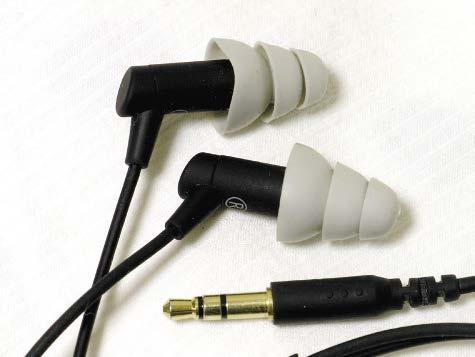


to boost volume to dangerous levels, dependent upon the stage volumes and the performer’s personal style. Advantage – very low cost. If you have well controlled stage volumes and a large rotation of many performers, these earbuds are economical solutions for a tight budget. With proper cleaning and hygienic practices, they can be shared. For just a few dollars more, you can move up to … Option 3 – good quality universal earbuds. This style of ear bud has a rubber or silicone seal that actually seals up the opening of the ear canal isolating the performer from the stage and room sounds. These units start at very reasonable costs and generally come with a few sizes of removable inserts allowing for use with varying ear sizes. The advantages of this option are reasonable cost, good isolation and good sound. Their disadvantages are that they are not purpose-built for IEM use on stage,
but rather are consumer-grade and designed for personal music players. These should not be shared. Option 4 – multi-driver IEM universal earbuds. These units are purpose-built for stage use and are popular with audiophiles. The high-end IEM insertable earpieces offer from one to four drivers for different parts of the spectrum and deliver serious improvements in the audio quality for the user. For many discerning performers, these professional quality universal IEMs are critical for monitoring their own performance and that of other musicians. Their advantages are high-quality sound and superior isolation. Their disadvantage is higher cost. In most houses of worship, the use and selection of these units is left to the performer and the performer bears the cost. The performer will be

394-Channel 192 kHz USB 3.0 Audio Interface
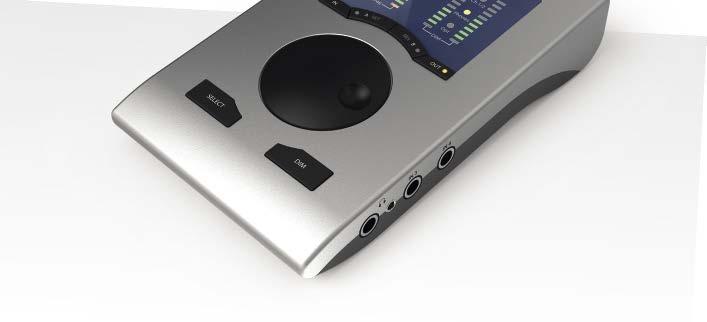
· 196 Input / 198 Output channels

· 2 x MADI I/O optical
· 1 x MADI I/O coaxial
· 2 x Analog Mic/Line Preamp Input (XLR/TRS)
More Information:
· 4 x Analog Output (Main XLR + Phones)

· 1 x AES/EBU I/O via breakout cable
· 1 x MIDI I/O via breakout cable
· 3 x virtual MIDI I/O via MADI I/O

visit ©2015 MOVEK, Inc. Deliver the music: AVL_HoW Campaign-DeliverMusic.indd 2 P37 KHL.indd 1 59 khl.indd 1 visit ©2015 MOVEK, Inc. Deliver the music: AVL_HoW Campaign-DeliverMusic.indd 2 P37 KHL.indd 1 59 khl.indd 1
XT
MADIface
Corporate Headquarters Asia / Australia: RME Trading Ltd. o ce@rme-trading.hk
www.rme-audio.com KnowHOW
34 WORSHIP AVL November-December 2016
The relatively ubiquitous Apple earbuds are an example of inexpensive universal IEMs
Etymotic Research Hf5s are an example of high quality universal IEMs
Babyface Pro 24-Channel 192 kHz bus-powered professional USB Audio Interface The Choice of Professionals for Live and Studio Work Corporate Headquarters Asia / Australia: RME Trading Ltd. office@rme-trading.hk · www.rme-audio.com
Futuresonics Spectrum Series G10s are single driver, yet professional grade, IEMs
Smooth switching
FOR MANY
HOW TECHNICAL
TEAMS, the purchase following a video camera will likely come in the form of a vision mixer, commonly known as a video switcher. ‘At its most basic level, video production within a HOW should be an accurate representation of the services taking place,’ shares Blackmagic Design EMEA’s head of sales and marketing, Simon Westland. ‘This can be done very effectively with just a single camera shooting the service, however by adding in additional camera angles, on-screen graphics and professional production effects, video production can help to create an engaging and immersive production, so that viewers watching in other rooms or from further afield can really feel part of the congregation.
‘Essentially,’ he adds, ‘if you want to have multiple cameras filming a service then a switcher will allow the production team to move seamlessly between each camera signal to produce the video stream, or programme, which can be watched on screens within the venue or online.’
‘Switchers are important because they help make the viewing experience more engaging,’ says Snell Advanced Media product manager, John Carter.
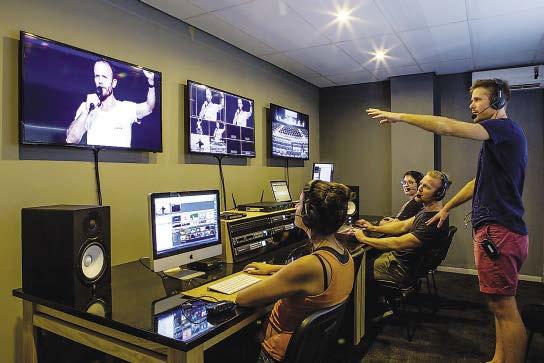



‘A vision mixer will setup visually appealing graphics and effects and transitions to air, and within the service, the production switcher has the features to tell the story to those within the direct environment and those watching from the broadcast distribution mechanisms. They are a means of communicating with the world, sending signals to the congregation, feeding monitors to add to the message of the production to those immediately in the vicinity.’
So, presuming that a video switcher has been deemed necessary, Worship
AVL has taken some tips from switcher manufacturers to help select an appropriate model and ensure your video production can be confident, glitch-free and professional.
‘There are several models of switchers, some with more advanced functionalities and some with less, and they can also vary completely,’ explains Analog Way’s Philippe Vitali. ‘What varies is essentially the number of inputs and outputs and the number of layers to superimpose, along with
route them to the screens. High-end switchers such as our LiveCore series, offer a wide variety of functionalities.’
For those new to video production and switchers, it’s easy to presume that the more features a product has, the better. However, the key for newcomers is that they can execute the most basic of transitions smoothly. For this reason, each of the manufacturers highlighted specific feature sets to focus on.
Mr Carter explains that: ‘It depends on what it is that is required to achieve with the production switcher. If the show is a simple setup with a couple of cameras and graphic effects then a smaller production switcher can be used and the operator can have little or no experience. In this instance, operators should pay attention to: Which crosspoint button on the panel is what source, which row on the ME (Mix Effect) bank is preview and programme (to take the correct source to air or to preview it before taking to air), the transition t-bar or cut, mix and auto buttons, the keyer functionality, creating lin/luma keys to be able to brand your show,
team feels comfortable with a basic programme mix, a useful technique is to add hymn lyrics onto the screen, so the congregation can join in easily. Renewed Vision’s ProPresenter is a very popular application that will overlay graphical content onto an incoming video signal.
‘Also consider how the switcher will be controlled,’ asks Mr Westland. ‘Will you use a traditional panel, as you would see in production galleries, or do you want to use control software on a tablet or laptop? Some switchers, including our Blackmagic Atem range, can also control functions on cameras connected via SDI, so even if you have a small A/V team, the switcher can give you even greater capacity for capturing different elements during a service.’
Mr Vitali shares that: ‘There are some basics of switching that beginners must master. Firstly, they should
are more accessible and intuitive to use than others, and picking an appropriate switcher for the task at hand can help simplify the learning process considerably. ‘Of course, it will depend on the switcher, but a good first step is to make sure all of the team feel comfortable in the transition block: get used to the different types of transitions and mixes, as well as the preview and programme functions,’ explains Mr Westland. ‘Make sure that the switcher has a good-quality multiview feature, which will allow the director to see all of the video sources, and preview the next shot to move to.’ Also consider what equipment you are already using, and how it might interface with a new switcher. ‘There are switchers which can be operated via multiple platforms by multiple users,’ offers Mr Westland. ‘So, for example, a team using a Blackmagic
KnowHOW March-April 2017
Video production can be very complex and involved. Worship AVL offers some tips for achieving confident and glitch-free video switching
Philippe Vitali from Analog Way
Blackmagic Design’s Simon Westland
John Carter from SAM
The worship team at Linc Church using Blackmagic Atem switchers
Atem can control it via a network setup, and all take on different roles all using the same switcher. Spreading the workload between multiple users can be incredibly advantageous. Different users are able to control different elements of the production, such as video, audio, graphics or camera control. Also, don’t forget to consider audio when you start your video production. If you decide to bring in the audio from an external mix, you’ll need to make sure you’ve got audio and video in sync, otherwise people will immediately spot the issue.’
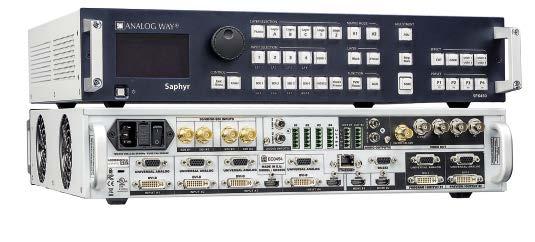
Even this introduction to switchers might sound a little alien to some readers, which is a good reason to start familiarising yourself with the terminology before you even lay hands on a unit. ‘Look at the manufacturers’ websites and sign up to newsletters, updates and even clubs, as we all often offer open days, training sessions and exhibition visits,’ promises Mr Carter. ‘Our Club K offers members lots of great information and “How To” videos which are completely free and are designed to help operators. Become members of vision mixers’ websites and forums as there are often people from all over the world that write in their experiences and useful techniques. Again, we have a forum in the Club K that covers operational and technical specifics written by users from all over the world and with all different levels of experience.’
‘We advise volunteers to be trained on how to run all the video processor functions,’ says Mr Vitali. ‘To help volunteers use our products, Analog Way has designed user-friendly solutions for an intuitive control through valuable features including drag and drop and dynamic graphic content, for example. The company has also developed comprehensive
training programmes on its major lines of mixers and seamless switchers to ensure a richer user experience. Furthermore, our AW Simulator tool can be a very useful device for self-training.’

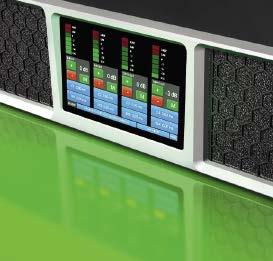


There are also a few common mistakes to try and avoid. ‘Probably trying to do too much before they feel completely confident,’ comments Mr Westland. ‘People will notice very “clunky” transitions and mixes, so it’s better to start off with a few basic mixes, and build as the team’s confidence grows. The same goes for adding graphics, lower thirds captions and other elements from the media pool. Ideally the whole production should feel very natural – both for those watching as well as those producing it.’

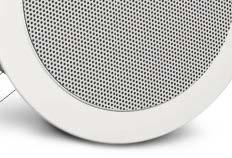








Generally, beginners are not aware of the configuration,’ adds Mr Vitali. ‘Common mistakes are made on the basic switching techniques mentioned above. We recommend that they take the time needed to configure and memorise inputs and outputs to avoid mistakes once they configure presets. Besides, they must be careful about remembering presets as well to avoid getting presets wrong. To avoid mistakes in switching, Analog Way has developed snapshots on the user interface that enables the volunteer to see every source.’
We’ve covered a lot of the ground of basic mixing techniques in this article, but now those skills need to be put to the test. Get access to a video switcher, check out the manufacturer’s educational offerings, and crucially, just have a play. Practice makes perfect.



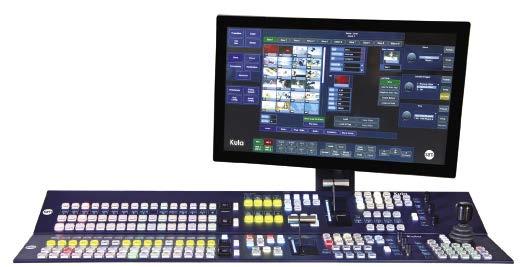
www.analogway.com











www.blackmagicdesign.com
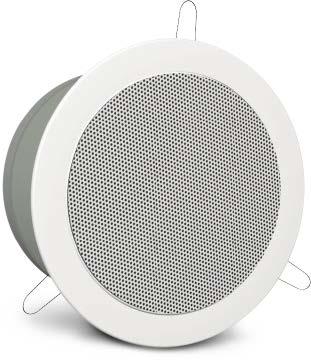




www.s-a-m.com

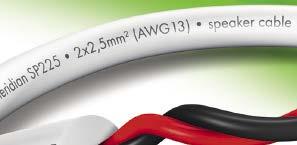



>>



March-April 2017 WORSHIP AVL 41
A SAM Kula switcher with screen
Cables in different colours – especially white:
Microphone cables
Flat Speaker cables
Instrument cables
Analog Way’s Saphyr switcher
>>
>>
>>
Video cables
Media installation systems Just concentrate on worship ... Inconspicuous installation with SOMMER CABLE SOMMER CABLE GmbH Video Broadcast Media Technology HiFi info@sommercable.com www.sommercable.com ORDER YOUR COST FREE CATALOGUE ! Ceiling Speakers 100 V or 4 Ω / Cert. EN54-24 Sophisticated power amplifier –solutions of superior quality and flexibility. 475 speaker presets of 37 DSP-controllers offer the most possible flexibility. Bulk cables
Laying out and setting up a lighting grid
Effective lighting layout relies on positioning as much as on the fixtures itself. John Black shares the critical knowledge you need to know
IN THE PREVIOUS ISSUE, WE looked at the features and benefits of each type of lighting fixture, and at some examples of how each could be used to achieve certain looks. Now we are going to look at how you can lay out those fixtures in a lighting grid that will enable you to achieve your lighting goals. In the theatre world, this is referred to as the distribution of fixtures – choices made as to the direction from which the light illuminates a subject.
There are several different situations you may encounter when approaching the layout of your lighting grid. It may be that you are in a facility that already has permanently installed lighting positions distributed around the auditorium. All the circuitry and hanging locations may be fixed, dictating where you can place fixtures, yet having all the power and data cable distribution available all the time. Alternatively, you could be in a facility that is equipped with rigging attachment points and temporary lighting positions flown using chain hoists and truss according to the lighting needs from event to event. The power and control cables to fixtures may have to be run each time the rig is set up, but you have the flexibility of where you place fixtures. Finally, you could be in a facility that utilises both permanent positions and temporarily flown positions, allowing you the benefits of both setups.
In any of these situations you will need to make choices as to the distribution of your fixtures. While there is no single ‘right’ way to distribute your fixtures and light a stage, there are a lot of resources and theories that can guide you towards achieving a well-lit stage.
Stanley McCandless
Having published A Method of Lighting the Stage and A Syllabus of Stage Lighting in the 1930s, Stanley McCandless is considered the father of lighting design and his method – the McCandless Method – is still one of the most popular theories on
lighting design and the process of distributing fixtures.
McCandless’ theory divided the stage into smaller areas to be lit, all between 1.8m to 3.6m in diameter. Each lighting area is then lit by two fixtures from the front, each of which are positioned 45-degrees above and 45-degrees to the sides of the centre

of the area to be lit. This is known as front lighting. A third light is then placed behind or high overhead the subject and is known as back lighting. Consider for a moment placing a single light directly in front of a subject. The result is that the subject will appear flat and two dimensional because all natural shadows are
washed out. McCandless’ goal was to more closely mirror lighting as observed in the real world. Using McCandless’ method of two front lights positioned at an angle, natural shadows that define features and provide modelling will still exist and help provide three-dimensionality to the subject. Each of these front lights would have colour applied – one warm colour and one cool colour –that would blend together to provide natural lighting. With the addition of a backlight, the subject is given further modelling and will ‘pop’ out of the background more.
To lay out the lighting grid using the McCandless Method, these three lighting positions will be applied to each of the lighting areas. If your stage is divided into six lighting areas for instance, you would plan on 18 lighting fixtures to light the entire stage area. Also referred to as 3-point lighting, this method is lighting distribution at its most basic. It provides good lighting coverage that appears natural and

KnowHOW
42 WORSHIP AVL March-April 2017
Using front-lighting to create a connection with the congregation
Lighting areas defined on a stage plot


provides modelling over the entire acting area, but it does not take into consideration the lighting of backdrops, scenery, or other specialised lighting needs.
McCandless applied today
Before thinking to yourself that the McCandless Method doesn’t have anything to do with lighting in a house of worship setting, let’s look at how it is still applied today. Many worship facilities utilise video recording, streaming, broadcast, and/or image magnification (IMAG), all of which benefit from lighting techniques with ties to Stanley McCandless. This can be seen through the concepts of key light, fill light, and back light, all of which are
visibility is often one of the most important considerations in lighting design in houses of worship. Also, worship staging typically doesn’t have extreme scenic changes –backgrounds, backdrops, and band
or LED wash fixtures and often are also used as a colour wash on the stage. One consideration for backlight fixtures is that you may want to prevent the ability for the audience or cameras to see into the lens of the fixtures as it can be uncomfortable to the eyes or create lens flares (though this can also be an intentional, creative effect). To avoid this, make sure that the backlight is either at a very steep angle, hung very high above the stage, or use barn doors to mask off the visible part of the fixture lens.
more and more in the auditorium as well. As previously mentioned, the backlights in the lighting layout can often be used to create the stage wash, but you can also supplement with additional fixtures as needed. Most often stage colour washes are set up in backlight or toplight positions, and these days are often created using LED wash fixtures. Washing the stage in colour can affect how the audience feels and can powerfully reinforce what is happening on the stage – or distract
Creating texture
commonly used and understood terms with photographers and videographers. The key light is the main light used on a subject and is often the brightest. As the dominant front light, it is often placed at a 45-degree angle to the camera, though different positions can be used creatively to produce certain effects. The fill light is the second front light and is used to fill in some of the dark shadows created by the key light. It should not be as bright as the key light and create additional shadows, but rather just soften the contrasts while allowing some shadowing for modelling. Finally, the backlight creates a glowing edge around the subject and pulls the subject out from the background, further ensuring that the subject doesn’t appear flat.

Building on the McCandless Method, many designers utilise larger lighting layouts using 4-point and 5-point lighting methods. Of course, this means even larger fixture quantities are needed, but is argued to result in even more realistic lighting results.
Subject visibility
The reason I began with the McCandless Method is that subject
setups may change, but often speakers and the use of the presentation space remains the same. Therefore, once a good lighting layout for primary lighting is setup, it generally can stay that way for long periods of time.
You can begin using a scale drawing of your facility, or if one doesn’t exist you can physically tape out the stage into your lighting areas – each of which should be between 1.8m to 3.6m in diameter. These will be the areas for which you will plan the positions of your lighting fixtures. Starting with the two front lights, locate a lighting position at roughly a 45-degree vertical angle and at 45-degrees to the left and right of the centre of your lighting area. These will be your two front lighting positions. Ellipsoidal spotlights are the most commonly selected fixtures to use as front lights, and the lens degree most suitable to your specific situation will vary depending on the throw distance between the lighting fixture and the lighting area.

Next locate the position of your backlight. It will be centred with the middle of the lighting area and positioned on a steep angle from behind or high above. Backlight fixtures are often Fresnels, par/flood fixtures,
You will need to go through this process for each of your lighting areas to create a uniformly lit stage using this 3-point lighting method. If you are working in a facility that has had a lighting designer involved in the design process, chances are you will find these positions easily. If positions at these angles aren’t possible, don’t worry – find positions that are as close to them as you can and use those. Many facilities are less than ideal when
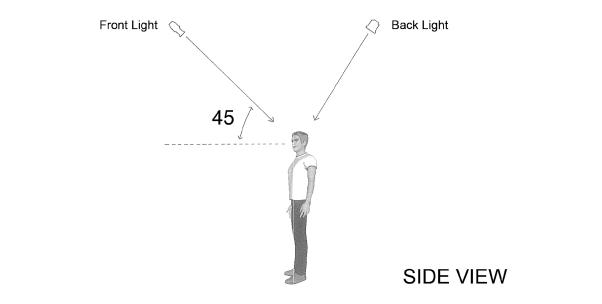
Texture added to the stage floor, scenic elements, or in the air (using a hazer) can add visual interest to the lighting design, and add environment as well as depth. Texture is created using patterns, or gobos. Ellipsoidal fixtures used to be the workhorses in this area, though they have become widely replaced with automated spot fixtures capable of carrying large quantities of gobos. Additionally, these fixtures can often animate gobos, add colour to gobos, resize gobo projections through zooming, and be programmed in movement cycles to add even more interest. Often this is the visual ‘eye candy’ we think of when attending a concert. These fixtures are often placed in backlight, toplight, sidelight, or positions on the stage deck itself.
Conclusion
There is no single ‘right’ way to lay out your lighting grid. Once your subject is
it comes to lighting positions and you may have to do some experimentation in terms of placement to model subjects as best as you can.
Creating mood
Another important lighting consideration for houses of worship is being able to create moods by using coloured lighting on the stage – and
visible, the rest is up to your budget, system capabilities, and your creative vision. Lighting design is a layering process – combining colour, texture, movement, and distribution in ways that create moods and atmospheres to support the event or story being told. We’ve only scratched the surface of how to begin approaching it –always be willing to experiment and try new methods.
KnowHOW
44 WORSHIP AVL March-April 2017
A side view of a front three-point lighting configuration
A top view of front lighting from a three-point configuration
Arrangement for 3-point lighting of each stage area
SYSTEM PRO | 2.4 GHz Digital High-Fidelity Wireless System


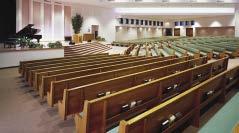





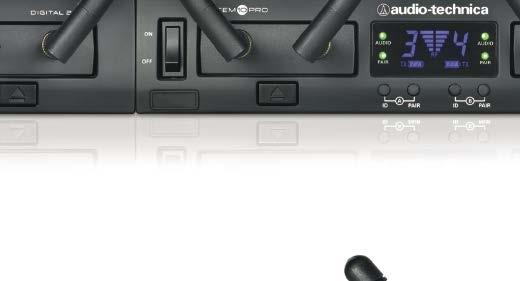
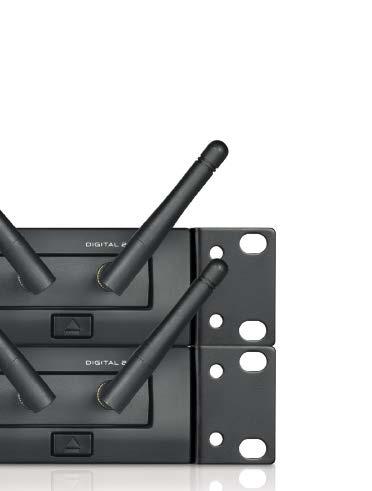




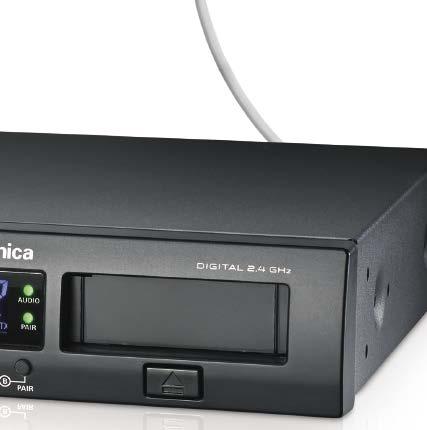
Finally, there’s a digital high-fidelity wireless system that simply works - anywhere, in any situation, for anyone. With ground-breaking remote-mountable receiver units and the ability to operate anywhere with no chance of broadcast TV interference, the System 10 PRO digital wireless system offers flexibility, dependability, and plug-and-play operation to fit any application. Rack efficient (four channels in one rack space), System 10 PRO offers simultaneous use of up to 10 channels with automatic frequency selection and coordination. It truly is the wireless for anywhere. sea.audio-technica.com
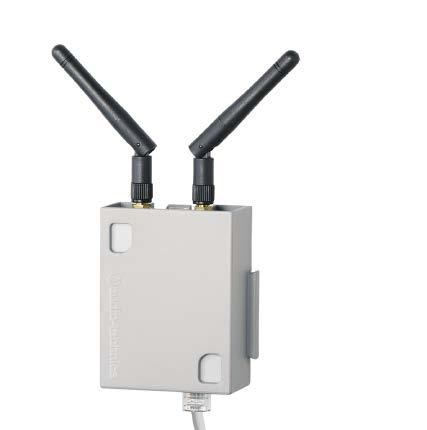
Featuring Remote-Mountable Receiver Units
WIRELESS Audio-Technica (S.E.A.) Pte Ltd 1 Ubi View, Focus One, #01-14, Singapore 408555 Tel: +65 6749 5686 Email: sales@audio-technica.com.sg sea.audio-technica.com
ANYWHERE
Lighting dimmers

Unlike low-level audio and video signals, conventional lighting dimming systems control electrical power. For this reason, Frank Wells reports, these systems deserve attention with respect

'THE BIG FACTOR IN MAKING SURE that dimmers have a long life,’ says Keith Rodgers, service manager for Eaton Lighting Systems, ‘is to make sure they are serviced at regular intervals. Keeping the external vents/ fans/heat sinks clear is the main thing.’
Peter Floyd, international sales manager for LSC Lighting Systems, expands on that theme: ‘Maintenance, for a long and healthy life of any product, is to keep it clean and free from dust and grime. As people in our industry know, oils from smoke machines combined with general dust makes for a nasty combination
by a thorough water rinse leaving no residue behind. Filters must be completely dry before they are returned to sercice.
Considering the potentially hazardous voltages and currents internal to lighting control dimmers, it is imperative that end-users do not attempt maintenance that exposes the user to such hazards. Internal maintenance should be left to trained personnel. Manufacturers, because of liability concerns, will give that same

when blocking up vents and fans. It is essential to ensure that any products in this environment are kept clean.’
The inviolable rule for end-user service is this: disable electrical power to the equipment being serviced. Do not simply turn gear off; flip the appropriate breakers or remove plugs from the wall. Confirm that the correct breakers have been switched off by ensuring that you can no longer turn gear on with its power switch – do not rely on assumptions. Safety first, always. Dust build-up leads to increased heat, which shortens the life expectancy of dimmer hardware. The essential basic service to be performed by HOW techs is to keep any ventilation air intakes and fans free of any dust and dirt buildup. Cleaning filters, fans and intake ports is best done with a vacuum cleaner fitted with a crevice tool, using a clean, dry paintbrush as necessary to gently loosen dust if there’s a buildup, whilst simultaneously vacuuming. Using compressed air is typically ill-advised as it can drive dirt and dust further into the nooks and crannies of circuits, and the propellants in some canned compressed air products can leave a residue which may cause future problems. A filter can be washed with water, or a mild detergent if followed
regards to internal inspection on the dimmers unless they are fully qualified.’

Experienced electrical and electronic technicians can safely clean dust away from internal components with a vacuum; again considering using a brush to loosen stubborn dirt while vacuuming. Dust should never just be stirred up to fall back again. Dirt that can’t easily be vacuumed away may indicate that there is some sort of moisture in the atmosphere, and
provides a flag that diligent attention by qualified technicians is warranted. Where removing modular components from their distribution rack makes circuits visible, the end-user can visually inspect modules for dust build-up and other potential problems that may prompt a call for service. There are physical and performance indicators of lighting components that need service, shares Mr Rodgers: ‘Warning signs would be: Tripping of either the supply or channel breaker/ fuses on the dimmer (also, signs of heat discolouration on these dimmer components); Smell of burning plastic from around the dimmer or distribution board. Sounds of electrical arcing from within the same as well; Lamps flickering/pulsing when set to a level; and lamps blowing constantly
often giving warning of impending failure by running louder – making whining or scraping noises.
Mr Floyd recommends that ‘both mains input and load cables and connectors are checked periodically, to ensure that cable insulation is in good condition, that all screws are done up tight and there is no visible evidence of arcing on surrounding metalwork.’
Protecting congregants from harm is certainly a goal of any congregation, and there may be legal requirements as well. Houses of worship are typically held to regulatory safety standards that apply to businesses. In some parts of the world, one class of regulation that applies to dimmers is called PAT, or Portable Appliance Testing. It is ‘worth hooking up with your local distributor or service centre who is qualified in PAT testing and setting up a regular maintenance schedule,’ says Mr Floyd, noting that such testing for safety is compulsory in many countries, and ‘can result in saving a lot more than money alone!’
MAINTENANCE
46 WORSHIP AVL March-April 2017
An Eaton Zero 88 Chilli Bypass series installation dimmer rack
The GenVI dimmer from LSC Lighting
Elation’s Uni Bar is a distributed dimmer, flown with lighting
ETC’s CEM+ 230VAC dimmer
BUYING GUIDE
and thanks to the proliferation of ever-higher resolutions in consumer technologies, poor image quality will have a massive effect on the overall perception of the quality of services.
Meyer Sound returns to studio monitors
REPRESENTING MEYER Sound’s first studio monitor since 1995, Amie was initially developed to meet the demands of Skywalker Sound. According to the California-based manufacturer, Amie is a studio monitor that provides ‘precision translation, exceptional power and a great price point, providing intricate
details of dialogue to dynamic music tracks to explosive action sequences’.
Meyer Sound states that its new monitor has been ‘designed as a linear sound system to reproduce each sonic element with accuracy and consistency’. As such, Amie extends the translation of the


EAW gives birth to Anna
‘First and foremost, choose a camera that provides the best video quality performance within the budget expectations. Essentially make sure to maximise your ROI to make your money go as far as possible,’ continues Mr Musgrave. ‘Second, make sure to choose an adequate focal range or optical zoom range that will do the job determined by the size of the space and the distance the camera is installed from the shot. Can you zoom all the way in to achieve your goals?’ he asks. ‘Thirdly, I would strongly advise you to demo cameras anywhere and everywhere possible for evaluation prior to purchase.’
While a lack of budget is a common complaint in houses of worship, Mr Musgrave sees this as a positive in this instance, explaining that one of the biggest purchasing mistakes he sees churches making is the assumption that price drives quality, without even evaluating lower priced alternatives. ‘At this point there are PTZ cameras for every budget, and while you want to get the best ROI, don’t let price drive the entire decision,’ he furthers. ‘Evaluate
EAW HAS expanded its Adaptive Systems family with the introduction of Anna. Boasting a more compact footprint and a lower weight than its bigger sister Anya, Anna has been designed for more mid-sized applications requiring precise coverage and being able to adapt coverage to any venue geometry in seconds. Each Anna module includes 14 customised transducers, including eight HF compression drivers that provide a continuous line of apertures on a horn that expands to fill the entire face of the enclosure. The MF
has
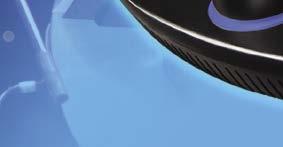
Connectivity
u 12 seamless inputs with 42 source plugs
u 4 program outputs + operator’s mosaic/aux.
across the screen which wouldn’t be suitable. How loud is the operating noise? Traditional congregations are likely quiet environments and any camera noise must not be audible over the background noise.
Acheron screen channel line to studio monitoring.
The new monitor features what the manufacturer describes as ‘an innovative waveguide design’ which reportedly offers ‘uniform coverage and precision imaging’.
Main benefits of the Ascender 16 - Ref. ASC1602:
As you can see there’s more than meets the eye when it comes to PTZ cameras, but the features themselves are reasonably self explanatory. A thorough understanding of what needs to be achieved will lead to the right solution. Research is key but
With its flat frequency and phase response and low distortion, Amie reportedly allows listening for long periods of time without strain or fatigue.

u Independant Preview/Mosaic/Monitoring output with Full live Preview of all sources
u Customization of monitoring layouts (Up to 8 templates stored)

www.meyersound.com

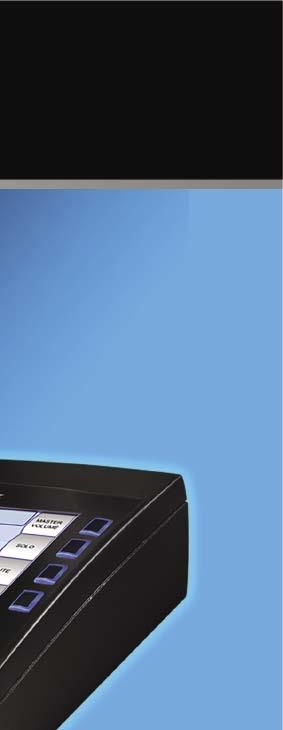

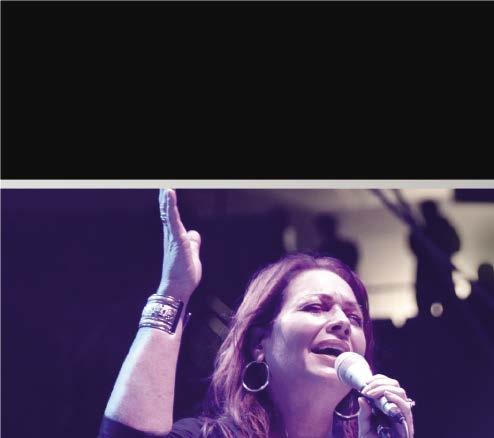
camera alternatives at every price point, the lower the price the more camera positions you can install. Just make sure to install cameras that will bring you the best video quality expectations.’
u 1 native background layer per output + 8 PIP mixers
standard network cable, aiding the installation process.
u Advanced Layer Management and outstanding visual effects



u Scalable system: 16 PIP mixers/24
This will largely depend on your existing setup and probably be either SDI, HDMI or Ethernet. If you don’t know what SDI is, then it definitely won’t be required. The lowest cost PTZ cameras have consumer HDMI output connections, with appeal to most houses of worship, though having cable length limitations. Models accepting Ethernet connections allow for the possibility to receive video and send power down a single existing
section is composed of four 5-inch cone transducers combined with radial phase plugs and concentric summation array technology to sum
Miscellaneous
coherently with the HF wavefront. Dual 10-inch LF cone transducers encompassing offset aperture loading extend horizontal pattern control into the lower octaves for the LF section. Each Anna module is powered by 14 integrated amplifier and processing channels providing independent power and control of each loudspeaker component. Resolution 2 software controls the processing of each acoustic cell individually.
In addition to being a stand-alone PA,




It’s easy to presume image quality is the be-all and end-all of video camera concerns. It is massively important, but it’s also extremely easy to evaluate. Features often overlooked are also often the cause of some big headaches down the line. For example, how smooth is the panning mechanism? Many PTZ cameras are designed for the security market and are low-cost, can be remote-controlled and remotely-viewed – some attributes that make them appealing for HOWs. If the mechanism isn’t smooth, camera movement could send the resulting image jumping
columns of Anna modules reportedly interlock side-by-side with columns of the Anya large format Adaptive Performance system, supplementing fill or horizontally expanding Anyabased systems for out-fill. Both Anya and Anna integrate with the Otto Adaptive subwoofer.
Marshall’s VS-PTC-200: The preferred controller for CV620 cameras

evaluation is paramount. Ask friendly congregations what solutions they use, or alternatively look at renting various units so you can ‘try before you buy’.
Anna modules are sold in groups of 24 or 12 enclosures with the inclusion of power and data distribution, dollies, covers, fly-bars and cabling. The entire power plant including amplification, DSP and communications is replaceable, independent of the module’s acoustic package.
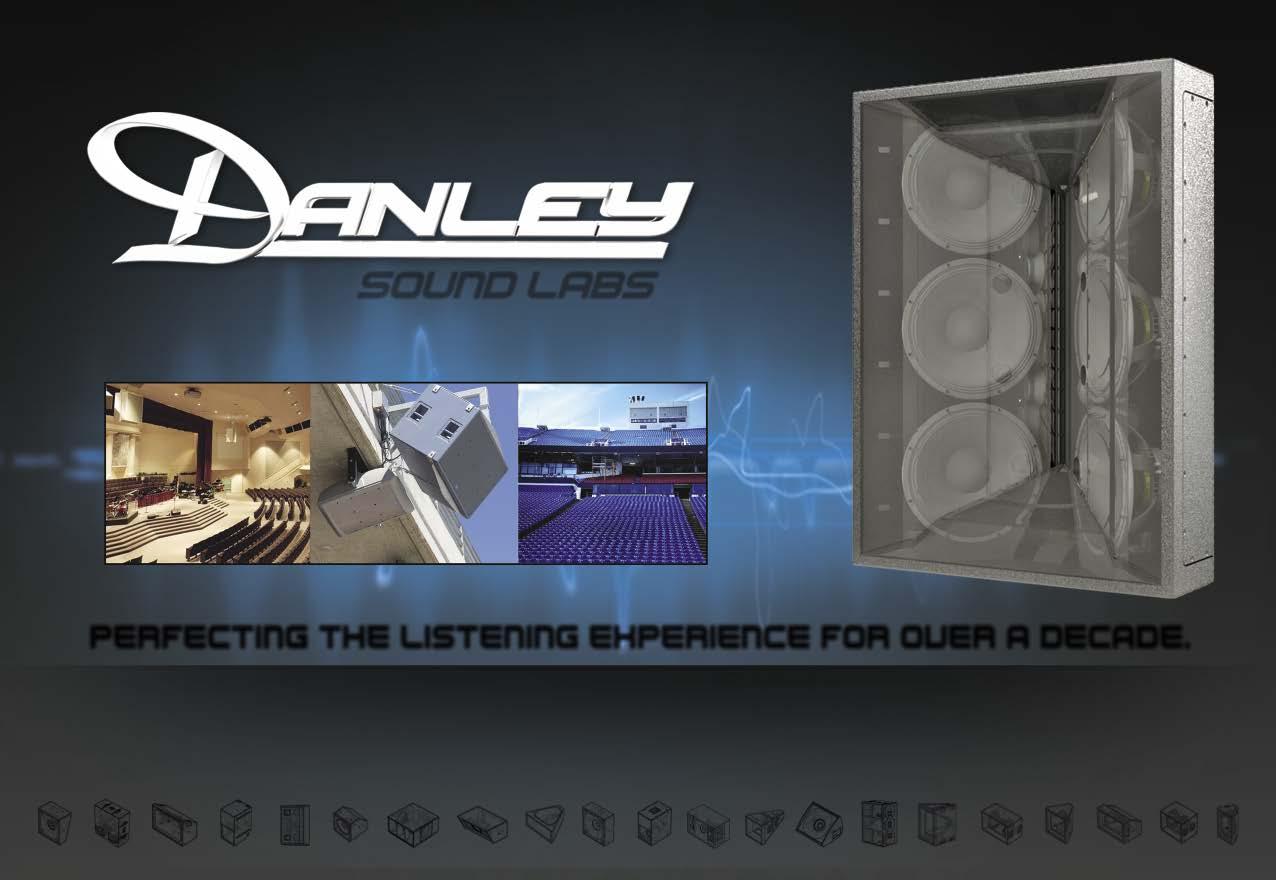
www.marshallelectronics.net
www.eaw.com
www.shotoku.tv
1/2PAGE HORIZONTAL
HORIZONTAL

Find out what other Houses of Worship are saying about myMix! Scan this code for more info visit www.mymixaudio.com/how for more info ©2015 MOVEK, Inc. personal monitor mixer Simply. Consistently. Empowering. Deliver the music: Dante, MADI, ADAT, analog, mic and line level... We speak it all! AVL_HoW Campaign-DeliverMusic.indd 2 3/27/15 6:11 AM P37 KHL.indd 1 4/13/15 1:39 PM 59 khl.indd 1 29/1/16 5:27 pm Find out what other Houses of Worship are saying about myMix! Scan this code for more info visit www.mymixaudio.com/how for more info ©2015 MOVEK, Inc. personal monitor mixer Simply. Consistently. Empowering. Deliver the music: Dante, MADI, ADAT, analog, mic and line level... We speak it all! AVL_HoW Campaign-DeliverMusic.indd 2 3/27/15 6:11 AM P37 KHL.indd 1 4/13/15 1:39 PM 59 khl.indd 1 29/1/16 5:27 pm MADI 394-Channel 192 kHz USB 3.0 Audio Interface Digitally controlled Mic Preamp with Multi-Format I/O · 1 x AES/EBU I/O via breakout cable · 1 x MIDI I/O via breakout cable · 3 x virtual MIDI I/O via MADI I/O · 1 x MADI I/O optical · MIDI I/O over DIN, USB and MADI · Remote controllable over MADI · Word Clock I/O with SteadyClock · USB compliant audio (24 channels) Corporate Headquarters Asia / Australia: RME Trading Ltd. o ce@rme-trading.hk
January-February 2017 WORSHIP AVL 59
broadcast
Ross
Video’s VR-one PTZ head mounted with traditional
camera
inputs/8+2 outputs u Very user-friendly and intuitive graphic user interface For a powerful worship experience: Introducing the new Ascender 16 8-mixer scalable Presentation Switcher Powerful multi-screen Seamless Switcher, offering state-of-the-art processing, Soft Edge and 4K capabilities to enhance your message To learn more, connect with us on: From Asia Pacific Analog Way Pte Ltd - Singapore Phone: +65 6292 5800 Email : sales@analogwayasia.com www.analogway.com Worship-AVL-March2015.indd 1 19/03/2015 11:31:26 Find out what other Houses of Worship are saying about myMix! Scan this code for more info visit www.mymixaudio.com/how for more info ©2015 MOVEK, Inc. personal monitor mixer Simply. Consistently. Empowering. Deliver the music: Dante, MADI, ADAT, analog, mic and line level... We speak it all! March-April 2016 WORSHIP AVL 59
PRODUCTS
Anna
joined EAW’s Adaptive Systems family
WAVL Pg58-59 PTZ Cameras.indd 59 22/11/2016 15:26 AVL_HoW Campaign-DeliverMusic.indd 2 3/27/15 6:11 AM P37 KHL.indd 1 4/13/15 1:39 PM 59 khl.indd 1 29/1/16 5:27 pm Pg58-73 Products v6.indd 59 11:56 59 khl.indd 1 2/2/16 12:01 am P59_Jan_Feb.indd 59
Amie from Meyer Sound
Bass Traps
LOW FREQUENCY SOUNDS ARE troublemakers, plain and simple. Excepting for exotic (for Houses of Worship) implementation of directional bass cabinet arrays and for some DSP controlled systems, when bass signals leave a woofer they disperse in all directions equally, including up! That’s a whole bunch of sound energy going where you don’t need it to go. Where there’s insufficient mass in the obstacles to inhibit low-frequency sound transmission, bass frequencies will travel through doors or walls or windows (think about what you hear from a jacked-up car sound system at a traffic light – the high frequencies are largely captured within the vehicle, but the low-end bleeds through, vibrating the entire vehicle). Where there is substantial mass at a room’s boundaries, such as concrete block walls, the pressure waves can reflect back into a room, out of phase with the direct signal from the speakers, adding to and subtracting from the direct sound, depending on frequency and timing of the interaction. Sound pressure levels, or loudness, can be likened to blowing up a balloon. At first, blowing into the balloon is easy, but when more air pressure is built up in the balloon, more external pressure is needed to make further pressure change inside the balloon. At some point, the balloon has all the internal pressure it can handle, and it bursts. Cranking up mix volume in a highly reflective auditorium or sanctuary makes for increasing levels of sonic interference. The room won’t burst when the sound pressure level is too high, but the frustration level of the congregation might spill out. You can’t overcome low-frequency buildup issues with more volume, rather, you’ll make things worse.
As sound levels decrease in relation to distance (remember the inverse square law: level/intensity is inversely proportional to the square of the distance from a source), distance can be your friend, except that your HOW has likely gone to great lengths to install a sound system that is designed to deliver relatively equal levels to all members of an audience. In an uncontrolled space, it’s highly probable that there will be hot spots
where room modes (a collection of resonances where direct sound is boosted by reflections) will be objectionable.
Technologies like steerable arrays and low-volume distributed sound aren’t magic. They will provide workarounds in some situations, but in many other situations, there won’t be an electronic solution sufficient to overcome low frequency issues. The best solution would be to have the sound from the loudspeakers reach worshippers once, directly from the loudspeaker, then disappear from audibility. That’s easy in an open field or an anechoic chamber, but not so easy in the real world. Bass trapping can provide a solution, or at least


some relief from the problems of bass build-up.
What is bass trapping?
As the name implies, a bass trap is a device designed to capture low-frequency sound energy. Bass traps won’t eliminate the room modes, but can help reduce reflected low-frequency sound, hopefully to the point where it’s practical to address remaining issues with EQ and loudspeaker directivity. All sound absorption materials and devices work by transforming acoustic energy through a mechanical or kinetic energy state to a heat state. At high frequencies, this is relatively easy with products like the familiar foam sound absorption products. The high frequencies bounce around and diffuse inside the foam cells, causing minute physical movement of the material, which is dissipated as a tiny amount of heat. Low frequency sound blasts through foam, and isn’t much attenuated by even several inches of denser materials like rock wool or compressed fiberglass. For these types of materials to be effective, they
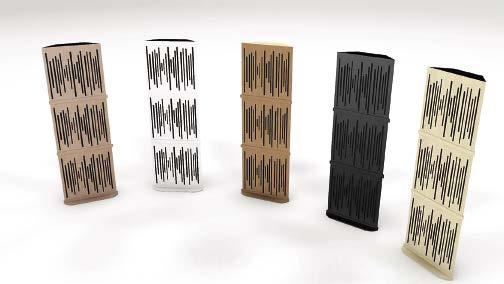

would need to be very dense and very thick. Giving up a few metres at the back of a room to install a deep bass trap is not going to be an attractive solution in HOWs, but that would be the only way that conventional materials can achieve the mass necessary to have any effectiveness with bass frequencies.
Fighting back with physics
Some applied physics can mitigate the need for bass traps to be massive. One such solution, which has, in a fashion, been in use for hundreds of years, is the Helmholtz resonator. As blowing air across an empty bottle can produce a tone, a Helmholtz resonator is an enclosed volume of space, resonant at a particular frequency, that can help contain a narrow frequency band of energy. A practical Helmholtz resonator can be designed as a rectangular box, with slots or holes as ports to define the resonant frequency or frequencies. A common type of modern bass trap is built into a rectangular housing, typically a few feet in height and several inches thick. These wall-
TECHNOLOGY
48 WORSHIP AVL March-April 2017
Muddy bass that overwhelms other sound is a problem plaguing many HOWs. Is there an acoustic solution? Frank Wells investigates
Primacoustic traps on a balcony front
Acoustic trap-absorbers from Primacoustic coloured to blend with the architecture at the front of a sanctuary
An exploded view of a Primacoustic FullTrap
Vicoustic Super Bass Extreme Helmholtz resonators
mountable traps have semi-rigid front panels of wood or sometimes metal. This panel acts as a diaphragm would in a microphone, moving when hit by a soundwave. Inside the housing is a rigid rectangle of compressed fiberglass (5cm to 10cm in depth being common). The sound hitting the front panel is converted to mechanical energy and an air gap and the insulation dampens the movement of the panel so the sound doesn’t re-propagate the energy as it returns to its resting position. The depth of the panel assembly, the thickness (mass and rigidity) of the front panel and the size of the diaphragmatic panel determine the effective frequency band of the trap.

Another common design replaces the rigid front panel with an aesthetic covering hiding a ‘limp mass’ sheet – a sheet of vinyl that’s been impregnated with particles to increase its density and weight. This sheet moves in sympathetic waves to the incoming






or hanging clouds, as well as wall traps on rear, front and side walls.










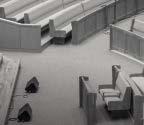

Aesthetics are going to play a role in the acceptability of a sonic solution that involves bass trap installation, particularly in a cathedral, mosque or temple. Such facilities are often filled with hard reflective surfaces that are also ornate and part of the visual appeal of the HOW. Bass traps can

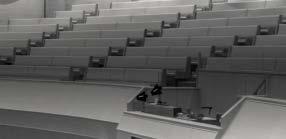
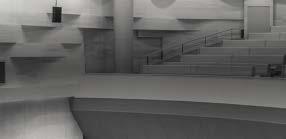
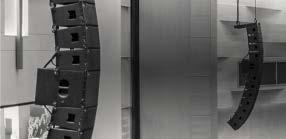
sound, but is not stiff enough to function as a transducer diaphragm to re-propagate those sounds. As with traps with a semi-rigid front panel, the trap uses an air cavity and rigid insulation internally. Its effective frequencies can extend up into the mids and highs, with its effective low-frequency bandwidth determined, again, by size and volume and material densities. There are additional traps made that vary or combine the approaches in common use.






Setting your traps

Remember also that we noted that bass signals are omnidirectional. To some degree, the reflection issues are likely to be coming from the front of the sanctuary, and from the side walls, and from the ceiling. A full solution might involve ceiling mounted traps






be cloth covered and disguised, but it won’t be acceptable for them to be too obviously visible, regardless of their acoustic value.



You can experiment with room modes by playing tones through the sound system and walking the sanctuary. Hot spots, or dips in level, at particular frequencies are indicative of problem frequencies. A real-time analyser, with its mic deployed at the hot spots, can give you an idea of what frequencies are the most problematic, which is where your worst room modes are centred. Bass traps can be a DIY project, but in the case of a HOW, where the solution will be a good number of highly visible devices, it’s worth bringing in an acoustician to design a solution, to scientifically determine how many traps are needed, and where. A HOW might also discuss their problems with reputable manufacturers; many manufacturers will be happy to assist in the development of a solution.


TECHNOLOGY March-April 2017 WORSHIP AVL 49
A stand mounted bass trap from Auralex, corner placed
Ceiling mounted Primacoustic traps
For every location the perfect solution. www.twaudio.com VERA SERIES B SERIES M SERIES TWAUDiO_Gocheok_Church_VBM_Worship_Island.indd 1 24.01.2017 13:46:55
Single Vicoustic Helmholtz resonators can be stacked in corner mounts
LED displays: trends and innovations
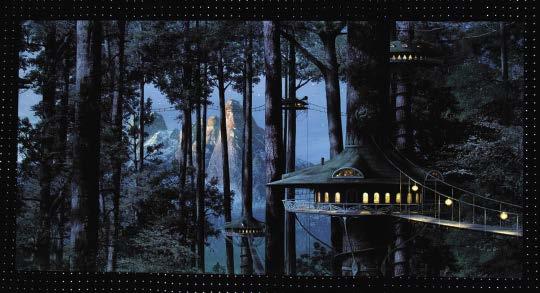
LED displays are a rapidly growing market, a growth fuelled by equally rapid advances in performance. Worship AVL visits manufacturer Pixelflex for insights into LED display technologies
VIDEO IS

AN INTEGRAL PART
of the worship experience across a broad swath of primarily Christian churches. In many HOWs, the range of applications has moved well beyond simple display of text or IMAG camera shots of the pastor. Creative exploration of the possibilities offered by LED display technologies is symbiotically driving further innovation. LED display manufacturer, Pixelflex, provided Worship AVL with insights into future directions to watch.
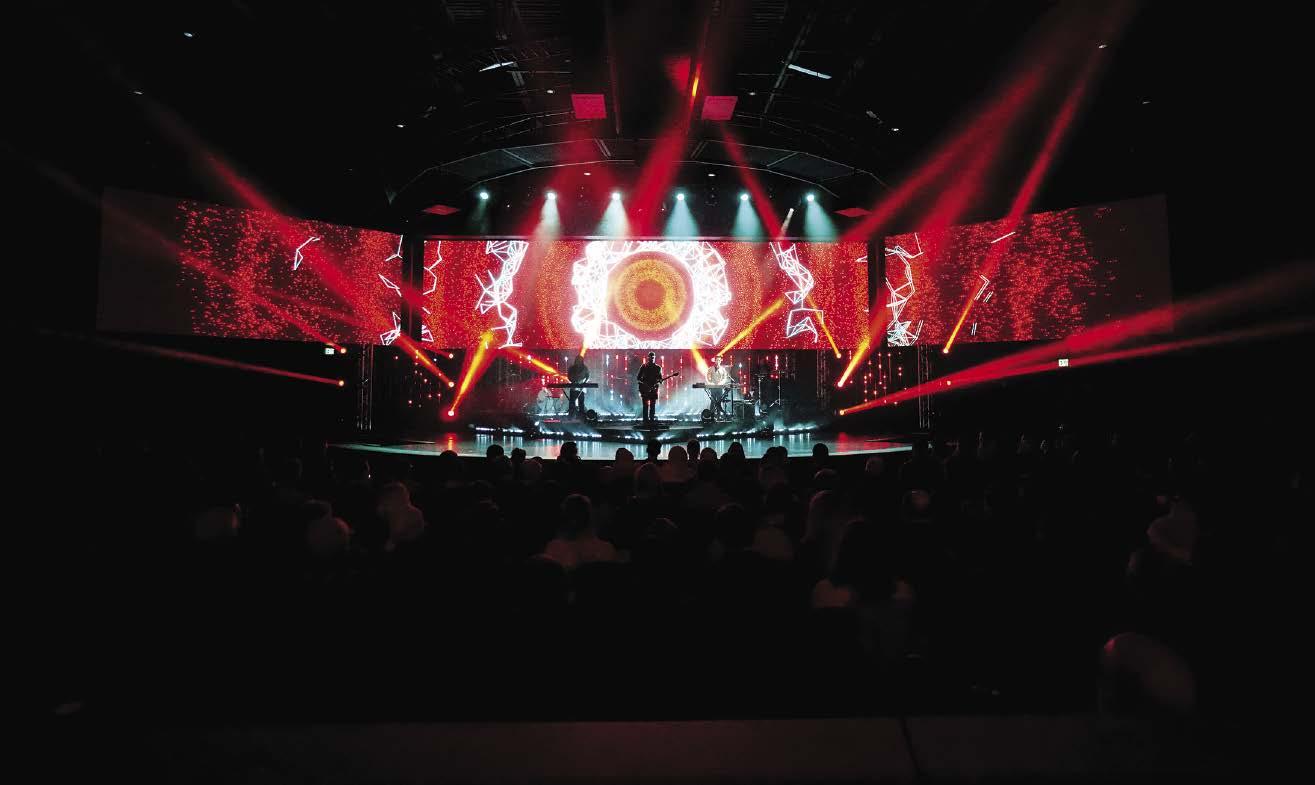
Resolution
When it comes to video displays for HOWs, ‘People have figured projection out; it’s been out quite a while,’ notes David Venus, director of marketing for Pixelflex. ‘Churches are very fixated on it still, for the most part because of the resolution. They can get 1920 x 1080 with almost any projector. The big disconnect, with that versus LED, is pixel pitch.’ Pixel pitch, he says, is one of the most misunderstood concepts in the church market.
Pixel pitch refers to the physical distance between the centres of the LED clusters that make up an LED display – each pixel is formed from three tightly spaced red, green and blue LEDs. The smaller the pixel pitch, the greater the display resolution. However, to determine an appropriate pixel pitch for a given application, viewing distance must be factored into the equation. While visiting Pixelflex’ headquarters, WAVL was shown a display type that
will be used high on the side of the JW Marriott hotel in Los Angeles. Because viewing distances there are so great, a 50mm pixel pitch will yield good performance. Close-up, the individual pixels are blatantly obvious, as in the image ‘A contrast in resolution,’ below, where the fine pitched display shown has a pixel pitch of 2.5mm, which was invisible at camera distance. The LED curtain it’s mounted on shows wide spaced pixels.
PixelFlex four years ago, he says the company’s only product was a curtain display with an 18mm to 100mm pixel pitch. Now, the company has 10 product lines and a wide range of available pixel pitches, running as tight as 1.2mm.
HOWs often spend more than necessary on LED display walls, Mr Venus opines, by specifying a smaller pixel pitch than is necessary for their application. People say they want small
Getting creative
‘We live in a world where people are so unbelievably creative; there’s a big opportunity to be creative with LED now,’ says Mr Venus. ‘It can be big walls, it can be broken-up walls. It can be a bunch of individual panels just placed wherever. Standalone displays that are often used for point-of-sale and temporary marketing applications can be incorporated into a worship environment. Content for such displays can be sourced from portable media devices, or from a media server. Changing feel and mood and other creative use of medium to lower resolution displays ‘is one of the biggest areas we feel like churches miss,’
For a rough calculation, the pixel pitch value can be factored up by 1,000 to get the minimum number of meters a viewer would need to be from the display for optimum viewing. For example a viewer would want to be at least 10m away from a display with a 10mm pixel pitch. ‘The biggest strides we’ve made as an industry is pixel pitch,’ says Mr Venus. By way of illustration, when he first started with
pixel pitches, he adds, but when an appropriate larger pixel pitch product is demonstrated, they are surprised by the quality. ‘When people see, they believe.’ While he’s reticent to fix absolute numbers without detailed information about planned use, when pushed, Mr Venus says that for commonly used side displays in a HOW, 4mm to 6mm is acceptable, on average.
50 WORSHIP AVL March-April 2017
A contrast in resolution; a fine resolution display mounted atop a wide pixel pitch display
David Venus, Pixelflex director of marketing, shows just how flexible an LED display can be
Introducing The KulaTM Range
4K/1080p/HD/SD/1ME/2ME






From $17K USD
value production switcher in the world
The new Kula class-leading switcher range delivers the multi-format flexibility you need, the panel options you require and the SAM quality you can rely on – all at a remarkable price point.
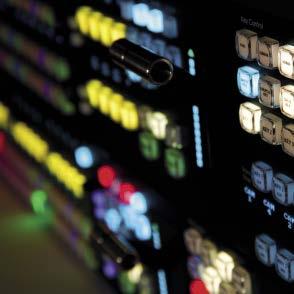


The Range
With a choice of three easy to operate control panels, the 2RU Kula Range offers 1M/E 4K, 1M/E HD/SD and 2M/E HD/SD models.
www.s-a-m.com/kula





Multi-format Flexibility

Built from the heritage of SAM’s award-winning KahunaTM switcher, Kula uses innovative FormatFusion3 TM technology to seamlessly mix any format, up to and including 4Keliminating the need for external conversion equipment.
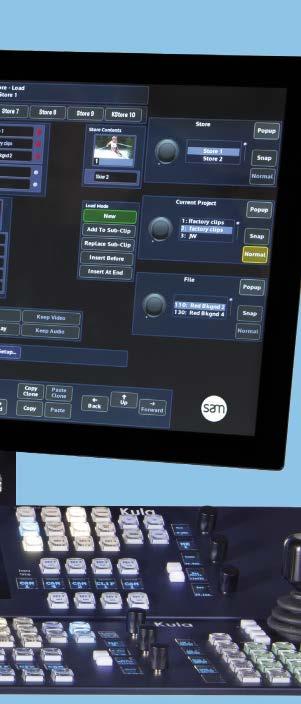
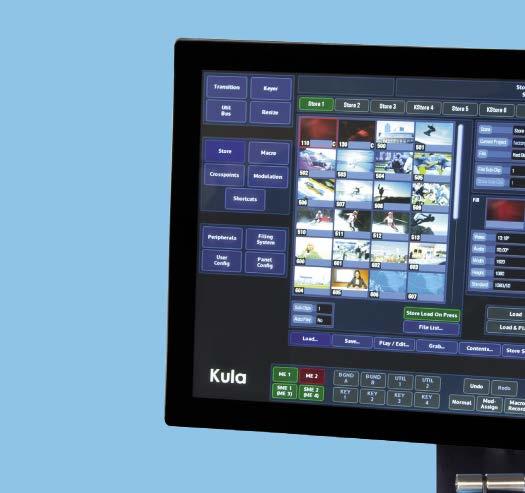

Creative Power
Kula offers up to 5 keyers per M/E, 24 channels of DVE and floating/ auxiliary keying resource. Up to 36 inputs and 18 outputs, plus a massive internal clip and still store ensures high impact productions every time.

Small Price, Massive Performance
Find out more at www.s-a-m.com/kula
Kula
he shares, adding that the last thing Pixelflex wants to do is limit creativity. HOW’s have options with modular LED displays that allow the creation of a variety of display shapes and aspect ratios. The First Baptist Church in Thomasville, in the American state of Georgia, has deployed LED curtains from Pixelflex that provide a dynamic look for its contemporary services (See page 14). For traditional services, the screens are retracted from view. Flexible displays can be wrapped around architectural elements. New display types can handle right angle transitions. ‘We offered a little larger tile,’ says Mr Venus. ‘Most products were in the traditional square; we did rectangles. Most of our product lines offer both.’ FlexLite panels, for example, come in 1,000mm x 500mm rectangles and in 500mm x 500mm squares. ‘It cuts down the set up time with the bigger tile. A lot of customers really like that.’ The 650mm x 432mm Pixelflex Ultra panel, on the other hand, was sized to allow easy creation of 16:9 and 4:3 aspect ratio displays. Basic mapping of LED walls is relatively straightforward, though still a pro A/V function, not a consumer level task, according to Mr Venus. ‘If you want to inlay a wall inside of it, you can create different maps or different layers,’ he says, alluding to some sophistication in the set-up. ‘It’s not super complicated, but there’s some things that we’re going to do to even make it simpler. Where you get the majority of your freedom is going to be that media server.’ The real creativity in this area is dependent on the capabilities of a HOW’s media server software. ’The deeper you get into these media servers, the more room, freedom and control you have.


‘Obviously, the more complicated your media server, the more technical knowledge your staff is going to have to have, so we try to take that into consideration in putting forth the
Serviceability
One of the selling features of LED displays as opposed to rear-projection systems has been that the behindscreen space required to develop a rear-projected image was unnecessary with an LED wall. That’s only sort-of true; space behind traditional LED display surfaces is needed to access the circuitry for service. ‘You have to be 30cm or so off the wall,’ explains Mr Venus, ‘or the wall has got to be cut out.’ Less space is indeed needed inside the worship space, if you can cut into a wall, but that may not
always be possible depending on what’s on the other side.
‘This is only true with non-front serviceable products. We offer fully front serviceable products which allow for flush mounting to a wall, where no rear access is needed whatsoever.’
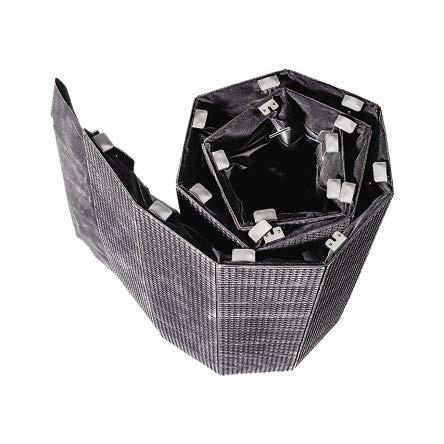
Companies are currently fighting back and forth on the introduction of fully front serviceable products,
they’re more expensive than non-front serviceable products.’ New products, exemplified by Pixelflex’ Trueflex modules, mount onto metal frames and surfaces magnetically. The individual panel sections can be popped out and unplugged, exposing the drive engine. ‘You can take the whole thing apart from the front without ever seeing or touching the back,’ says Mr Venus. Creative mounting solutions are another option, he continues. ‘If you can forgo front serviceability, we can help you figure out a way to have the display lift from a wall, for example. We can still access the back and you can save quite a bit of money.’ Products are also getting lighter and more manageable, allowing them to be set up by fewer people.

Calibration of LED panels is another area where the technology has made significant progress. With some displays, it’s still advisable to have spare modules that were made at the same time as the modules in regular use. When a module fails, replacing it with a module made at the same time and with LEDs that had been graded into the same bin lots, has been standard practice to achieve consistency of display characteristics across all modules. ‘As an industry,
three or four years ago, if you bought display elements manufactured a year or two apart from each other, it was a pain,’ says Mr Venus.
The practice has been, where adjustments were made to panels, it was largely done by eye and manual
‘You can get very close,’ Mr Venus proclaims. ‘The biggest issue you have is on white, where you are using all three colours within each LED.’ To address this, he says, you create ‘a golden standard, a golden tile’ that is used as the reference. There’s memory on module now, to save calibration info, which can be accessed by a control computer. Or, setup info can be pushed from the computer to the module. Data can be held in both places.
‘You might have to do a couple of finite things to adjust it from there, but it’s becoming much more of a perfect science,’ says Mr Venus of the current state-of-the-art in calibration. But with camera calibration and memory on, module calibration is becoming less of an issue. As all panels are not created equal, calibration is fundamentally matching the performance of all the modules in a display to the performance of the oldest panels’ output capabilities. ‘You are only going to be able to get as much out of a new tile as you do out of your oldest if you choose to pair them together,’ says Mr Venus.
Fortunately for HOWs, those older panels will operate well within desired performance for a decade or more, given the longevity of LED displays. Initial costs of LED displays are still premium, but that gap is closing rapidly. Performance, longevity, and now, the ability to radically enhance creativity, are making LED displays an ever-more attractive choice for HOW video display needs.
www.pixelflexled.com
TECHNOLOGY
52 WORSHIP AVL March-April 2017
Pixelflex’ FlexLite NXG 500mm x 500mm arrayable video panel, front, side and rear
This HD curtain product can be rolled up for storage
Seven retractable curtain HD screens are deployed on demand in the First Baptist Church, Thomasville sanctuary (for more information, see page 14)
The centerstage video wall at 12Stone Church in Snellville
KK102



• Reduced reverberation and increased intelligibility


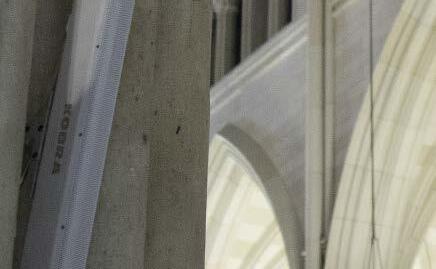


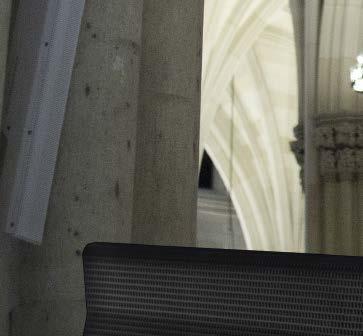

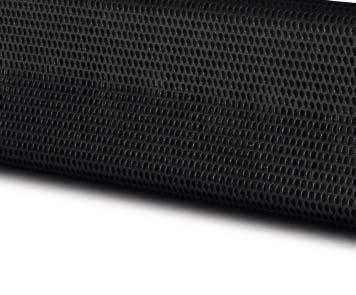



• Even coverage close to source and at a distance

• Thin column producing 130 dB (peak)
• Stainless steel in a polished finish
www.k-array.com
No reflection for better reflecting
LED vs conventional fixtures
will ultimately be using the system; their proficiency, longevity and ability to learn should form part of the decision-making process.
Conventional lights are undeniably simpler to use. They have fewer control functions making training easy, compared to multifunction LED fixtures. If you have a high turnover of volunteers or people who are less confident with the technology, then conventional lights will present a more attractive solution. However, this simplicity is also their limiting factor. If you have a team of highly trained, creative lighting volunteers who want to explore the functionality of the fixtures and enhance the worship experience with new ideas, they may find the limitation of conventional fixtures frustrating.
ONE OF THE MOST CHALLENGING questions faced by house of worship lighting technicians is what kind of technology should power your rig? The reason it is so challenging is because the answer will depend on a whole host of factors. To try and assist with the decision making process, this article will address some of these factors and highlight the benefits offered by both conventional and LED lights.
Cost
There’s no escaping it, cost of equipment will be the driving force behind any major purchase for a house of worship. The type of lighting system you buy will depend on the available budget and if you want to add expensive lights to your rig, you may well have to find cost savings elsewhere.
The main financial advantage of a conventional lighting system is the lower purchase price than an LEDbased solution. This often makes these fixtures a popular choice. However, it is not only the initial outlay that you need to consider. Factors such as lamp life and the cost of replacement bulbs as well
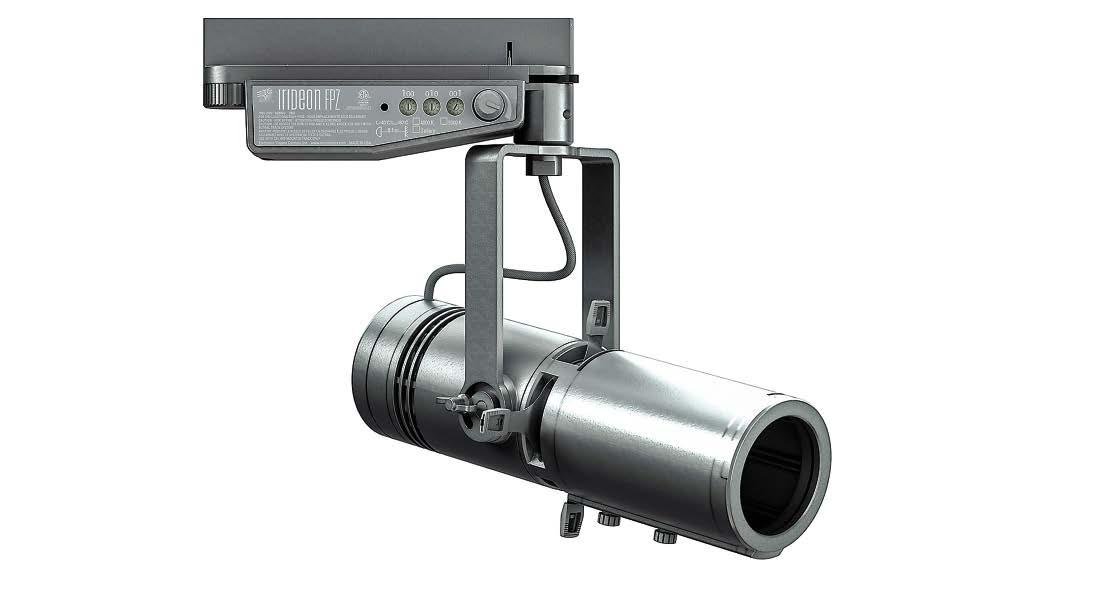
This means that while they may be more expensive initially, there is an argument that this cost will balance out over the usable lifespan of the lights.
Another cost-related factor will be the number of lights you require in your rig. Many modern moving-head LED lights are multi-functional, providing features such as spot and wash from the same fixture. Add in movement, changing colours and gobos and you can quickly start to see how the added expense of these products can be offset. The ability to change colour, function or the area lit from one lamp all within the same service means that you need fewer lights in your rig.

Control
A related factor to cost is the style of control you require. Conventional lights will traditionally be controlled via a dimmer rack. This is where a dimmer will be used to manage the intensity of the light emitted from the fixture by varying the voltage to the fixture. With modern LED lights, dimmers are not required as the control is typically built in within the unit.
Complexity
When making any decision about
It is not impossible to deliver bold and exciting looks with conventional lights. But it can take a large number of elements to produce the dynamic effects that many lighting designers desire.
It is important to stress that it is possible to invest in simple LED lights. Not all LED fixtures are multi-function with moving heads; a number of manufacturers build traditional style lights which use LEDs. If all you require is a singlefunction lighting solution you can still choose an LED option.
A final factor to consider is the way you actually use your lighting rig. If you are investing in new lights you need to think about how they will fit in with the current style of worship and how you plan for your services to evolve in the future.
For many houses of worship the lighting system will not need to be overly complex. If services are traditional then a few key lights in a fixed rig and maybe a few gels for colour washes are all that will usually be required. But if services are more dynamic and maybe incorporate theatrical performances, you would require a more complex rig to provide a greater number of options and flexibility to the lighting designer.
TECHNOLOGY
54 WORSHIP AVL March-April 2017
What do you need to consider when making the choice between conventional and LED lights for a HOW rig? James Ling finds out more
ETC’s Irideon FPZ is based on the Source Four Mini LED platform
Claypaky’s Scenius Profile features a 1,400W Osram lamp
The same is true for worship band performances. These often take on a more ‘rock ‘n’ roll’ feel and the musicians will want the lighting to change in line with the way they are playing.
Away from lighting looks, a further use-based consideration comes from how the lights look on camera. If services are filmed for broadcast, streaming or IMAG then you need to explore aspects such as flicker and the way the lights make people look.
is interior or exterior. The use of gobos can suggest whether the scene takes place under the shade of trees, in a city or underwater.
When approaching lighting for any special event or drama, be sure not to forget that the overarching function and purpose of stage lighting is to support and reinforce the story being told. Again, creating lighting for special events doesn’t have to be expensive. Even if you’re a small facility with a small number of lighting fixtures, there are some tools that you can use to help achieve some of your desired lighting looks.
Using colour
Coloured lighting can be achieved in a couple of different ways. If your

Often the easiest option is to compromise and have a rig that combines both traditional and LED fixtures. A combination approach can be particularly useful in HOWs that have different lighting needs for different worship services, yet have consistent needs in tandem, such as lighting a pulpit.
Whichever option or options you
facility is equipped with LED-wash fixtures or automated fixtures with colour wheels or CMY-colour mixing, then you already have some tools to easily add colour to your event. If you only have conventional lighting fixtures installed, colour can be achieved by purchasing colour filters, called gels. Gels are transparent pieces of coloured plastic that are added in front of the lights, forcing the light beam to pass through. Gels are inexpensive and can be purchased in almost any colour you can imagine.

that they can cause flicker in visual systems. This problem has largely been solved with modern lights, but it is still something that should be explored before any purchases
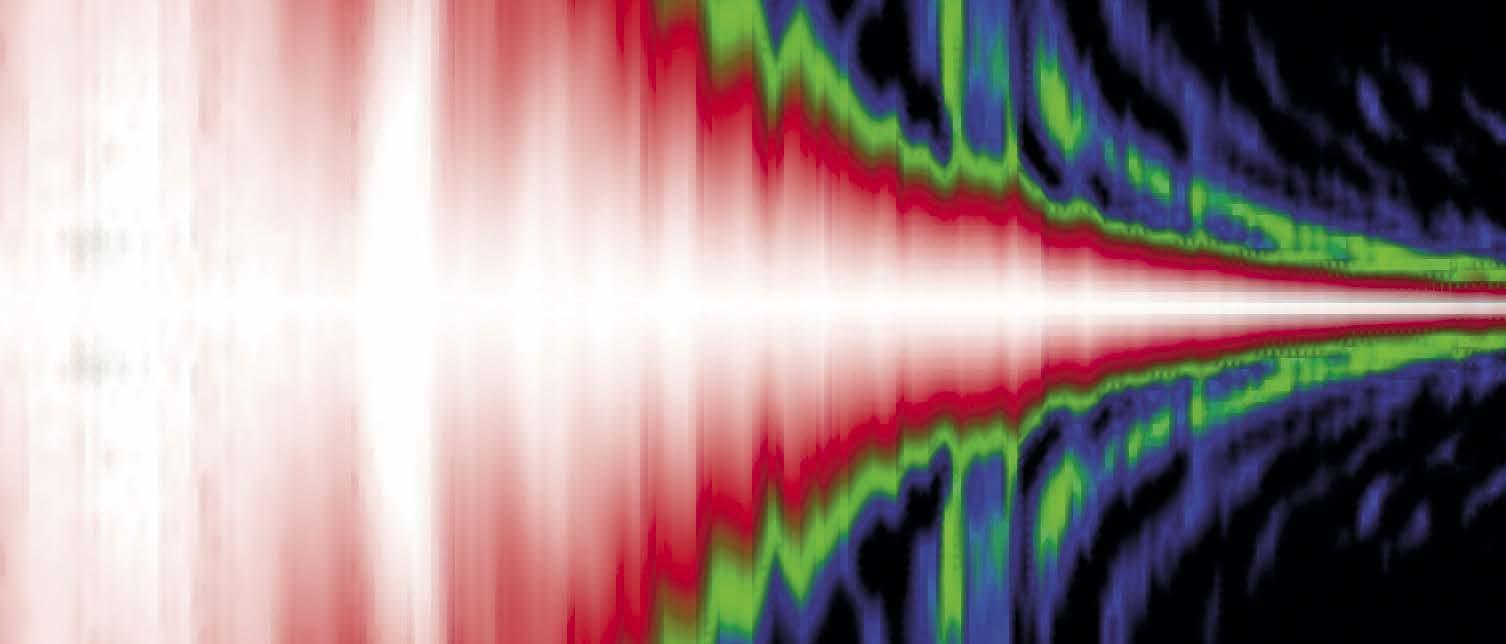
Conventional lights are often described as providing a more natural looking white light, while white light from LEDs can often appear harsh. In a broadcast setting, the more natural tones of a conventional light are generally thought to make people look better on camera and harsh whites can have a negative effect on appearance.
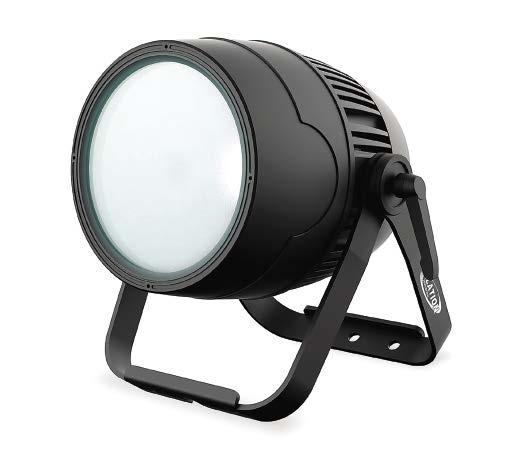
Then of course, there are considerations based around your


Colour can be used very effectively to assist and influence the audience’s understanding of and reaction to what is being presented. It can be used to indicate literal times of day or whether a scene is inside or outside. It can also be used metaphorically to reinforce or
place of worship. Systems that are flown from lighting bars in permanent houses of worship will be very different from those which need to be rigged every week in temporary settings. Weight is a factor for both, but ease of cabling and speed of setup are far more important in a temporary site.
Compromise
Armed with the knowledge of how each solution offers different advantages, the considerations you need to make will often depend on your existing infrastructure, whether you need a whole new rig or just a few additions and, of course, your HOW’s budget.

suggest moods that the actors are feeling, or to evoke particular feelings of the audience members. When using colour, you need to be mindful of the colour(s) used on the set or wardrobes of actors as well. For instance, shining red light on a red jacket will reinforce the red pigment of the jacket, while shining red light on a blue jacket will cause the jacket to appear darker or ‘blacker.’ If you have the opportunity, I would suggest reading up on basic colour theory for lighting applications or test it out before the event happens. In most cases, coloured lighting will come from over the stage as downlighting or back-lighting, depending on the layout of your facility’s lighting grid. If you have access to LED or automated fixtures, you will be able to wash your stage in multiple colours from a small
quantity of fixtures. If you don’t, you will need to plan on a set of fixtures (however many it takes to wash your stage) for each colour you are wanting to use as you will be unable to swap out gels during the event. Colour can also be used from the front and side lighting, though in most cases this is subtler than down- or back-lighting. For instance, a subtle cool and warm set of colours can be used in front lights to help reinforce different times of the day or locations where light can be described as being ‘cooler’ or ‘warmer.’
Using patterns
Often more understated, but just as effective as colour, is the addition of texture in the lighting plan. Texture is created through projecting images
This is what perfect sound looks like

I/O via breakout cable
· 1 x MIDI I/O via breakout cable

· 3 x virtual MIDI I/O via MADI I/O
The LR18 pro-ribbon line-array combines a superb directivity control and throw with a fully intuitive linear response with industry’s lowest distortion. The LR18 enables a 1:1 reproduction of the original sound source, due to Alcons’ multiple-patented pro-ribbon transducer technology.




· 1 x MADI I/O optical
· MIDI I/O over DIN, USB and MADI
· Remote controllable over MADI

· Word Clock I/O with SteadyClock
· USB compliant audio (24 channels)
But don’t take our word for it: The LR18 was recently tested in Germany. Read it on our website.

TECHNOLOGY March-April 2017 WORSHIP AVL 55 Elation’s Fuze Par Z60 IP proves that not all LED lights need to be multi-function moving heads
Robe’s Spiider is thus named for the web-like effect it creates Find out what other Houses of Worship are saying about myMix! Scan this code for more info visit www.mymixaudio.com/how for more info ©2015 MOVEK, Inc. personal monitor mixer Simply. Consistently. Empowering. Deliver the music: Dante, MADI, ADAT, analog, mic and line level... We speak it all! AVL_HoW Campaign-DeliverMusic.indd 2 3/27/15 6:11 AM P37 KHL.indd 1 4/13/15 1:39 PM 59 khl.indd 1 29/1/16 5:27 pm Find out what other Houses of Worship are saying about myMix! Scan this code for more info visit www.mymixaudio.com/how for more info ©2015 MOVEK, Inc. personal monitor mixer Simply. Consistently. Empowering. Deliver the music: Dante, MADI, ADAT, analog, mic and line level... We speak it all! AVL_HoW Campaign-DeliverMusic.indd 2 3/27/15 6:11 AM P37 KHL.indd 1 4/13/15 1:39 PM 59 khl.indd 1 29/1/16 5:27 pm · 8 x Mic/Line Preamps (4 x PAD, 4 x Hi-Z switchable) · 2 x Stereo Analog Outputs · 4 x AES/EBU I/O · 1 x ADAT I/O (2 x out S/MUX) · 196 Input / 198 Output channels · 2 x MADI I/O optical · 1 x MADI I/O coaxial · 2 x Analog Mic/Line Preamp Input (XLR/TRS) · 4 x Analog Output (Main XLR + Phones) · 1 x AES/EBU
Chauvet’s Ovation B-565FC LED batten fixture
Corporate Headquarters Asia / Australia: RME Trading Ltd. o ce@rme-trading.hk More Information: www.rme-audio.com KnowHOW
Selective focus deployed on actors
Abstract gobos on a stage floor
Man-made Sound
Gobos can be used to add patterns
www.alcons.audio
Projection screens
More factors can steer the purchase of a projection screen than one might imagine. James Cooke finds out why they’re more than just a blank canvas
A/V
ENGINEERS COULD BE FORGIVEN
for assuming that any plain, white surface makes for a decent enough projection screen, while putting all of their focus into which projectors to invest in. However, there may be more to consider than first comes to mind. After all, while the projector beams the image to the screen, it is the screen itself that displays the final picture. Screen size, material and rear or front projection are all factors to consider. The type of projector a house of worship owns or is about to purchase will also play a part in the selection process.
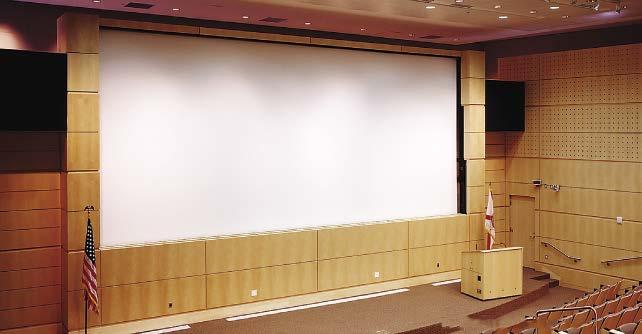

Screen size
‘You want to make sure the person furthest from the screen is able to read the content being projected,’ explains Melissa Rone, senior marketing manager for Da-Lite parent company Milestone AV Technologies. ‘There are several formulas out there for rightsizing a screen to a room. A simple starting point is to take the depth of the room, or the distance the furthest person will be in feet, and divide by two. The answer, when converted to inches, is a good starting point for the right diagonal size for the room.’
Thomas Cheong, director of sales,
APAC at Stewart Filmscreen explains that ‘there may be one large central screen, or several smaller screens distributed throughout the sanctuary. This will all be application specific, and may include a balcony or mezzanine that must be taken into consideration. InfoComm has developed a new ANSI standard (DISCAS V202.01:2016) on screen sizing that may be used to help determine the proper size. Another consideration is whether the congregation is seated wider across the sanctuary, or deeper into it. This will determine both size of screen, and if multiple screens might be appropriate.’
The content that a HOW plans to
display on-screen should also be considered. ‘If the HOW is displaying text, then the size of that text needs to be sufficiently large for the most distant viewer to be able to read without strain,’ says Kevin Nute, partner at Goo Systems. ‘Projector resolution also affects the choice of screen size. It dictates how large a pixel will be on a given screen size which in turn determines how far a viewer needs to be from the screen in order not to be able to see individual pixels.’
‘Also make sure those close to the screen don’t find the image size overwhelming,’ Tobias Stumpfl, CEO at AV Stumpfl, reminds us. ‘To achieve the right balance, it’s helpful
to arrange seats in the first row two screen heights below the projection screen. In most cases, the screen should be the standard viewing height of 48-inches off the floor – a distance called the Sill Height.’
Material
Can the screen’s material make much of a difference to image quality and definition? This is certainly an important question to ask for users of Goo Systems’ Screen Goo products of ‘video screen coatings in liquid form’ that can be painted onto any smooth surface, transforming it into a projection screen.
‘While a projection screen doesn’t have a resolution per se, many screens are limited in the projector resolution that they can correctly reproduce due to a phenomenon called moiré, a coloured interference pattern that occurs when the pixel structure of a projected image is layered onto a projection surface that has a regular structure,’ says Mr Nute.
‘We can objectively assess some parameters of screen material performance and use these measurements as a partial basis of comparison,’ he continues. ‘These include colour accuracy, potential
BUYING GUIDE
56 WORSHIP AVL March-April 2017
Screen Goo in use at a church
A Stewart Filmscreen projection screen as part of a fixed installation
resolution, reflectivity and usable viewing angle. The latter two can be combined and expressed as a measurement called gain. While no screen can reflect more light than the projector produces, what can vary are the angles within which the projector light is reflected. The higher the gain the narrower the usable viewing cone.’
It seems choosing the right material is as important as the resolution of the accompanying projector. ‘It is so important to ensure you are matching the technology of the surface to the technology of the projector,’ declares Ms Rone. ‘A surface can either preserve the resolution or degrade the resolution and ultimately the image quality.’
‘Both have merit,’ argues Mr Cheong. ‘Front projection requires less dedicated space, but is more susceptible to ambient light. Rear projection isolates the projector’s light from ambient, which can produce a higher contrast, more saturated image, but can be higher in cost to deploy and may require more space.’
‘Front projection installations are simpler, require less space and fewer projector adjustments,’ adds Mr Nute. ‘Rear projection systems require more space and a more complex setup.’
compatible will ensure you don’t have any issues with your image quality.’
Mr Nute also argues that some projectors work better with certain screens and materials. ‘As soon as screen gain gets to unity (1.0) and above, the image starts to get brighter in the centre and dimmer towards the outsides. This effect becomes more pronounced the further the projector is offset vertically from the centre of the screen. The longer the throw distance,
‘Screen materials are designed for specific applications,’ furthers Mr Cheong. ‘A matte white screen will diffuse light evenly in all directions and not affect the nature of the projected image. However, they are highly susceptible to ambient light, requiring darker environments and careful design. Grey screens are designed to enhance contrast with a small degree of ambient light rejection. Gain screens (technically called angular reflective screens) focus and concentrate the light from a projector, reflected towards the audience.’
Front versus rear projection
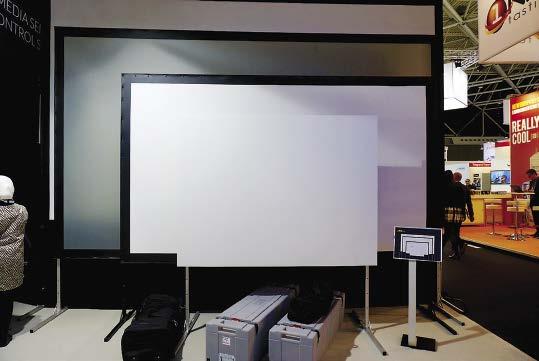
Mr Nute defines both rear and front projection: ‘Front Projection: the projector and the audience are on the same side of the screen. Rear Projection: the screen is between the audience and the projector.’ Both have their merits and hindrances, but what does a HOW need to take into account?
‘For optic quality, I would recommend an HD rear projection surface or coating if it is with a rigid screen,’ says Ms Rone. ‘With rear projection, you avoid shadows in front of the screen, and you can obtain a brighter image. With rear projection, the image and light are passing through the screen directly into the viewer’s eyes. With front projection, you lose brightness because you are relying on the reflection off the screen.’
What screen for which projector?
Take a look at the projector in use at the HOW in question and consider what type of projection screen will best suit it. Or, if the purchase of a new projection screen is part of a larger A/V installation or upgrade that includes the addition of a new projector, consider the combination that will work best.
Not all agree that the pairing makes too much of a difference to the end result. When asked whether certain screens match up better with particular projector types, Mr Cheong answers: ‘In most cases, no. However, short throw and ultra-short throw projectors can shine light onto a screen in a more extreme angle than the screen may be designed for. This can require an engineered material to handle the angle of reflection properly, and is especially important for ambient light rejecting screens.’
Ms Rone answers differently: ‘Yes.
It is always good to use a surface technology that matches your projection technology,’ she replies. ‘For example, if you are projecting in HD or 4K, it is important to use a surface that will preserve the resolution. A standard resolution surface will degrade the image quality of an HD projector. Additionally, not all surfaces are compatible with laser projection. Choosing a surface that is
the higher the screen gain that can be used. An extreme example of what not to do would be using a high gain screen with an ultra short throw projector.’
Aesthetics
The visual appearance of anything installed inside a HOW is almost always going to be a key consideration. This is especially true of something as large as a projection screen. Mr Stumpfl recommends that ‘the size and available space of the venue’ be taken into account first of all.
‘Most projection screens look exactly like what they are: a white vinyl surface with a black border,’ says Mr Nute, making a case for Goo Systems. ‘They can also be motorised and hidden in ceilings or casework but once the screen drops down, we’re back to a piece of white plastic with a black border. A Goo Screen can cover

an entire wall, essentially creating a screen that “disappears” when not in use.’
Another alternative could be tripod projection screens that can be setup as standalone units and put away when not needed, although this may require readjustment of the projector each time it’s used. Aesthetics could also sway the decision of whether to go with a rear or front projection setup. Is there somewhere unobtrusive inside the sanctuary to install a projector for front projection or would rear projection be preferable to hide the projector from view? Perhaps there is no space for rear projection at the front of the sanctuary? These are all things that should be taken into account.
Conclusion
‘Make sure a projection screen is large enough and matches the technology of the projector,’ Ms Rone reiterates. ‘Often, projectors are updated more frequently than the screen, so a lot of HOWs will make sure they buy a
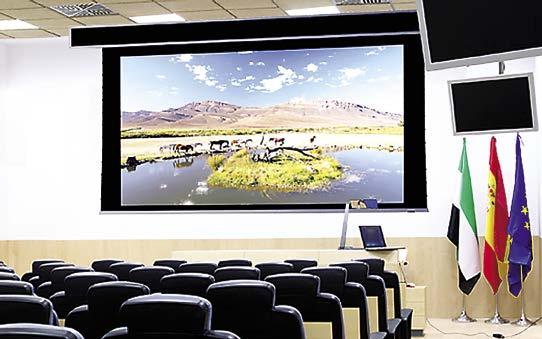
technology that allows them to upgrade their projector in the future without having to update the screen.’
‘HOWs first need to decide what they want to use their system for,’ states Mr Nute. ‘The requirements for a projection system used to display a few lines of hymn lyrics in black text on a white background are quite different than for displaying a closed circuit broadcast of a highly produced worship service. These requirements differ specifically with respect to projector resolution and the in-room contrast ratio of a system.’
Mr Cheong summarises: ‘As long as you consider screen size, ambient light and a screen material for your projector, you should be fine.’
www.avstumpfl.com
www.da-lite.com
www.goosystemsglobal.com
www.stewartfilmscreen.com
BUYING GUIDE
March-April 2017 WORSHIP AVL 57
A large electric, motorised screen from Stewart Filmscreen
A range of AV Stumpfl screens on display
Da-Lite’s Wireline Advantage
Best of both for beyerdynamic
Best of both for beyerdynamic
beyerdynamic merges the benefits of its TG 100 and TG 1000 wireless systems with its new TG 500
beyerdynamic merges the benefits of its TG 100 and TG 1000 wireless systems with its new TG 500
UNVEILED AS the successor to beyerdynamic’s Opus 600 series, the German microphone and headphone manufacturer has introduced a new mid-range model to its Tour Guide series, the TG 500.
UNVEILED AS the successor to beyerdynamic’s Opus 600 series, the German microphone and headphone manufacturer has introduced a new mid-range model to its Tour Guide series, the TG 500.
The model is intended to bridge the gap between its entry-level TG 100 and flagship TG 1000 wireless systems, while also providing the best value for money. Crucially, the TG 500 can be used licence-free almost all over the world depending on the frequency band selected. ‘We are now the second or third manufacturer covering this frequency range,’ states Michael Altemark, product manager wireless microphones. ‘That’s very cool and was one of the main ideas of the system, to cover licence-free area all over the world. Therefore we also have special frequency versions for Korea, Japan and Australia, to cover the licence-free areas there’.
The model is intended to bridge the gap between its entry-level TG 100 and flagship TG 1000 wireless systems, while also providing the best value for money. Crucially, the TG 500 can be used licence-free almost all over the world depending on the frequency band selected. ‘We are now the second or third manufacturer covering this frequency range,’ states Michael Altemark, product manager wireless microphones. ‘That’s very cool and was one of the main ideas of the system, to cover licence-free area all over the world. Therefore we also have special frequency versions for Korea, Japan and Australia, to cover the licence-free areas there’.
TG 500 comes with two kinds of handheld transmitters, a dynamic microphone capsule or electret condenser version using the same capsules that are used in the wired models. Following customer feedback, the design and operation of the device is very similar to that of the TG 1000, however charging contacts have been included on the handhelds to aid with installed use. The handhelds also feature the same illuminated button as on the TG 100 to tell directly
TG 500 comes with two kinds of handheld transmitters, a dynamic microphone capsule or electret condenser version using the same capsules that are used in the wired models. Following customer feedback, the design and operation of the device is very similar to that of the TG 1000, however charging contacts have been included on the handhelds to aid with installed use. The handhelds also feature the same illuminated button as on the TG 100 to tell directly
whether the battery is empty or not and it can use either rechargeable or normal alkaline batteries for power. The display on the handheld shows the battery status as well as the frequency being used. Compared to the TG 1000 handhelds, the TG 500 models offer a mute button at the thumb position. The button is programmable and can be turned off if wanted. ‘We’ve tried to make control very intuitive, and almost everything can be controlled via three knobs – transmitter name, channel, frequency in 25kHz steps, perform a quick scan to find a free channel, adjust the output gain, selectable RF power (10mW and 50mW),’ adds Mr Baier.
whether the battery is empty or not and it can use either rechargeable or normal alkaline batteries for power. The display on the handheld shows the battery status as well as the frequency being used. Compared to the TG 1000 handhelds, the TG 500 models offer a mute button at the thumb position. The button is programmable and can be turned off if wanted. ‘We’ve tried to make control very intuitive, and almost everything can be controlled via three knobs – transmitter name, channel, frequency in 25kHz steps, perform a quick scan to find a free channel, adjust the output gain, selectable RF power (10mW and 50mW),’ adds Mr Baier.
The TG 500 receiver is a durable metal half-width enclosure housing balanced XLR and TRS output jacks, as well as an integrated power supply and antenna splitter. The dual receiver supplies the antenna with phantom power required for using remote antennas, while the diversity antenna operation aims to guarantee optimum reception for all the receivers. The two audio channels of the dual receiver can be relayed via a common output if desired, without the need for an external mixing console.
The TG 500 receiver is a durable metal half-width enclosure housing balanced XLR and TRS output jacks, as well as an integrated power supply and antenna splitter. The dual receiver supplies the antenna with phantom power required for using remote antennas, while the diversity antenna operation aims to guarantee optimum reception for all the receivers. The two audio channels of the dual receiver can be relayed via a common output if desired, without the need for an external mixing console.
Using one receiver per transmitter, the system is available in five sets, each of which contains an individual receiver and two removable antennas.
The TG 550 Vocal Set is supplied with the dynamic
Using one receiver per transmitter, the system is available in five sets, each of which contains an individual receiver and two removable antennas. The TG 550 Vocal Set is supplied with the dynamic

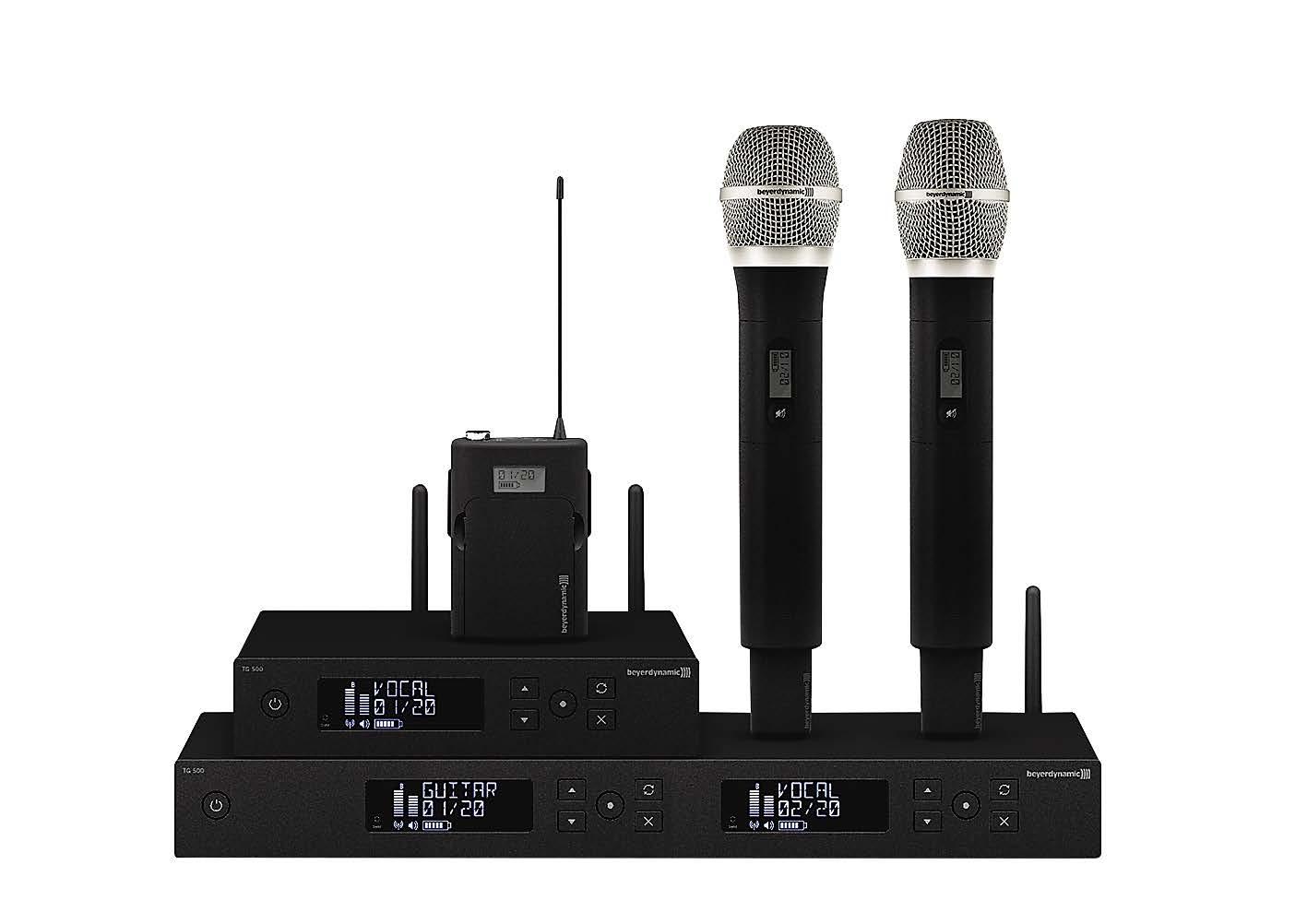
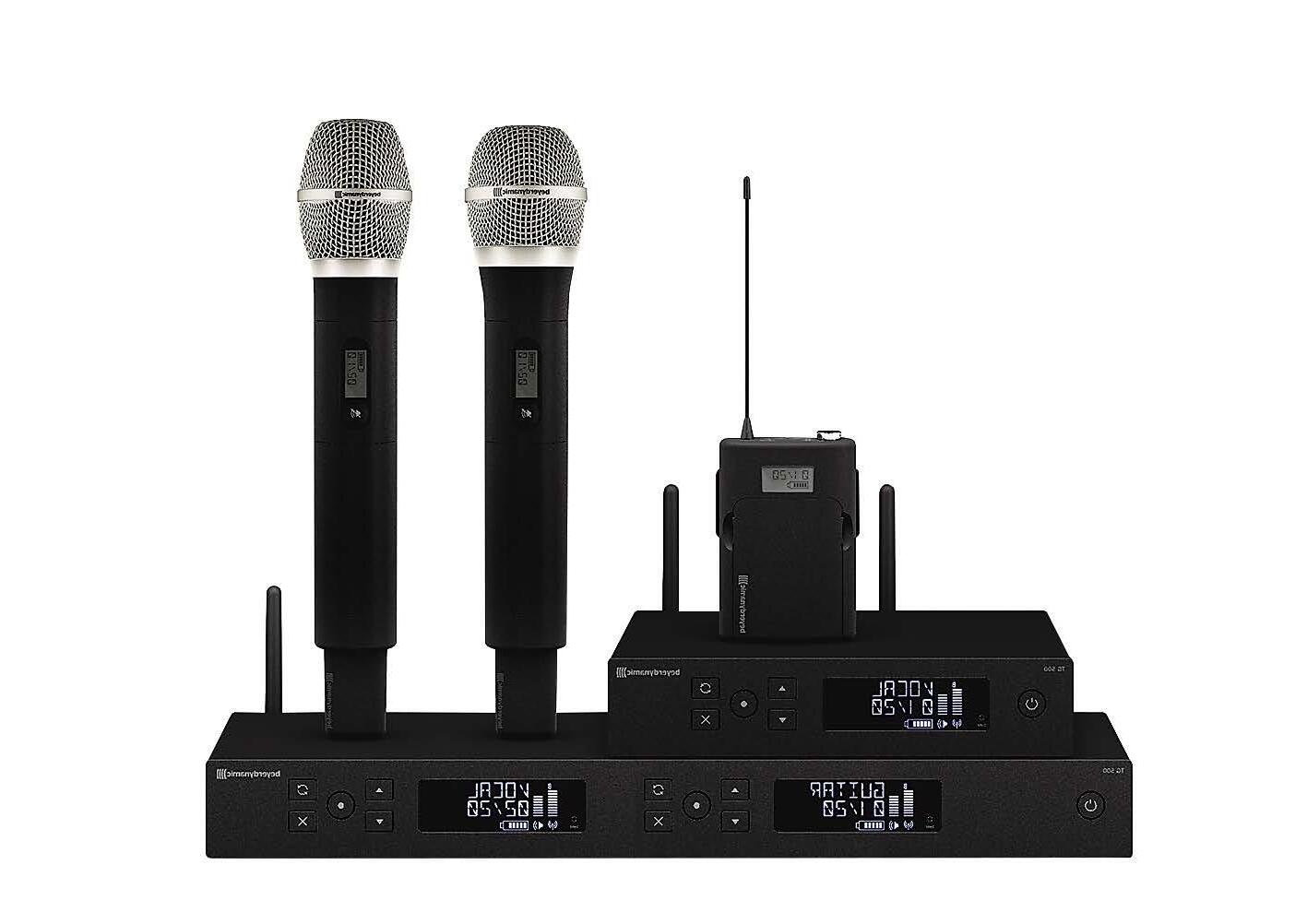

CONTENTS
CONTENTS
TG 500H-D handheld transmitter with a TG V50 capsule and is intended for singing, whereas the TG 556 Vocal Set comes with a TG 500H-C handheld transmitter with a TG V56 capsule, better suited to speech. There are matching microphone clamps for both handheld transmitters. The TG L58 clip-on microphone from the TG 558 Presenter Set can be worn in an inconspicuous position during presentations, while the TG 534 Headworn Set with a TG H34 neckworn microphone is better suited to theatre productions. Electric and bass guitars can be miked using the WA-CGI instrument cable (6.35mm mono jack), which is part of the TG 510
TG 500H-D handheld transmitter with a TG V50 capsule and is intended for singing, whereas the TG 556 Vocal Set comes with a TG 500H-C handheld transmitter with a TG V56 capsule, better suited to speech. There are matching microphone clamps for both handheld transmitters. The TG L58 clip-on microphone from the TG 558 Presenter Set can be worn in an inconspicuous position during presentations, while the TG 534 Headworn Set with a TG H34 neckworn microphone is better suited to theatre productions. Electric and bass guitars can be miked using the WA-CGI instrument cable (6.35mm mono jack), which is part of the TG 510 Instrument
www.beyerdynamic.com
Set.
ROOM V12.5 UPDATE 70 HEATH QU MIC PRESETS 64 TPD 2.1 AMP 60 ASCENDER 32 69 BEYERDYNAMIC TG 500 58 62 CHAUVET PROFESSIONAL ROUGE R3 WASH 72 CHRISTIE PANDORAS BOX 6.0 68 D&B AUDIOTECHNIK 24S/24S-D/21S-SUB 59 DPA MICROPHONES MICROPHONE BASE 64 60 ELATION PROFESSIONAL DW PENDANT 73 FOCUSRITE REDNET CONTROL 2.0 66 EDIUS 8.3 70 KLANG TECHNOLOGIES KLANG:FABRIK 68 SOFTWARE VERSION 5.8 66 MARTIN PROFESSIONAL M-PLAY/M1 HD 72 MATROX ENSEMBLE INTEGRATION 70 NEWTEK/PANASONIC AUTOLINK 68 NEXT-PROAUDIO HFA106P 59 PIXELFLEX FLEXLITE NXG ENHANCEMENTS 69 PLIANT TECHNOLOGIES SMARTBOOM LTE 64 QSC TOUCHMIX-30 PRO 62 RENKUS-HEINZ DANTE-ENABLED ICONYX 59 SENNHEISER DIGITAL 6000 SERIES 63 SHURE ULX-D FIRMWARE 2.0.19 64 SOMMER CABLE SC AQUAMARINEX 66 SONY PXW-FS7 II CAMCORDER 69 TASCAM DR-10L 62 TURBOSOUND FLASHLINE – TFX122M-AN 59 ULTIMATE EAR UE 18+ PRO 67 VITEC EZ TV 8.0 70 YAMAHA TF-RACK/AES67 SUPPORT 60 NEWPRODUCTS A/V • LIGHTING • LIVE SOUND • INSTALLATION • BROADCAST • RECORDING
58 WORSHIP AVL March-April 2017
Instrument Set. www.beyerdynamic.com
ROOM V12.5 UPDATE 70 HEATH QU MIC PRESETS 64 TPD 2.1 AMP 60 ASCENDER 32 69 BEYERDYNAMIC TG 500 58 62 CHAUVET PROFESSIONAL ROUGE R3 WASH 72 CHRISTIE PANDORAS BOX 6.0 68 D&B AUDIOTECHNIK 24S/24S-D/21S-SUB 59 DPA MICROPHONES MICROPHONE BASE 64 60 ELATION PROFESSIONAL DW PENDANT 73 FOCUSRITE REDNET CONTROL 2.0 66 EDIUS 8.3 70 KLANG TECHNOLOGIES KLANG:FABRIK 68 SOFTWARE VERSION 5.8 66 MARTIN PROFESSIONAL M-PLAY/M1 HD 72 MATROX ENSEMBLE INTEGRATION 70 NEWTEK/PANASONIC AUTOLINK 68 NEXT-PROAUDIO HFA106P 59 PIXELFLEX FLEXLITE NXG ENHANCEMENTS 69 PLIANT TECHNOLOGIES SMARTBOOM LTE 64 QSC TOUCHMIX-30 PRO 62 RENKUS-HEINZ DANTE-ENABLED ICONYX 59 SENNHEISER DIGITAL 6000 SERIES 63 SHURE ULX-D FIRMWARE 2.0.19 64 SOMMER CABLE SC AQUAMARINEX 66 SONY PXW-FS7 II CAMCORDER 69 TASCAM DR-10L 62 TURBOSOUND FLASHLINE – TFX122M-AN 59 ULTIMATE EAR UE 18+ PRO 67 VITEC EZ TV 8.0 70 YAMAHA TF-RACK/AES67 SUPPORT 60 NEWPRODUCTS A/V • LIGHTING • LIVE SOUND • INSTALLATION • BROADCAST • RECORDING
58 WORSHIP AVL March-April 2017
The beyerdynamic TG 500 wireless system
xS-Series seek new permanent home
FOLLOWING ON from the installationspecific 10D and 30D amplifiers released by d&b audiotechnik last year, the German manufacturer has now unveiled new point-source speaker models intended for permanent installation in environments such as nightclubs, live performance venues, houses of worship, and sports venues. Named the 24S and 24S-D, the two new models join d&b’s xS-Series, which also features redesigned front grilles to make the series less obtrusive. Accompanying the point-source models is the single 21-inch 21S-SUB
subwoofer.
Differing in their horizontal dispersion characteristics, with 75-degrees x 45-degrees (h x v) for the 24S and 110-degrees x 45-degrees for the 24S-D, both models house dual 12-inch LF drivers in a dipolar arrangement together with a single hornloaded 1.4-inch exit compression driver, which is rotatable. According to the manufacturer, ‘by separating the LF drivers they achieve constant directivity control in the same plane as the dipole down to approximately 500Hz’. The result of
Both models offer a full-range frequency response from 55Hz to 18kHz, but for those catering to
Ferrite additions to Flashline Monitors
TURBOSOUND HAS upped the number of available Flashline Monitors to six with a pair of ferrite driver models.
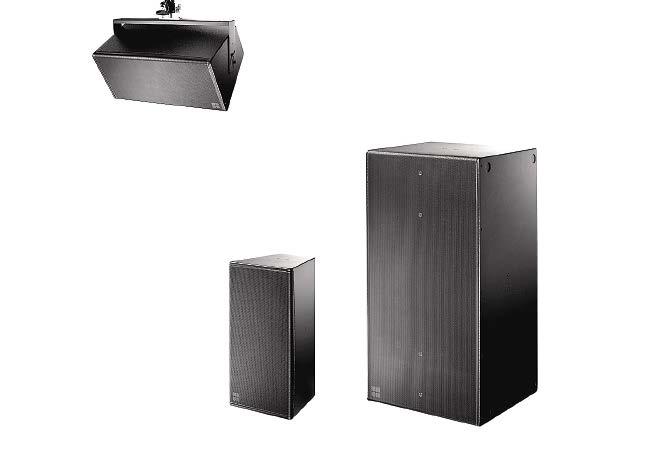
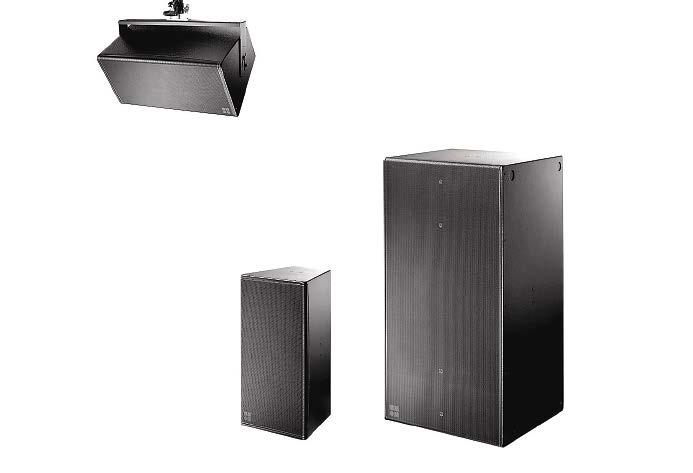
The TFX122M-AN and TFX152M-AN join the existing four powered and switchable passive/bi-amp 12-inch and 15-inch neodymium wedges in the range.
The new 12-inch and 15-inch additions are also slightly lower
powered, featuring 1,100W of peak power from an integrated Class-D
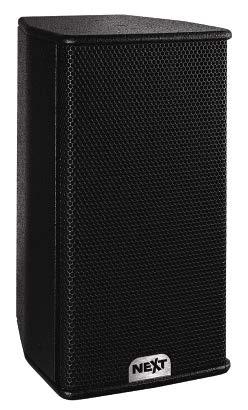

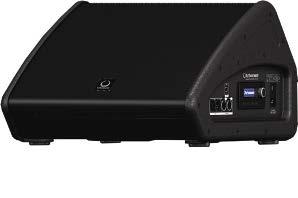
The Next small companion for HFA
A NEW 6.5-inch passive Nextproaudio model has been added to the HFA speaker series to complement the series’ larger
existing models. Destined for use in small live performances, installations, or as front-or side-fill in a bigger setup, the HFA106p offers a user-rotatable 90-degrees x 40-degrees coverage pattern from its 6.5-inch custom low frequency driver and 1-inch custom compression driver. This results in a stated frequency response of 82Hz18kHz, a peak SPL of 124dB and sensitivity of 92dB.
Weighing 12.7kg, the HFA106p enclosure is made from birch plywood and is coated with a scratch-resistant textured paint. To aid with the deployment of twoway portable systems, companion HFA112s, HFA115s, and HFA118s subwoofers use an integrated 2-channel digital amplifier to power external full-range passive speakers.
www.next-proaudio.com
amplifier as opposed to the 1,400W from their neodymium siblings. A further difference can be found with the dome compression driver. For the new models these are in the form of 1-inch titanium tweeters, whereas the original four use 1.4-inch neodymium units.
dispersion of 60-degrees horizontal by 40-degrees vertical and feature
matching single 12-inch bass reflex the LF performance to 33Hz with an upper limit of 85Hz. In combination frequency reproduction but d&b states rigging and placement restrictions’.
www.dbaudio.com
DSP from fellow Music Group brand, Klark Teknik. The whole family of wedges have been designed to work individually without a controller so feature a user interface via LCD display or remote control via
Renkus-Heinz networks with Dante
IN RESPONSE
and higher demand for Audinate’s Dante networking technology, Renkus-Heinz has released Danteenabled versions of its Iconyx Gen5 and IC Live fixed installation line array cabinets. The manufacturer has also made –RD versions of its Iconyx IC Series and IC Live ICL-F Series units, providing them with Dual Redundant Dante connectivity facilitating audio transport at sample rates that are configurable up to 96kHz.
spectrum, the manufacturer has also unveiled an update to its Rhaon II software package, with the release of Rhaon 2.1 supporting Dante connectivity. The update also features more than 200 software enhancements, such as allowing for multiple zones, delivering the newlydeveloped Device Icon View mode for large setups, simple generation of system status reports for all device parameters and the ability to
www.renkus-heinz.com
March-April 2017 WORSHIP AVL 59 PRODUCTS
The TFX122M-AN
The NEXT-proaudio HFA106p
The three new xS-Series additions
Yamaha technology in new forms
YAMAHA HAS spotted a growing industry trend of headphone monitoring within both live sound and studio environments. In response to this, the manufacturer has expanded its MT Series with the launch of the HPH-MT8 and HPH-MT5 professional monitor headphones. Both new models are designed to deliver the sound quality, stereo imaging and source signal reproduction of the NS-10M studio monitor, while including the isolation that headphones can offer.

‘Built for comfort’ when users are in the midst of a lengthy monitoring session, the HPH-MT8 and HPH-MT5 are said designed to withstand life on the road, with a closed-back, circumaural configuration and ABS housing, while the headband is reportedly sweat resistant. The ear pads have been constructed with smooth synthetic leather and lowresistance cushions said to absorb vibrations and decrease leakage. Both units include three-dimensional arm pivoting functionality and an adjustable slider length. The HPH-MT8 also facilitates single-ear monitoring with aluminium support arms and steerable earcups.
Custom drivers equipped with 45mm (HPH-MT8) and 40mm (HPH-MT5)
CCAW voicecoils are incorporated with neodymium magnets for definition and control. These deliver the MT8 and MT5 with frequency responses of 15Hz to 28kHz and 20Hz to 20kHz respectively. Both units are bundled with a detachable 3m straight cable and a 6.3mm stereo adaptor, while the MT8 also comes with a detachable 1.2m coiled cable.
In the spirit of transforming the technology of one of its systems into that of a different form, Yamaha has released the TF-Rack, which introduces the TouchFlow Operation of the manufacturer’s TF Series in a compact rack mount model. Within a 3U, 19-inch rack enclosure sits an all-in-one 16+1 stereo input and 16 output digital mixer.
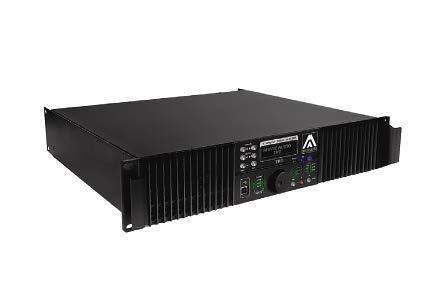
It is built with the same touchscreen as the TF1, TF3 and TF5 consoles that combines the manufacturer’s Selected Channel and Centralogic interfaces. The Touch & Turn control has also been lifted from the consoles, providing the ability to adjust parameters. Also included are QuickPro Presets, designed for specific musical instruments and microphones to enable quick setup, while remote control is offered by way of wireless
Amate brings TriPhonic into the 21st Century
and MonitorMix.
TF-Rack utilises Yamaha D-PRE microphone preamplifiers as well as input and output channel processing via eight processors that feature Yamaha’s SPX technology. With 16 analogue XLR/TRS combined mic/ line inputs, plus stereo analogue RCA pin line inputs and eight analogue XLR outputs and a further eight analogue outputs of the TRS variety,
the rack mount mixer includes an expansion slot to add an optional NY64-D audio interface card, which alongside a Tio1608-D I/O rack unit, can facilitate a basic Dante network. It is designed for flexibility with 40 input mixing channels, 20 aux busses and eight DCA groups with Roll-Out, while offering 34 x 34 digital record/playback channels that are accessible through USB 2.0 + 2 x 2 and a USB storage device. Launching alongside TF-Rack is firmware update V3.0, which will be compatible with the entire TF Series, adding support for setting up limitedaccess user accounts and additional QuickPro Presets.
Finally, Yamaha is adding AES67 support to its Dante-enabled products. Currently, 24 of the manufacturer’s systems possess Dante networking capabilities, and these will be supplied with device and Dante firmware updates. ‘AES67 support will allow Dante and Ravenna devices to work together in broadcast systems that offer unprecedented flexibility and efficiency,’ said Yoshi Tsugawa, director of Yamaha’s pro audio business unit.
www.yamahaproaudio.com
Audio’s classic 30-year-old TriPhonic amplifier has been announced by the Spanish loudspeaker manufacturer.
The original TriPhonic witnessed great success as a one-stop shop solution for L/R satellite and sub systems.
Named the TPD 2.1 (TriPhonic Digital), the revamped model draws on the same design in the digital domain, with Class-D amp circuitry, onboard digital signal processing and a switched mode power supply added. DSP effects include filters, PEQs, peak/RMS limiters and delays,
for the time alignment of amp channels. Despite these additions, the manufacturer also promises the same simplistic operation as the classic model. With the device weighing 8kg, its stereo channels each provide 500W of power, while the dedicated subwoofer channel offers 1,000W – all at 4-ohms. The universal switched-mode power supply includes Active Power Factor Correction, enabling it to operate in any mains condition between 85V and 240V AC. For power saving, a built-in EcoMode puts the unit into standby mode in the absence of an audio signal. For additional control options, a computer running Amate’s DSPLink software can be connected via USB port.
www.amateaudio.com
EAWmosaic is an iOS control app
Radius gains EAWmosaic control
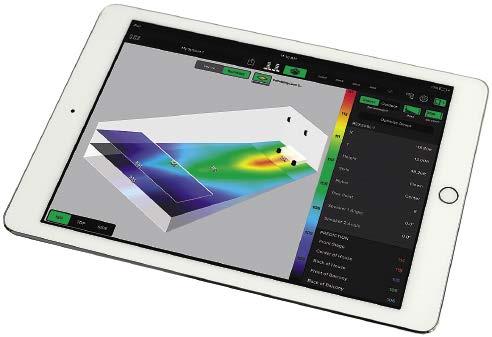
IOS USERS can now find EAW’s EAWmosaic app available for free download in the Apple App Store. The application is designed to provide users of its Radius system with wireless remote control and monitoring capabilities via an iPad. With the iPad connected directly to a Radius system via a single cable, the app is also capable of
providing multichannel audio from any Dante-enabled source, such as a front of house mixing console. According to the manufacturer, end users can ‘create system design proposals, complete with acoustical predictions, in minutes while standing in the design space’.
www.eaw.com
60 WORSHIP AVL March-April 2017 PRODUCTS
Yamaha’s HPH-MT5 headphone studio monitor

When less is more
THE CDC seven promises all of the control capability as the larger CDC eight in a more compact format.
Cadac is drawing from across its CDC line with the brand-new CDC seven mixing console unveiled at last year’s AES. Sandwiched in between the British manufacturer’s CDC six and CDC eight models, CDC seven blends the medium-format of the CDC six and with the control capabilities of the CDC seven – dual 23.5-inch hi-definition, widescreen touchscreens and a 36-fader surface.
‘We were extremely pleased with the reception the CDC six received when launched 18 months ago,’ offered Nick Fletcher, director of R&D. ‘As a result of the continual development of our innovative user interface, industry-leading latency management system and unsurpassable audio performance we believe the CDC seven offers an incredibly attractive proposition for those who want something that stands head and shoulders above the norm.’
According to Cadac, the CDC seven maintains all of the ‘feel and familiarity’ of the CDC six, in
particular its user operation and minimal learning curve. The new model doubles both the number of large format LCD touchscreens (with the associated encoders) as well as the physical fader count. Expanding the number of inputs to 96, the new console retains the CDC six’s 56 busses; 48 of them configurable.
The high contrast displays feature the same swipeable graphical user interface that Cadac users will be familiar with. The encoders
TASCAM’s inconspicuous wired mic
AIMED AT videographers, TASCAM’s DR-10L is a compact body-pack recorder and lavalier microphone that is designed to offer the audio quality and features of its bigger brothers, the DR-10X plug-on ENG and the DR-10SG shotgun mic recorders. As the recorder can be concealed at a subject’s hip, the DR-10L removes the unpredictability that arises with wireless solutions, such as interference, while remaining inconspicuous.
The unit is powered by a single AAA battery that reportedly provides 10 hours of recording. It records
48kHz/24-bit Broadcast WAV files, storing them to microSD or microSDHC cards. The features that DR-10X draws from its siblings include a built-in limiter for preventing distortion, a low-cut filter for minimising wind noise and an OLED display designed to be readable in direct sunlight. The manufacturer’s Dual Recording mode is also included, which records a lower level safety track in a bid to safeguard against spikes in source level.
www.tascam.com
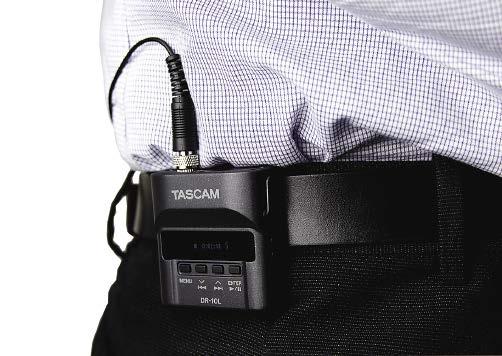

immediately to the right of and below both screens further encourage the use of touch and swipe gestures to navigate and operate the console. A third, centrally-mounted 6.5-inch LCD touchscreen provides system control. The integration of the two main touchscreens gives users the ability to display and control multiple tasks simultaneously. For example, the VCAs can be displayed on one screen while the inputs to the VCAs are displayed on the other. The faders
and encoders will follow the GUI displayed on the individual screens, helping to speed up workflows. The control feature set includes Cadac’s Monitor Mode with Mix Focus, as well as the ability to create custom fader layers. All 36 motorised faders on the CDC seven are stated to offer stereo metering and a full-colour userdefinable OLED display.
The desk can also be integrated into Cadac’s own MegaComms digital audio network, reportedly resulting in a total through-system latency from stage inputs to console outputs (including all console processing and A/D/A conversions) in 37 samples, or just under 400μs, when operating at 96kHz.

The CDC seven also integrates 16 onboard stereo effects and comes preconfigured with a built-in 64 x 64 Waves interface allowing direct connection to a Waves MultiRack SoundGrid server and the Waves effects library while also enabling multitrack recording straight to a laptop.
www.cadac.co.uk
TouchMix goes Pro
QSC IS targeting both production professionals and live performance venues with the newest addition to its TouchMix Series, the TouchMix-30 Pro. A 32-channel compact digital mixer, the device has been designed with an ‘enhanced feature set’ that will reportedly deliver an intuitive workflow for professional production and live applications. The manufacturer stated that the mixer is also suitable for musicians and bands.
The unit’s 32 mixing channels comprise 24 mic/line, six line, stereo and USB. In addition to increasing the number of channels when compared to its predecessors, the TouchMix-30 Pro has 16 outputs that add to the level of flexibility it offers in terms of signal management.
Also included are what the manufacturer refers to as the ‘pro features’, from which the console takes part of its name. These include: a 10-inch multi-touch touchscreen, anti-feedback and
room tuning wizards, a pair of realtime analysers, a touch-and-route patch matrix and eight sub-groups with 6-band full parametric EQ as well as 32-channel direct-tohard drive record and playback functionality, a 32-channel DAW interface for Apple computers and USB MP3 playback. Also featured are 24 Class-A mic preamps, 14 mono mixes that can be paired for stereo, 120 presets and six stereo effects processors.
www.qsc.com
62 WORSHIP AVL March-April 2017 PRODUCTS
Cadac’s CDC seven and CDC six, forward and back, respectively
The TouchMix-30 Pro is designed for both production and live applications
TASCAM’s DR10L beltpack recorder
Flagship functionality in a two channel receiver
WITH DIGITAL 6000, Sennheiser has brought the same long-range mode and proprietary Sennheiser Digital Audio Codec of its flagship Digital 9000 modular multi-channel wireless microphone system to a two-channel receiver with associated handheld and bodypack transmitters.
The series comprises a two-channel receiver in two different versions, a bodypack and a handheld transmitter as well as a rack-mount 19-inch charging unit. The digital two-channel receiver works across a switching bandwidth of 244MHz (470 to 714MHz), which is covered by three transmitter versions (470 to 558MHz, 550 to 638MHz, and 630 to 718MHz). Up to eight receiver units can be daisy-chained without the need for an additional antenna splitter as the multi-channel system will work with a single pair of antennas and the system latency is a reported 3ms.

The system offers true bit diversity, transmission error correction and additional intelligent error concealment for reliability while security is covered by AES 256 encryption. Digital 6000 also features automatic frequency set-up and works
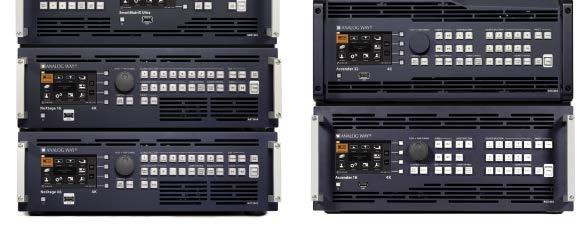
with the manufacturer’s Wireless Systems Manager (WSM) control and monitoring software.
with a white OLED display, which gives a quick overview of the RF signal, link quality, audio signal, battery status, frequency and encryption. Several home screens provide access to further information and critical operating conditions and error messages are directly indicated on the display.
The system works with standard active and passive UHF antennas, as the frequency-selective antenna filters are contained in the EM 6000 receiver. According to Sennheiser, this means that existing antenna infrastructures can continue to be used.
The SKM 6000 handheld transmitter is fitted with Sennheiser’s standard capsule interface and can therefore be combined with all the microphone heads from the evolution wireless Series, the 2000 Series, and also the 9000 Series heads. The transmitters

as the Digital 9000 units.
The L 6000 charger is a 1U device that can be fitted with up to four charging modules, each of which recharges two bodypack or two handheld batteries, respectively. Three-coloured LEDs on the front panel give a quick overview of the charging process. The L 6000 charging unit can also be used for Digital 9000.
The solution can reportedly integrate into digital or analogue system infrastructures as the EM 6000 receiver is fitted with a digital AES3 output, transformer-balanced analogue XLR-3 outputs and ¼-inch jack outputs. The Dante version of the receiver offers an additional Amphenol RJ-45 connector for integration into a Dante network.
www.sennheiser.com
Captivate your congregation with unsurpassed presentation technology






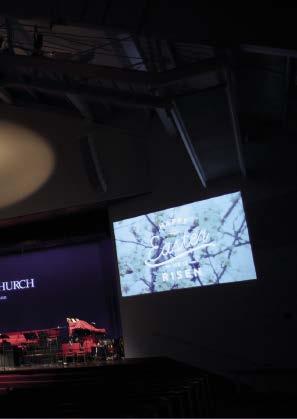
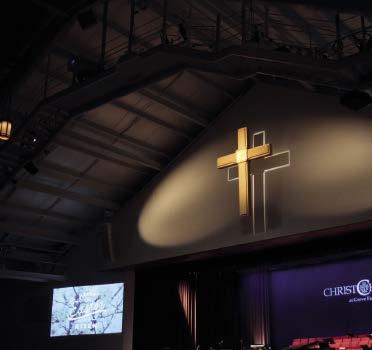
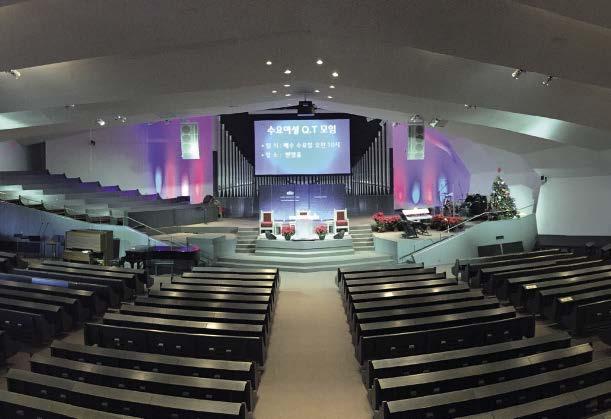
1/2PAGE HORIZONTAL

LiveCore™ series to create a richer worship experience





u All-in-one systems for any applications: I-MAG, soft-edge blending, LED walls, multi-location signal routing

u Seamless switching, glitch-free selection and transition between multiple sources: videos, graphics, song lyrics, and presentation files
u Easy to set up and operate: user-friendly Web RCS and app for drag & drop and touch screen management
u Designed to simplify live worship production: full live Preview of all sources (Preview/Mosaic/Monitoring)
March-April 2017 WORSHIP AVL 63 PRODUCTS
To learn more, connect with us onCourtesy of Genesis Technology
To learn more, connect with us on Analog Way Asia Pacific HQ I +65 6292 5800 I www.analogway.com
Courtesy of Christ Church at Grove Farm
Qu Series gains Audio-Technica mic presets
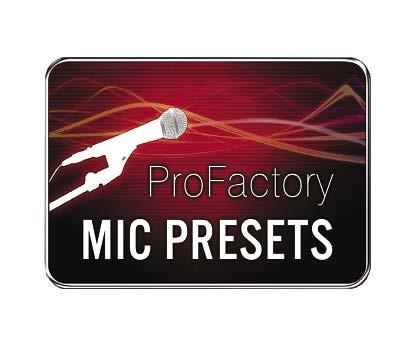
NEW PRESETS for Audio-Techinca microphone models have been added to Allen & Heath’s Qu Series digital mixers. The ProFactory Mic presets package aims to provide channel library presets for industry leading microphones. The new Audio-Technica presets include settings for MB, ATM and Pro series microphones, joining the existing library of Sennheiser e600, e800 and e900 series models and PGA, SM and Beta series from
ULX-D patch adds security and stability
FIRMWARE UPDATE 2.0.19 for Shure’s ULX-D digital wireless systems provides support for the manufacturer’s Access Control functionality, which protects systems from unauthorised changes. This feature allows a user to assign a PIN to networked devices, while the software will monitor devices and only grant access to those with the correct authentication code. The update also reportedly provides improvements to audio stability in marginal RF conditions, and a codec fix to repair a high-pitch noise issue. Those who download the update, found on the Shure website, are
for both receivers and transmitters as version 2.0.19 and any following releases will not be backwards compatible with older 1.X firmware
Smaller, but still Smart
THE SMARTBOOM Lite series of headsets reportedly retains the ‘features, comfort and reliability’ of its larger sibling, Pliant Technologies’ SmartBoom Pro headset series, while providing them within a smaller form factor. Comprising 4-pin XLR female, 5-pin XLR male and unterminated versions, the Lite series is designed to deliver enhanced acoustic isolation while incorporating a single-ear design with a closed back that makes it a lightweight option. A flexible mic boom provides a dynamic cardioid microphone with noisecancelling capabilities.

As with the Pro models and as the name suggests, the Lite versions make use of the manufacturer’s SmartBoom technology that enables the microphone boom to serve as quick muting on/off switch. Each of the series’ headsets are finished in rubberised matte black and include
an adjustable headband to offer a comfortable fit. A replaceable ear pad and 150cm cable are supplied.
The CoachComm division has also introduced CrewCom to the world: a wireless intercom solution designed to enable high user density, large range and scalability. The manufacturer also states that the system includes the ‘smallest fully-featured professional fullduplex wireless radio pack’, offering ‘excellent voice quality and multiple simultaneous frequencies’.

The system is built on a ‘highly scalable’ platform and comprises a family of devices to facilitate any size and type of application. The products are available in 2.4GHz and 900MHz versions – the 900MHz versions are limited to use in areas that the band is legal. These frequency ranges can be used in any combination simultaneously on a single system.
to the system’s Dante software, in addition to myriad minor bug fixes.
www.shure.com
DPA MICROPHONES is aiming to take further inroads into the installation market with the release of a new stand for its d:screet SC4098 supercardioid podium microphone.
Designed to be placed on either a table or podium or attached to the ceiling or wall, the Microphone Base is available with either a MicroDot connector, an XLR connector, or unterminated leads for connections to Phoenix blocks. Both black and white versions are available that the manufacturer states as boasting an aesthetically pleasing design.
To provide the system with a network on which to operate, Pliant has developed CrewNet, which coordinates all of CrewCom’s system timing, audio, signalling and controls and provides a means of transport. It can operate on a standard Cat-5e cable or higher, and across single mode lines of fibre. The manufacturer has also produced CrewWare as a software package for CrewCom, delivering offline configuration, online control and real-time monitoring for each device within the setup.
www.plianttechnologies.com
The d:screet capsule is mounted on a boom that, for the tabletop version, has a gooseneck at the top and the bottom allowing users to position the mic where they want it. The ceiling version consists of one gooseneck. In both versions, the cable can exit to the side of or beneath the unit. A range of kits have been formed containing a different connector solution.

For tabletop applications there are three kits consisting of a black base and a d:screet SC4098 with a 45cm gooseneck, while for ceiling applications there are three kits consisting of a white base and a d:screet SC4098 with a 15cm gooseneck. The microphone and base can also be purchased separately and mixed and matched.
www.dpamicophones.com
64 WORSHIP AVL March-April 2017 PRODUCTS
Shure has released a ULX-D firmware update
B6 LAVALIER


The most versatile microphone just got better.
Hides Anywhere Connects to Everything
At 2.5mm in diamater, the B6 is the world’s smallest lavalier microphone, making it easy to place for excpetional sound.
Unmatched Support


With over 350 supported wireless transmitters, the versatility of you B6 expands every day.
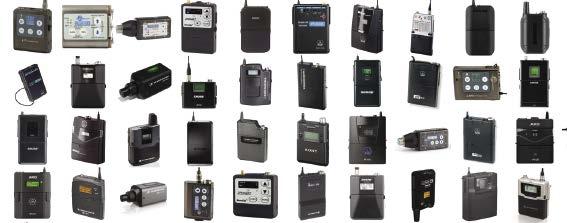
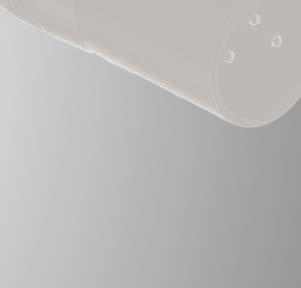


Countryman has hand-crafted microphones in California for 50 years. Call for dealer information or technical support direct from the factory.
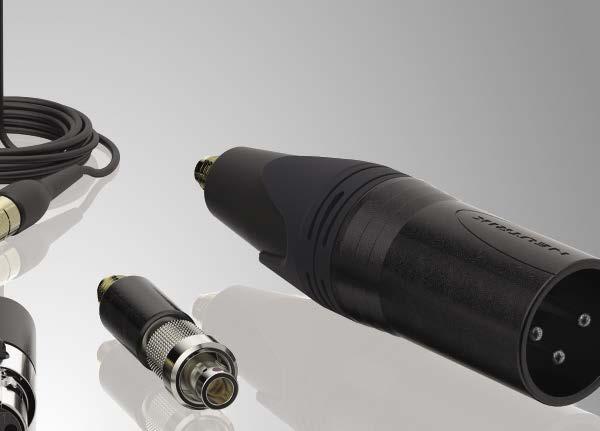
http://www.countryman.com/B6/ sales@countryman.com




RedNet Control goes large with version 2.0
IN RESPONSE to a growing and global trend of RedNet users employing ever-larger RedNet systems, Focusrite has upgraded its RedNet Control software system with the release of version 2.0.
The software enables remote control of the manufacturer’s RedNet range of Dante-based audio-over-IP systems and the update has been made to give users more intuitive control.
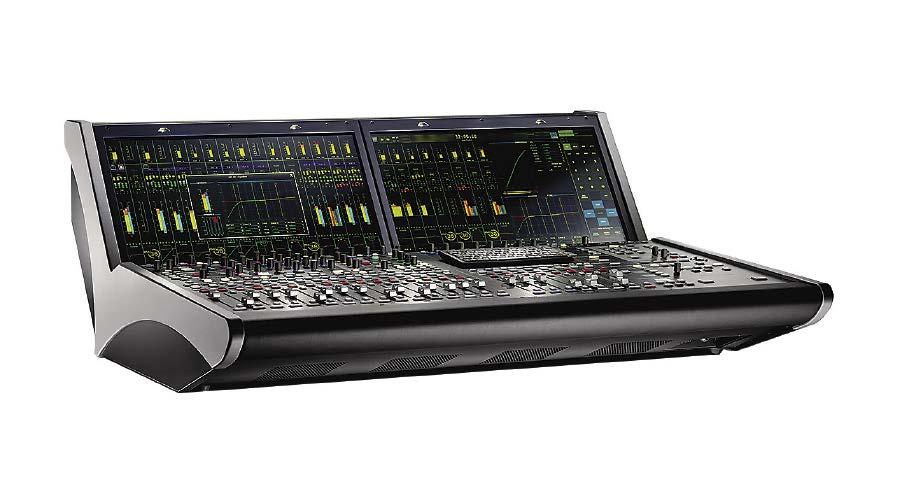
RedNet Control 2.0 provides users with a tabbed graphical interface, much like you would encounter on a web browser. Each tab on the interface can display up to 12 devices, depending on the level of detail required, and 50 tabs can be defined
at any one time. Devices available can be dragged from a sidebar list into a grid on a tab. With the capacity to control up to 600 RedNet devices, the equivalent of 9,600 Dante audio channels, the new update has been designed to handle the largest of systems. The system can also be set to populate tabs automatically with devices from the list, while tab contents can be managed via a dropdown menu.
Users can identify and rename a device on the sidebar list by right clicking on it. There is the option to filter the list so as to display only the devices that meet the selected criteria; for example, by sample rate or devices
that are not currently in a tab. Search functionality is also included for the device list. Devices are now shown graphically on the new user interface. RedNet devices may also be grouped on each page, enabling simpler management of signals. One example given is that tabs can be arranged to
Outdoor cabling whatever the weather
SOMMER CABLE
constructed the SC-Aqua MarineX LED Control cable for outside installations. The RGBW LED control cable will reportedly endure the elements, from temperatures as cold as -40-degrees celsius and as high as 80 degrees celsius.

The Aqua cable is waterproof to a depth of 10m and resistant to sand and salt water, as well as UV rays thanks to its outer jacket. It has a 5-wire design and is halogen-free with tight braiding that the manufacturer states makes it suitable for mobile
use, while also recommending that it is adopted for both indoor and outdoor applications, particularly when extending RGB strips.
Meanwhile, Sommer Cable’s Transit MC 2030 HD is the manufacturer’s response to demand from its broadcast industry customers. It is
Latest Lawo update goes live
a 3G broadcast cable that combines the transport of both power and digital HD and 3G-SDI video. Measuring 18.8mm in diameter and featuring a ‘compact and easy-toreel’ design, Transit MC 2030 HD is specified for use in OB vans, at large events and for fixed installations. It
represent a particular area or room of a facility. The version 2.0 update also improves the software’s device monitoring, metering and parameter controls, while also allowing for the locking and unlocking of devices.
www.focusrite.com

features geared to the HOW market following a ‘significant demand from customers to use our consoles’ in this environment. Consoles running
affect certain channels or modules.
The update also provides Ravenna audio-over-IP integration for Neumann DMI-8 digital microphone interfaces.
processing and routing core has been unveiled that will provide native Dante support for its mc2 consoles. The 981/65 card features four redundant
comprises a flexible jacket that covers two double-shielded HD video lines (1.2L/4.8DZ) and a 1.5mm² power line. The cable’s low damping value and screening capability facilitates 3G signal transfer over 100m.
www.sommercable.com
Dante ports with 64 channels each, resulting in a total capacity of 256 audio channels per card.
‘Whilst the broadcast industry embraced AES67 and Ravenna as the audio-over-IP standard, Dante has a significant footprint in the install and live sound markets. With the new interface card customers can now connect their Dante-based equipment directly to our mc2 consoles’, explained Lawo’s live sound specialist, Hervé de Caro.
With the aim of further supporting the live sector, Lawo has already announced plans to add 96kHz Ravenna operation in the near future, as well as a networkoptimised gain compensation.
www.lawo.com
66 WORSHIP AVL March-April 2017 PRODUCTS
Version 2 of RedNet control is now available
Designed to withstand the elements, the SC-Aqua MarineX LED Control cable
Lawo’s mc236 console
UE Pro unveils a new flagship
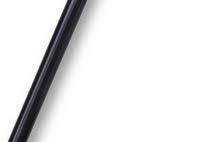
ULTIMATE EARS
announced the UE 18+ Pro, its second-generation flagship custom in-ear monitor. The company cites the UE 18+ Pro as the benefactor of two decades of experience, incorporating recently developed technologies such as its proprietary True Tone drivers in a redesigned acoustic system. The balanced armature True Tone drivers, introduced in 2015 with the release of the UE Pro Reference Remastered IEM, are spec’d by UE as extending the HF response by 3kHz.

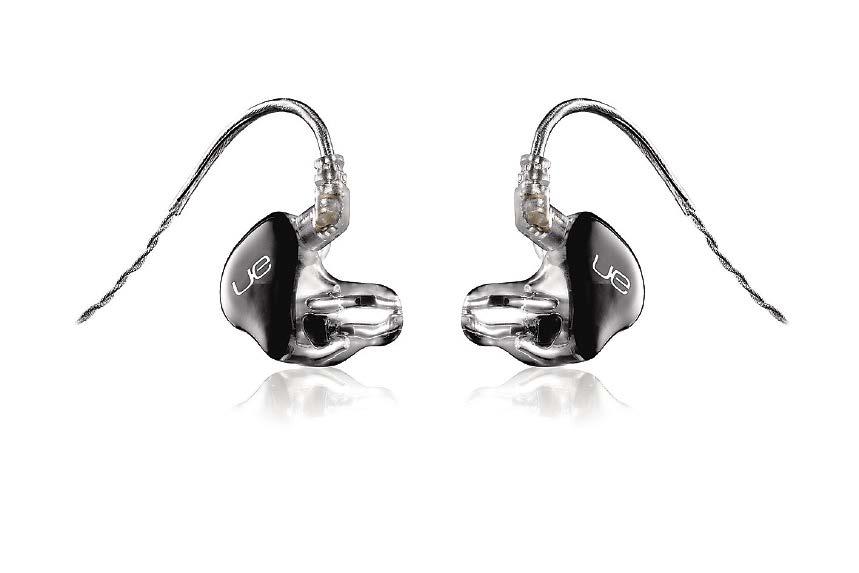
Each UE 18+ Pro earpiece houses six drivers – two LF, two midrange and two HF. A four-way crossover splits the input signal into LF, lower MF, upper MF and HF bands, while triple bores channel the audio output to the end of the IEM within the ear canal. One bore is used for the HF and a dual concentric port routes the LF on the inner bore and the MF via the outer bore. The manufacturer stresses that compared to the original UE 18 Pro and to competing IEMs, the combination of increased
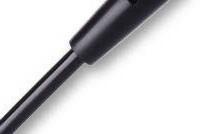
the True Tone drivers in the UE 18+ Pro offers users improvements in detail, separation, presence and coherence. The UE 18+ Pro is also voiced with an adjusted midrange
vocalists will hear a warmer sound, guitarists can expect a more natural, less crispy sound, and drummers can hear more body from their snare drum’.





Additionally, all of the manufacturer’s custom earpieces are now 3D printed. Further, the company also pioneered direct digital scanning of a customer’s inner ear. The steps are a 10 minute, ‘goopfree’ digital ear scan, followed by 3D CAD preparation of the scanned image, then by 3D printing of the earpiece shell, followed by assembly and testing. Customers’ digital ear ‘impressions’ remain on file for repeat orders or upgrades. The UE 18+ Pro, can be directly plugged into any headphone driver with a standard 3.5mm headphone jack, and a ¼-inch adaptor is provided along with a cleaning tool and case. Recognising that some headphone drivers are ill-equipped to accommodate the impedance variations inherent in crossover and driver design, UE Pro also offers the companion Line Drive, a battery powered, inline buffer amp that mitigates amplifier impedance issues with a goal of flat acoustic frequency response and consistent performance.

pro.ultimateears.com












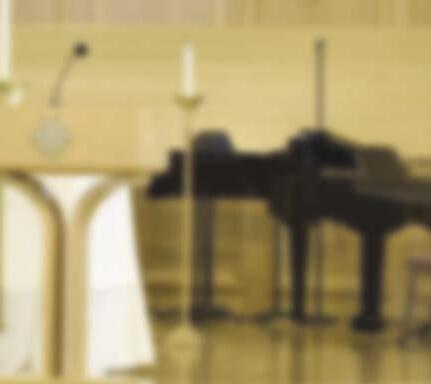
1/2PAGE HORIZONTAL

















March-April 2017 WORSHIP AVL 67 PRODUCTS
The Ultimate Ears UE 18+ Pro
Klang:fabrik adds Madi
Simplifying PTZ over IP
NEWTEK AND Panasonic have responded to customer requests for a quicker and easier setup of network-based PTZ cameras. The result is NewTek AutoLink, a PCbased software application which detects and automatically connects to network-based PTZ cameras.
KLANG’S 3D personal monitor mixing system, Klang:fabrik, has gained Madi functionality with the release of a Madi BNC interface. Intended to allow the solution to appeal to a wider audience of users, the Madi interface joins existing Dante and ADAT connectivity. Its switchable second Madi BNC input/ output port, together with the unit’s I/O routing matrix, reportedly offers various format conversions between ADAT, Dante and Madi in addition to the in-ear mixing functionality.
Firmware KOS 2.2 and the control application, Klang:app 2.2, have been released to support the expansion. In addition to Madi
support, the update also introduces new features including OSC integration and support for 96kHz operation. According to Klang, the new firmware also brings several new enhancements in terms of usability and flexibility that cater both to the professional monitoring engineer that requires complete control over all mixes, as well as musicians and performers to tailor their own bespoke mixes.
Klang:app is available for iOS, Android, Mac and Windows and as a free download at the manufacturer’s website.
www.klang.com
AutoLink is PC-based conversion software that allows camera control, NDI and streaming and is compatible with Panasonic PTZ cameras. The application reportedly enables users to manage orientation, zoom, focus and iris of supported cameras, and store and recall camera presets, directly from the user interface or a compatible controller.

The software works with Panasonic’s AW-HE130, AW-HE40 and AWUE70 PTZ cameras, as well as the company’s studio camera systems and 4K box camera AK-UB300. The presence of IP cameras is automatically detected from NewTek TriCaster and the IP Series Video Mix
Engine. The manufacturers state that cameras become immediately available for use in networked video production workflows without any additional configuration. There is no restriction on the number of IP cameras that can be connected and video translation and transmission is only initiated when the camera source is selected.
www.newtek.com
www.panasonic.com
Opening Pandoras Box becomes a collaborative effort
PANDORAS BOX 6.0 is the latest media server launched by Christie. Designed for use in a range of applications, including projection mapping and multimedia events, it can be operated as a standalone playback device, network playback client or in console mode to offer direct DMX Control. The manufacturer states that ‘Pandoras Box combines the newest rendering technology with intuitive media and show control’.
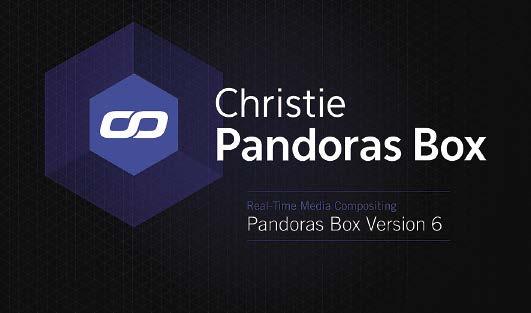
Therefore, Pandoras Box 6.0 sees the addition of new features to aid in control. These include the Multi User mode, which enables multiple operators to divide the project workflow between them into individual tasks, such as warping, content encoding and timeline programming. Alternatively, users can work on the same sequence at the same time. Other improvements include editable meshes and warps, the inclusion of UV map adjustments and live canvas masking and painting functionality, accessible from the preview window.
Complementing Pandoras Box
6.0 is Widget Designer 6.0, which enables the creation of dedicated user interfaces, as well as interaction logic, via the connection of visual control components. A redesigned
HTML5 user interface with native HTML support is incorporated with 6.0, as are animations and transitions for all pages and widgets. Meanwhile, new composite nodes facilitate the integration of node-systems with reusable custom nodes.
At the other end of the signal chain, Christie has also unveiled a new series of videowall displays as part of its Aspect family. The Christie Extreme series consists of four models: FHD553-XE, FHD553-XE-R, FHD553XE-H and FHD553-XE-HR, each with varying brightness levels that all offer an optional redundant remote power supply. The manufacturer claims that with the release of the Extreme series, the Aspect family now offers
a complete range of product options, including bezel size, brightness, power, connectivity and price.
The main feature of the Extreme series is an extremely narrow bezel

allowing for the creation of ‘nearseamless’ videowalls.
The models feature advanced panel matching – the brightness and colour of each panel comes pre-calibrated, while the Smart Light Control feature can automatically adjust the brightness of each panel for uniformity across the entire videowall to maintain consistent panels accept a variety of embedded processing modules, such as Christie’s Phoenix EP.
www.christiedigital.com

68 WORSHIP AVL March-April 2017 PRODUCTS
Panasonic’s AW-HE130 PTZ camera is compatible with AutoLink
The Klang:fabrik 3D monitoring system
Christie’s small bezel Extreme series LCD videowalls
Christie has released Pandoras Box 6.0
Analog Way adds new perspective to animation
THE LATEST round of updates for Analog Way switchers has made the manufacturer’s perspective layers natively available for any Ascender 32 – 4K. Previously reserved for the Ascender 48 – 4K – PL and the LiveCore Output Expander 48 – 4K – PL, the feature enables the manipulation of layers in a 3D space to add depth to a presentation.
Operators can change the layer position in the X, Y and Z dimensions and also rotate them around the same three axes. When the perspective layers feature is activated for a screen, the Ascender 32 is stated to offer the same level of effects as in a flat 2D mode. Compatible with computer and video sources, the layer content can be either a live source or a still image. It can support the same seamless transition effects as any other layer.
The Ascender 32 - 4K - PL
supports four outputs and up to four true seamless layers and a native background per output, or two perspective layers and a native background per output. Creation and management of the perspective layers can be managed directly from the Web
RCS software.
The French manufacturer has also unveiled a set of optional interface modules for its VIO 4K video processor that includes features able to support 4K60 4:4:4. This reportedly makes the VIO 4K the first multi-format converter
Second-generation FS7 camcorder adds
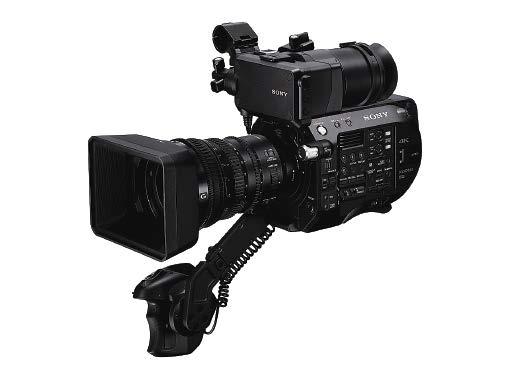
A NEW model geared towards documentary and independent film production has been the latest addition to Sony’s FS Series of Super 35mm camcorders. The PXWFS7 II builds on the success of the original FS7 camera by adding electronic variable ND (Non-Density) technology, a lever lock-type E-mount and a new mechanical design.
According to Sony, the FS7 II’s electronic variable ND Filter systems provides greater exposure control compared to the previous generation model, with the option of either preset or variable operation. Variable
adjust the density of the ND filter during shooting while reportedly
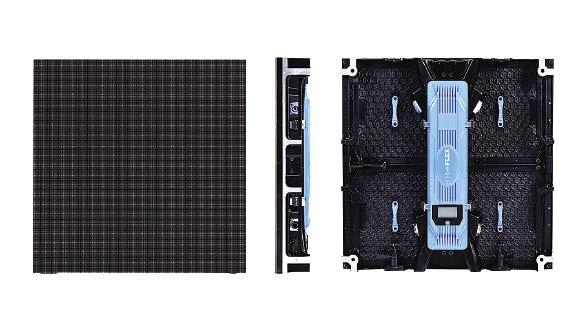
Flexlite NXG fits right in
PIXELFLEX HAS been working to develop its existing LED video technology, resulting in all models of its Flexlite NXG panels having been upgraded with the inclusion of frontserviceable video panels, as well as right-angle corner capabilities. The manufacturer states that the addition of front-serviceable panels allows for ‘quick and easy access to perform any onsite adjustments’. Meanwhile, users are now able to build LED video cubes or to set up screens in the corner of a space due to Flexlite
NXG’s ability to fit right-angles.
‘For many LED video environments, designers often want to wrap around a corner or possibly a column,’ explained Pixelflex director of marketing David Venus. ‘With our right-angle capabilities, this is now a reality. Additionally, many times in an LED video installation it’s simply not possible to easily access the back of the panels once the screen has been put in place. With our new fully front-serviceable panels, it now only takes a few minutes to complete any
capable of simultaneously supporting 4K60 4:4:4, HDMI 2.0, DisplayPort 1.2 and 12G-SDI outputs.
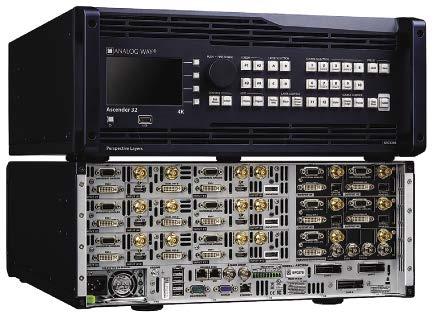
The new interfaces also increase the VIO 4K’s possible applications. With all options, the device features up to nine inputs and three independently scaled outputs. In terms of configuration, the three outputs provide a wide flexibility in order to reach more creative displays while using 4K displays. The device also allows the user to process one source simultaneously to the three outputs at any given moment, and also to configure each video delivery of the selected source, such as scaling, resolution or colour settings. Furthermore, the new set includes a module supporting Dante in order to input and output up to eight audio channels from and to a Dante network.
www.analogway.com
auto variable ND
achieving a seamless transition between steps. This expanded ND functionality reportedly results in the ability to provide fine adjustment of the exposure by relegating iris to set the depth of field, preventing soft focus caused by diffraction and colour shift caused by stacking multiple external ND filters. Preset mode lets users assign three ND settings to the filter turret for selecting the most appropriate filtration range for changing light conditions. Auto ND mode keeps the exposure at a fixed level while adjusting the depth of field with iris control.
The new E-mount level lock means that users can change lenses by rotating the locking collar instead of the lens itself, saving time during production. Accompanying the new E-mount is also a new Super 35mm lens with an 18mm to 110mm focal range (6x zoom).
Finally, the camera supports the XQD memory card format for highbandwidth and high resolution file transfer. Sony’s latest 256GB XQD card, QD-G256E, gives users 45 minutes of recording at 4K 60P and 3.5 hours at 2K 30P resolutions.
pro.sony-asia.com
adjustments for the Flexlite NXG without the hassle of removing the entire tile.’
Flexlite NXG panels are 500mm x 500mm, constructed with a die-cast
aluminium frame. Pitch options are between 2.6mm and 6.25mm, with a 6.25mm IP65 version also available.
www.pixelflexled.com
March-April 2017 WORSHIP AVL 69 PRODUCTS
The Analog Way Ascender 32 – 4K – PL
Sony’s PXW-FS7 II camcorder
Joining the ensemble
MATROX HAS announced that Ensemble Video has added support for the Matrox Monarch LCS lecture capture application for its online video and management and distribution platform. The Ensemble Video Platform is capable of video capture, management and publishing, allowing HOWs to disseminate their message over a variety of networks.

Monarch LCS generates H.264encoded video streams at bitrates up to 30Mbps, with scaling, deinterlacing and noise-reduction engines to maximise the resulting image quality. When streaming, the encoders use either RTMP or RTSP protocols to deliver live streams to local or cloudbased media servers. When recording, they write MP4 or MOV files to local USB drives, SD cards or networkmapped drives editing for archiving post use. The Matrox solution allows simultaneous dual-input for those
seeking to capture two sources from the same location, or any place a dual camera setup or a camera and computer source need to be encoded simultaneously.
‘The newest integration of Ensemble Studio with the Matrox Monarch LCS is a significant step forward for our combined customers as it provides a straightforward capture and video management solution for any organisation. In locations where a single input is required, the Monarch HD offers a robust yet cost-effective option for houses of worship,’ stated Andy Covell, Ensemble chief executive.
The LCS solution has also received a firmware upgrade that introduces operations scheduling and the ability to better manage network consumption. Through the new scheduler function, Monarch LCS
Edius enhanced for productivity and creativity
GRASS VALLEY is aiming to make video editing more productive and more creative with the 8.3 update for its Edius platform. The upgrade reportedly offers a variety of usability improvements to users of the manufacturer’s Edius Pro and
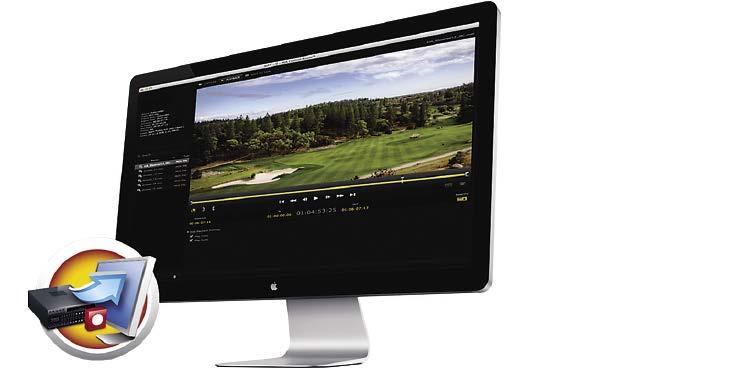
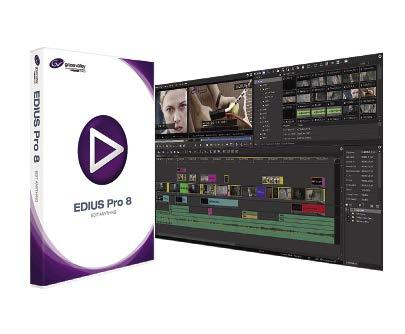
Edius Workgroup.
More specifically, the new features added to the nonlinear editing software include: highquality slow motion using optical flow interpolation; the bin now shows timecode information; there
New versions and different platforms for AJA
AJA HAS released a new software update for Control Room, its integrated driver and plugin software for Kona, Io and T-Tap systems. Version 12.5 brings a variety of bug fixes and new features, including support for Apple Final Cut Pro X 10.3 and Adobe Creative Cloud. The v12.5 update also extends the workflow capabilities of each compatible product by adding support for MXF files and the most recent HDR pipelines, as well as expanded streaming capabilities and the inclusion of SMPTE 2022-7 support for the IP-video-based Kona IP. The updated software also delivers 12-bit support for the Kona 4, Kona
Control Room has been updated
IP and Io 4K, as well as providing the option to select a 12-bit RGB frame buffer using the AJA control panel. HDR10 metadata on an HDMI output and 12-bit RGB output from
can be set to start automatically before an event, without any human intervention required. The scheduler supports the iCalendar file standard, which can be generated by a variety of scheduling applications including Google Calendar and Microsoft Outlook. Allowing identification of multiple devices on a single master calendar, when the schedule is imported to a Monarch LCS appliance, it will reportedly automatically start
events at times corresponding to that individual device.
The solution also now boasts the ability to record files locally to an SD card or attached USB drive and then transfer the data to network-mapped drives at a later time, thus avoiding data loss during peak-hour transfers due to errors or connectivity issues. Transfers can be triggered manually or pre-programmed to occur at a preset time each day.
www.matrox.com
are more ‘Burn-to-disc’ options for DVD and Blu-ray and more proxy resolution options. In addition, the manufacturer has made GV browser improvements, GUI enhancements and there is now F-Log (Fujifilm) colour space.
www.grassvalley.com
Corvid HBR support in Wirecast. AJA’s DataCalc app, previously launched on iOS, is now available for Android devices. The Android version includes all of the features and fixes up until the v3.0 update, which includes new codecs and resolution
can support 12-bit RGB output from Adobe Premiere Pro to enable HDR workflows, following the software release. Capture support in Premiere Pro is also included along with MXF OP-1A capture and playback support in AJA Control Room and Kona IP and
DataCalc is a data rate calculator for video and audio that computes storage requirements and allows users to change settings within a single-screen UI. It is compatible with a range of formats and compression methods, such as AJA Raw, Apple ProRes, DVCProHD, HDV, XDCAM, DV, CineForm, REDCODE, Avid DNxHD, Apple Intermediate, 16-bit RGB and RGBA and uncompressed. Video standards supported include NTSC, PAL, 1080i, 1080p, 720p, 2K, 4K and now, 8K.
www.aja.com
70 WORSHIP AVL March-April 2017 PRODUCTS
professional production user


EZ TV digital capabilities
VITEC HAS integrated IPTV and digital signage with the version 8.0 release of EZ TV. The addition of signage capabilities will reportedly allow houses of worship to create eye-catching digital signs, centrally manage IPTV and signage content from a single interface and automate video streaming workflows and signage campaigns.
Vitec insists the 8.0 update provides enhancements for both IPTV and digital signage. IPTV users will
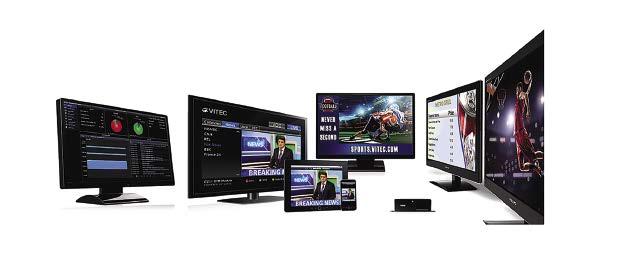
1080p60 playback, real-time updating of the electronic programme guide, video-on-demand content with new
Playtime for Martin Pro
THE LATEST addition to Martin Professional’s M-Series lighting controller family, the M-Play surface, is a playback controller, designed to offer versatility, new playback-specific tools and responsive performance. It features 512 DMX channels and is able to expand to accommodate 65,000 channels, offering users a scalable solution for when their needs change.
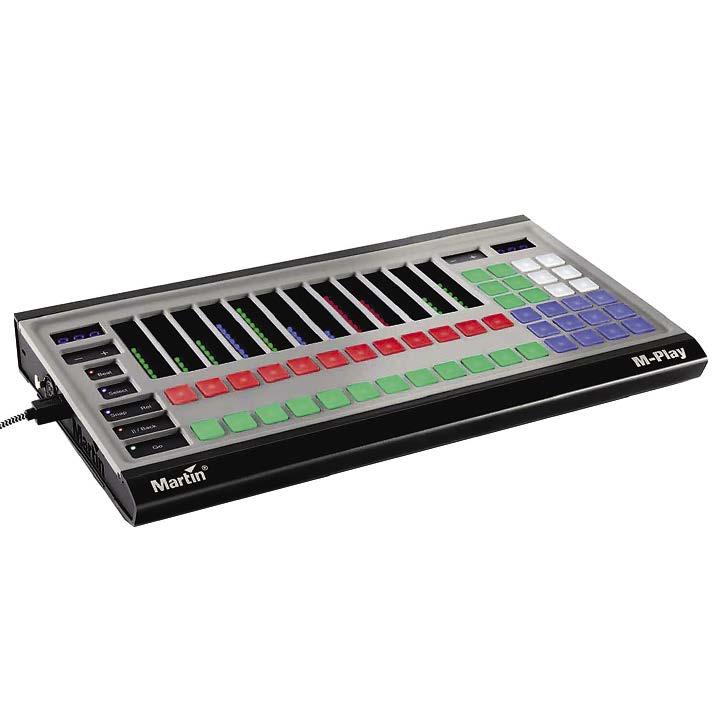
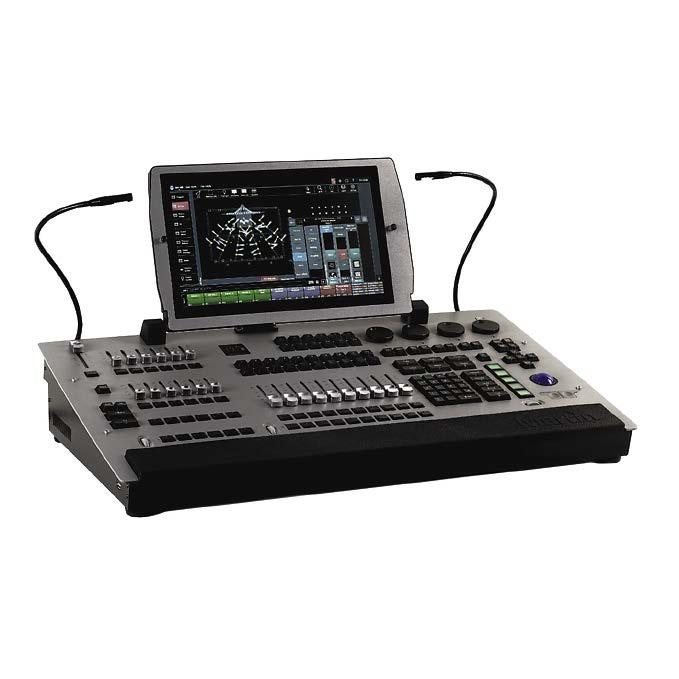
M-Play also includes FSR fader technology, pressure-sensitive buttons and velocity sensitivity, which combined aim to deliver precise, responsive control of fixtures. It is a dual bank system made with an aluminium construction that houses two separate and independent playback sections, each of which possesses its own bank of controls.
Also joining the M-Series family are the M1 HD and the M2GO HD processing units. Both are compatible with all of the other M-Series consoles and PC software and come bundled with the Martin One-Key dongle. A pair of Ethernet RJ-45 ports for Artnet, sACN and tracking backup, seven USB ports as well as Midi and SMPTE interfaces are all built-in to both models.
The M1 HD builds on the M1, and delivers 40 universes of DMX, Artnet and sACN. It features four encoders on the right side of the head display in addition to the original four. This, the Harman-brand states, ‘means
place, time-shifted TV, live video access from PCs and mobile devices and user-controlled mosaic viewing
of multiple channels. Meanwhile, the integrated digital signage features offer signage authoring, administration and analytics.
The manufacturer’s IPTV and signage end-points feature discrete hardware processes for video and graphics, supporting digital signs that blend live streams, video files, social networking widgets, and dynamically updated data.
www.vitec.com
The M1 HD
universes of DMX, Artnet and sACN and builds upon the original M2GO by adding a high resolution multitouch LCD display, as well as four additional encoders in much the same way as the M1 HD.
A total of 10 playbacks, 40 playback buttons, a main go section, grand master control, four encoders, numerical keypad, eight user function keys and a 3.5-inch display all feature as part of the M2GO HD, as well as four DMX ports which are also able to serve as DMX inputs.
Away from the M-Series, Martin Pro has also unveiled the VDO Face 5, a 5mm video panel developed for both outdoor and indoor applications and compatible with all of the manufacturer’s LED video products. When combined with other Martin Pro systems, VDO Face 5 is designed to create a complete visual solution.
‘The VDO Face 5 is driven by the Martin P3 System Controller family, which opens up new creative
look the same. Calibration and LED aging compensation also means we have effectively doubled the lifetime compared to similar products.’
And finally, returning to the M-Series, Martin Professional has updated the M-PC software to provide expanded DMX resources, increasing the DMX output of the free version of the software to four Artnet, sACN or Martin USB DMX ports. Changes come as part of a software update, and the manufacturer has confirmed that the Pro Kit version of M-PC has been opened up to include 64 DMX universes, including a Martin One-Key and a Martin M-DMX, while M-PC Ultimate increases access to 128 universes.
In addition, Martin Pro notes that ‘all restrictions are removed from existing M-Series consoles, giving each device unlimited access to DMX outputs based on the consoles processing power’.
www.martin.com
PRODUCTS
The M-Play surface
The version 8.0 update of EZ TV offers digital signage functionality
Chauvet goes rogue with P3
CHAUVET HAS expanded its Rogue Series of high-output and budgetconscious lighting fixtures with the high-brightness Rouge R3 wash. The fixture outputs up to 21,000 lux at 5m when operating at 12-degrees zoom, from 37 15W RGBW LEDs. The unit has been designed to cater for touring, rental and permanent install applications, and therefore includes functionality for smooth colour mixing, dimming, pixel mapping and additional
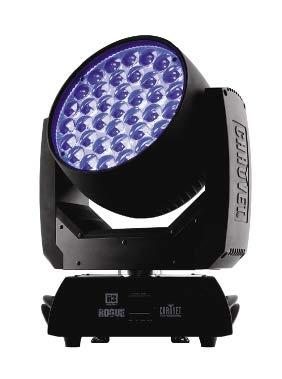

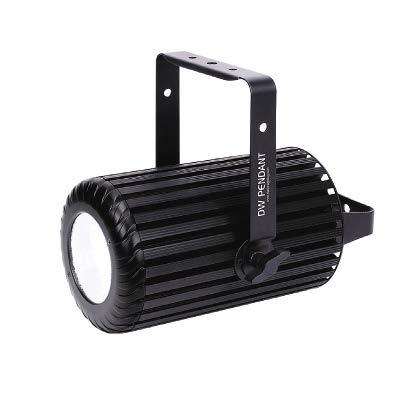
programming options.
The R3 Wash provides six distinct dimming modes. The manufacturer promises smooth control of fades due to the fixture’s 16-bit dimming of the master dimmer, as well as of individual colours.
Users are handed control of nine LED zones, enabling pixel mapping. Additionally, a 12-degrees to 49-degrees wide zoom range permits both broad and focused coverage.
Elation Pendant loses its colour
A VARIABLE white light version of the Elation Professional Colour Pendant has been unveiled by the American lighting manufacturer. The DW Pendant
available.
Additional features include five-pin XLR and PowerCon connections, a four-button control panel with LCD display for navigation through DMX and manual settings, and an auto-sensing power supply covering worldwide voltages and frequencies.
The all-white DW Pendant from
control of stage or house lighting. The enclosure houses 36 3W LEDs – 18 cool white and 18 warm white for variable shade projections of white light, with colour temperature control from warm white tungsten (2,900K) to cool white daylight (6,800K). It also reportedly offers a uniform flat-field output and 41-degrees beam angle, enabling its use as a wash luminaire. Also included are variable dimming curve modes and strobe effects, while LED refresh rate and Gamma brightness are also user-adjustable. Measuring 374.0mm x 252.5mm x 308.8mm, the DW Pendant is RDM (Remote Device Management) protocol capable and is controllable via seven DMX channel modes. It houses an internal E-Fly extended range wireless DMX transceiver to facilitate setup, is convection cooled for silent operation and can be used in broadcast environments thanks to its flicker-free projection. Removable pendant and yoke mounting brackets aid setup and optional exterior shroud kits are also
Meanwhile, the DW Chorus is a new series comprising four white-light LED batten wash lights, each with variable white colour temperature control from 2,700K white tungsten to 6,700K cool white. The series has been designed for floodlighting surfaces and stages with its variety of whitecolour shades, as well as for delivering linear effects with its range of variable dimming curves, strobe and chase effects. Each model in the series is constructed from die-cast aluminium and reportedly ‘flicker-free’ when used in broadcast.

The series consists of the 316mm DW Chorus 12, 604mm DW Chorus 24, 1,182mm DW Chorus 48 and the 1,760mm DW Chorus 72, with each model containing double the number of cold white and warm white LEDs
maximum consumption of the larger 72 model goes up to 510W.
The four DW Chorus fixtures all utilise individual 3W cool white and warm white Lumi LEDs, the hue, saturation and intensity of which can be individually controlled. LED group control is also an option.
Other features include multi-channel DMX control, 3- and 5-pin DMX, PowerCon and RJ-45 I/O connections, ArtNet, KlingNet and RDM protocol compatibility, multiple-unit power linking capability and a four-button control panel with LCD menu. To assist with installation, integrated rigging
The R3 can be programmed via DMX channel profiles (28, 58 and 99 personalities) and RDM is offered so that users can monitor fixture functions and make remote changes to menu functions. Connectivity is via 3- and 5-pin DMX connectors, as well as PowerCon in and out. An onboard OLED screen displays ‘straightforward’ menu options.
www.chauvetprofessional.com
applications, such as serving as a wash light, uplight, wall wash or truss warmer. Each unit houses 19 individual 15W LEDs and has zoom coverage of between 5- and 45-degrees.
Other shared features of the SixPar Z19 IP and DW Par Z19 IP include IP65 protected die-cast aluminium exteriors, 5-pin DMX and PowerCon True1 I/O connections, 180-degree reversible LCD menu displays and four-button touch control panels, multiple unit power linking, flicker-free operation and strobe and variable dimming curve effects, as well as being RDM capable.
The SixPar Z19 IP boasts a six-colour LED multi-chip and is capable of producing ultraviolet light amid other colours. It can project up to 13,240 LUX at 3m and is controllable via four DMX channel modes.
The DW Par Z19 IP is a white-light par luminaire featuring 15W cool white/ warm white LEDs that can emit variable shade projections of white light up to 32,064 LUX at 3m. Its temperature range is from 2,700K white tungsten to 6,000K cool white. Six DMX channel modes control the fixture.
Elation’s DW Chorus Series is formed of four models
PRODUCTS
Elation Professional
Chauvet Professional’s Rogue R3 Wash
The colourful SixPar Z19 IP
ChristChurch London
CHRISTCHURCH LONDON ‘STARTED
in a small room in a hotel, and then we moved to a large theatre in London called the Picadilly Theatre,’ chronicles Dan Langridge, head of sound. ‘When we outgrew that theatre, we then moved to our current main location, which is the Mermaid Theatre in Blackfriars.’ The Mermaid, home to ChristChurch London (CCL) Central, is a convention space with multiple breakout rooms. The 600-seat theatre typically hosts 400 to 500 worshippers each Sunday. In January of last year, CCL began services at three additional sites. The Swiss Church in the West End (CCL West) is a 150-seat venue with attendance of around 100. Platanos College in Stockwell (CCL South) is a 150-seat space drawing 100 to 150 worshippers, and St Johns Church in Bethnal Green (CCL East) can seat 200 and also draws 100 to 150 worshippers each week.
‘Each service adapts its needs to the congregation demographic that attends,’ says Mr Langridge. ‘For example, our family services in the South and Central have areas for kids, crèche and feeding mums, with a relay of the main service in the auditorium.’ Services are staggered throughout the day, allowing one preacher to physically
At CCL Central the church provides, ‘the whole sound system, except for the speakers,’ shares Mr Langridge. ‘They’re using Bose Roommatch for their left-right line array in the venue, but we’ll bring in our own audio consoles.’ The desks are DiGiCo SD9s at both FOH and monitors. ‘We’ll bring in a DiGiCo D2 stage rack and we link that with BNC Madi. We installed a BNC line from front of house to stage, so we can just roll in our desks to the FOH and monitor positions.’ Backline, consoles and mics are stored onsite at the theatre. ‘The main theatre’s got a lighting rig which we use with the in-house lighting board, an Avolites Tiger Touch 2.’
‘For the other three venues,’ Mr Langridge continues, ‘we tour a complete system. We have DiGiCo SD11s, which do front of house and monitors from the same console. We put in d&b Y series speakers.’
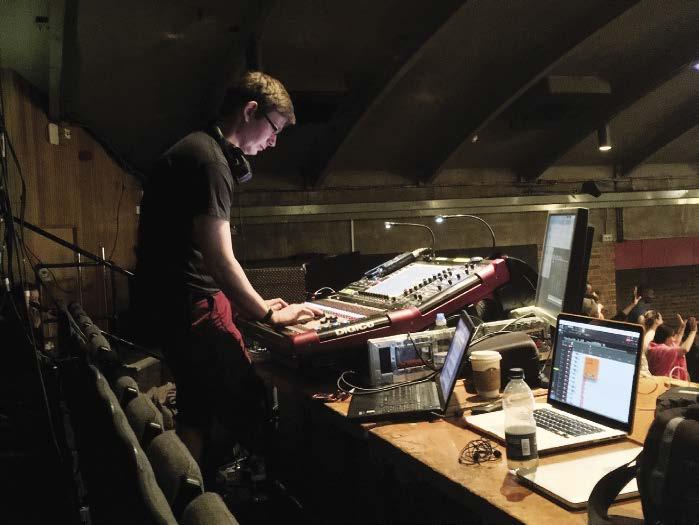

The d&b audiotechnik loudspeakers are rolled in ready each week in a groundstacked configuration.
Across all four venues, lighting operation is ‘very static,’ says Mr Langridge, ‘our worship scene, an entry scene and one with all the band lights off, just focusing on the preacher.’ Twenty ADJ Mega TriPar Profile Plus LED par cans are toured for the smaller venues, ‘to put colour in the room.’ Video projection is used
primarily ‘to put words on the screen,’ via ProPresenter software.
A half-dozen Sennheiser EW500 wireless mic systems are in use for the smaller venues, with seven Shure SLX channels at CCL Central (due for replacement with Sennheisers soon). Wired mics across all four venues include a cross section of Shure and Sennheiser, with Audix and AKG models in use as well at CCL Central. Radial DIs are used universally for bass and keyboards. Monitoring at all venues is via wireless IEMs, 12 Sennheiser G3 E300 units at CCL Central, 10 in the mobile rig. CCL has 30 people on staff on Sundays. Nate Sence, head of operations, ‘oversees everything operational about a Sunday, and during the week as well’. Mr Langridge’s role
and an assistant sound tech at the other venues. Each venue will also have a video tech, lighting tech and a
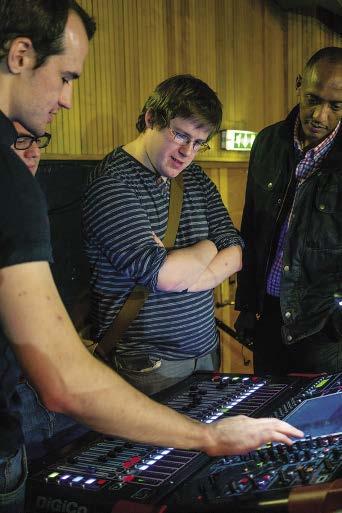
The DiGiCo consoles get a nod as Mr Langridge’s favoured kit. The sound, the matrix mixer, the preset capabilities and the ‘quick to learn’ work surface are cited features. He is also pleased with the adoption of ‘tour ready’ multipin VEAM connectors for rack connections, ‘to speed up setup and pack down and to avoid any mis-patching.’
His favourite part of the job is ‘definitely training’. Mr Langridge says he learns himself when the volunteers ask questions. He praises their hard work, and says that team members can achieve professional competence. ‘I really enjoy getting into the nitty-gritty training with the volunteers,’ he concludes.
www.christchurchlondon.org

74 WORSHIP AVL March-April 2017 THE TECH VIEW
Dan Langridge, head of sound
Each Sunday, ChristChurch London holds services in four venues, with 30 volunteers involved. Worship AVL learns how the logistics are managed
A volunteer runs CCL Central FOH
CCL DiGiCo training
All of CCL’s congregations gathered at CCL Central across two services for a Christmas homecoming
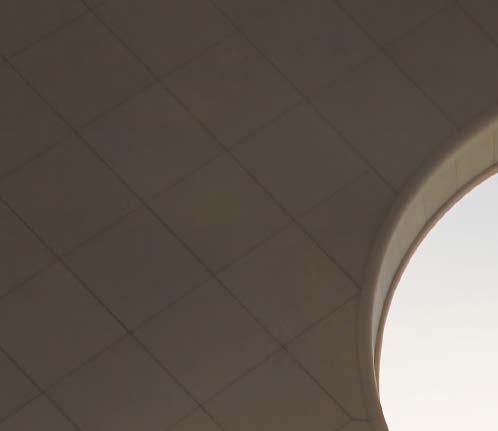

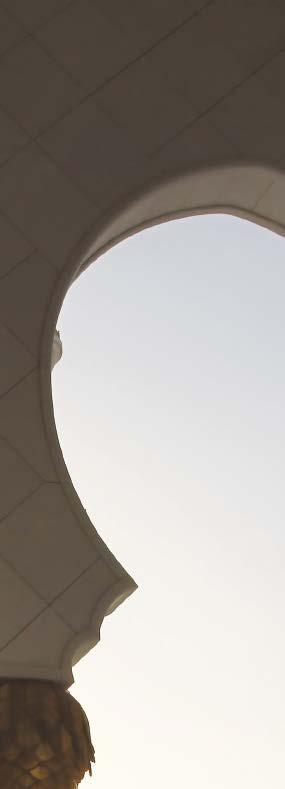


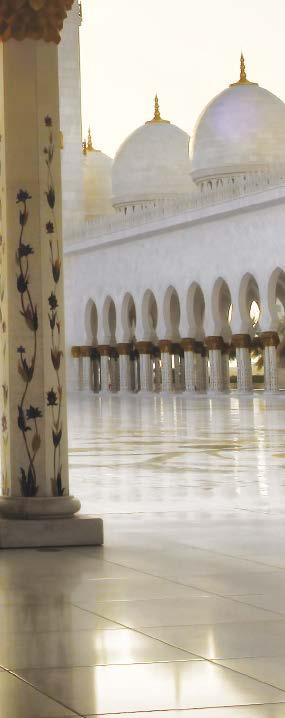












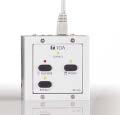

Steerable sound isn’t just about being heard, it’s about being understood.
Steerable sound isn’t just about being heard, it’s about being understood.
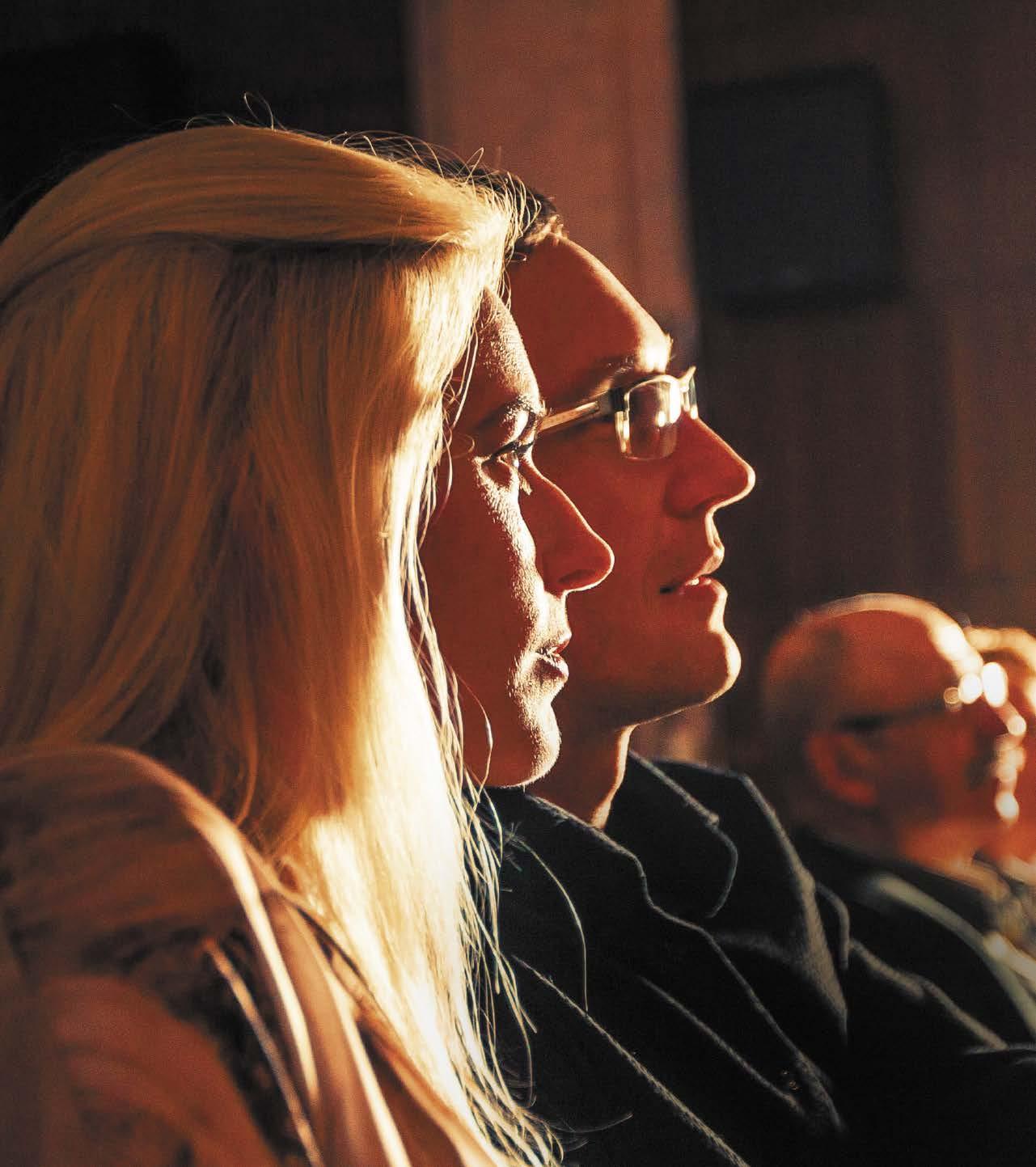
ICONYX Gen5 steerable loudspeakers deliver clarity to every seat.
ICONYX Gen5 steerable loudspeakers deliver clarity to every seat.
ICONYX Gen5 steerable loudspeakers deliver clarity to every seat.
ICONYX Gen5 steerable loudspeakers deliver clarity to every seat.

It didn’t matter how far back their seats were. Or how cavernous the hall was. All they heard – all they felt – was sound that was warm, intelligible and personal. With clear, precisely-controlled sound from Iconyx Gen5 steerable loudspeakers, their seats were the best in the house. To learn more or for a demo, visit www.renkus-heinz.com.
It didn’t matter how far back their seats were. Or how cavernous the hall was. All they heard – all they felt – was sound that was warm, intelligible and personal. With clear, precisely-controlled sound from Iconyx Gen5 steerable loudspeakers, their seats were the best in the house. To learn more or for a demo, visit www.renkus-heinz.com.
It didn’t matter how far back their seats were. Or how cavernous the hall was. All they heard – all they felt – was sound that was warm, intelligible and personal. With clear, precisely-controlled sound from Iconyx Gen5 steerable loudspeakers, their seats were the best in the house. To learn more or for a demo, visit www.renkus-heinz.com.
It didn’t matter how far back their seats were. Or how cavernous the hall was. All they heard – all they felt – was sound that was warm, intelligible and personal. With clear, precisely-controlled sound from Iconyx Gen5 steerable loudspeakers, their seats were the best in the house. To learn more or for a demo, visit www.renkus-heinz.com.
©2016 Renkus-Heinz
renkus-heinz.com/iconyx-gen5
©2016 Renkus-Heinz
©2016 Renkus-Heinz
©2016 Renkus-Heinz
renkus-heinz.com/iconyx-gen5
renkus-heinz.com/iconyx-gen5
renkus-heinz.com/iconyx-gen5
Steerable sound isn’t just about being heard, it’s about being understood.
Steerable sound isn’t just about being heard, it’s about being understood.










































































































































 The sanctuary inside St Andrews by-the-Sea United Methodist
PS Audio Video owner Paul Svenson with a WorxAudio TrueLine X118iP/D subwoofer
The sanctuary inside St Andrews by-the-Sea United Methodist
PS Audio Video owner Paul Svenson with a WorxAudio TrueLine X118iP/D subwoofer





























































 Frank Wells reports
Frank Wells reports



















































 Moss
Moss













































 Safe SPL exposure guidelines
Safe SPL exposure guidelines



































































































































































































































































































